The library in this university town of Heidelberg on the banks of the Neckar River contains a collection of Hebrew manuscripts dating back to the twelfth, thirteenth, and fourteenth centuries. Among the manuscripts are the songs of the Jewish troubadour Süsskind von Trimberg decorated with 137 illuminated miniatures. A memorial has also been built in the city to commemorate the victims of the Shoah.
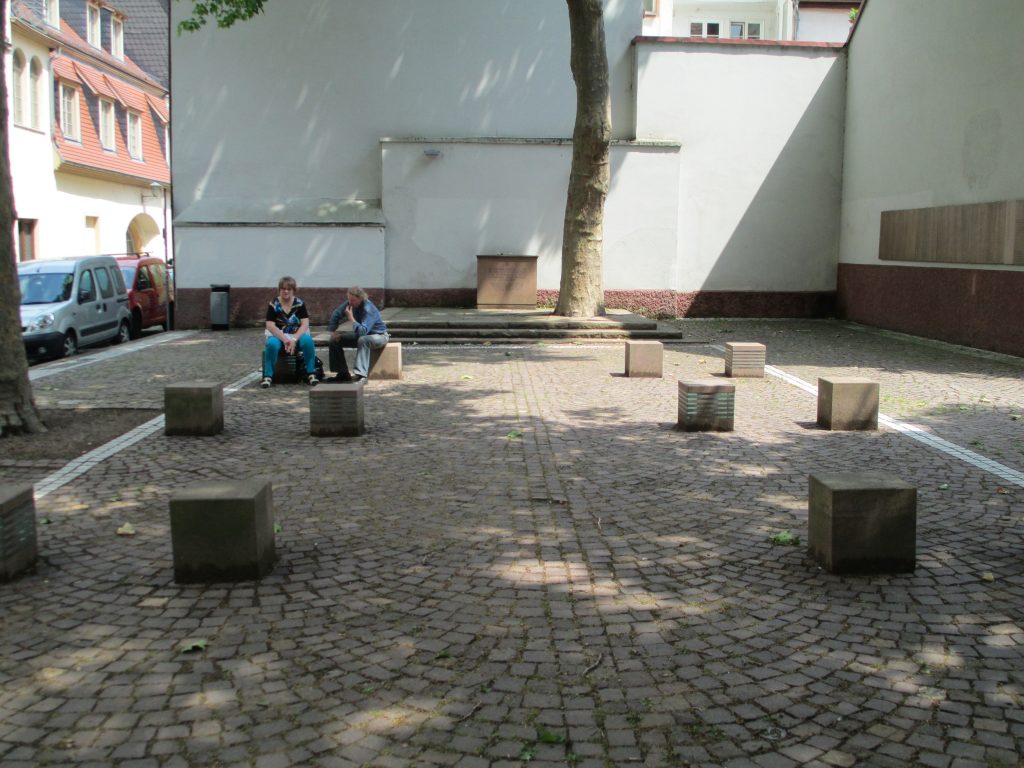
Constituting archives
The “Central Archive on the History of the Jews in Germany”, previously kept in several locations, was brought together in 2021 in the premises of a former tobacco factory.
It was made available to the public in 1987 and contains valuable documents on the communities of the various German cities as well as documents of all kinds, such as letters from Jewish soldiers fighting on the front lines during the First World War or files on survivors of the Shoah. The German Ministry of the Interior, in coordination with Jewish institutions, is actively involved in the creation and maintenance of this library.

Trondheim’s synagogue is doubly unusual: it is the northernmost synagogue in Europe and the only one that has served as a train station, before the building became a synaogue in 1925!
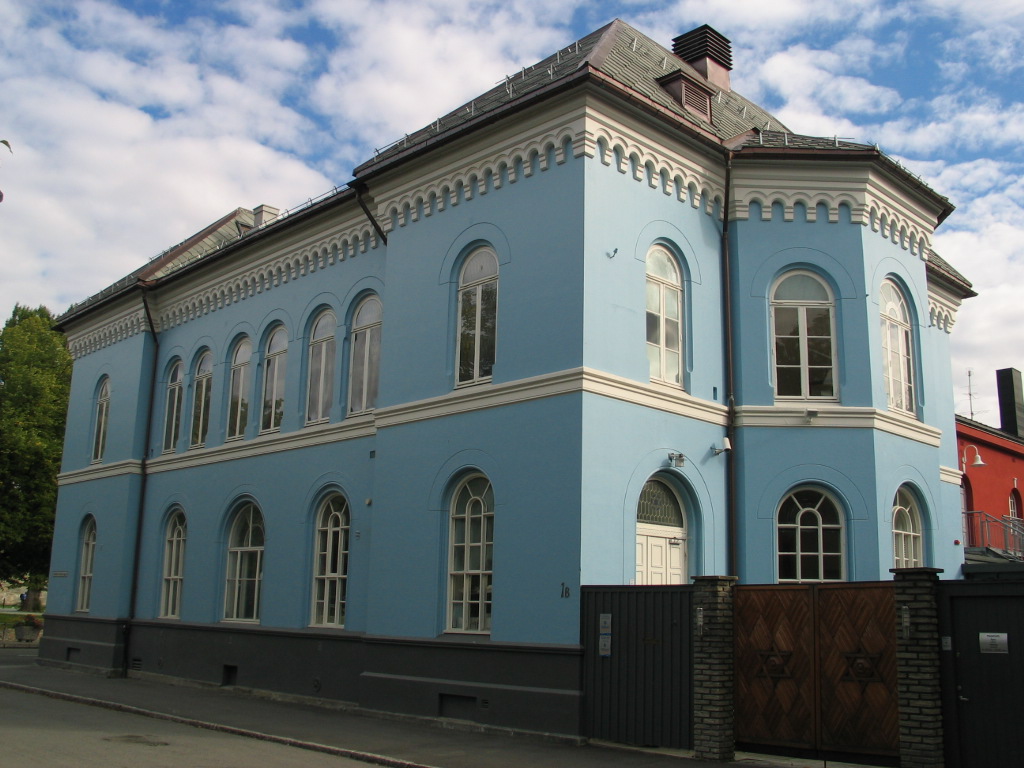
Jews first settled in Trondheim in the 1880s. They quickly became very integrated, participation in all economical, social and cultural aspects of life. The Jewish community in Trondheim has never really recovered from the mass deportation of its members in March 1942. The city’s Jews were arrested by the Norwegian police and were detained at the Falstad camp, near Trondheim.
Today, the synagogue also welcomes the city’s Jewish Museum. The museum opened in 1997, celebrating the city”s 1000th anniversary. The latter proposes two permanent exhibitions. One devoted to the life of Jews in Trondheim and in the area. A second one focuses on the historical aspect of the Jewish community in Trondheim, especially during the Holocaust and the impact thereafter.
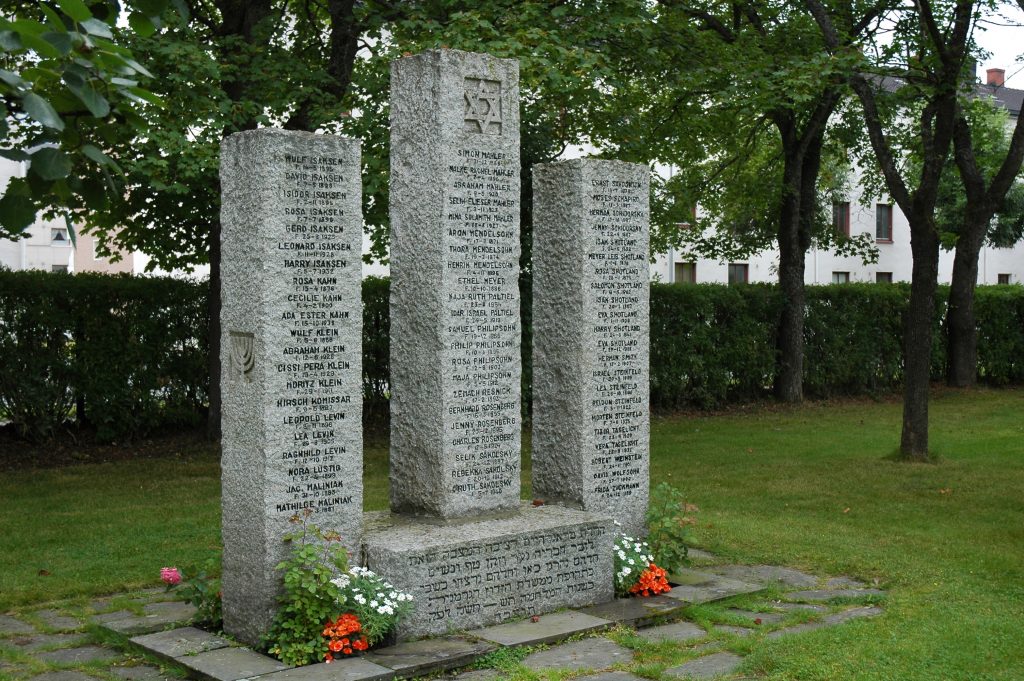
The museum also focuses on themes such as immigration, diversity, identity, integration, antisemitism before and now, and genocide together with the relationship between minority culture and the societal majority. Educational programs have been created by the museum and a large number of the museum’s visitors are pupils from primary school and high school as well as students.
A Holocaust Mémorial has been built at the city’s cemetery.
Interview with Tine Komissar, Manager of the Jewish Museum of Trondheim
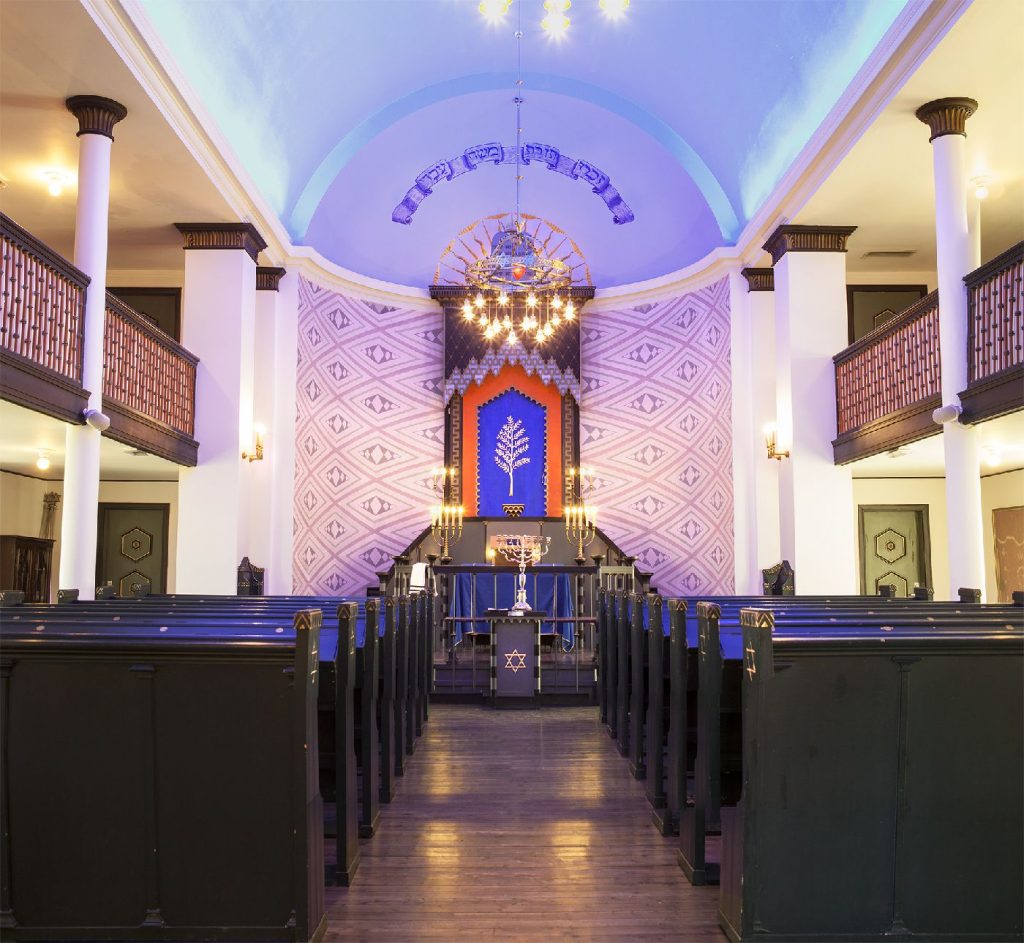
Jguideeurope : Can you present us some of the objects shown at the museum?
Tine Komissar: Here are 4 objects I’m happy to present to you.
Prison suit. It was owned by Julius Paltiel of Trondheim (1924-2008). Most of the prison uniforms from the Nazi concentration camps during World War II were made in the sewing barracks at some of the larger concentration camps, including Dachau, Sachsenhausen and Ravensbruck. Despite the fact that the uniforms were made in different sizes, which were not marked on the suits, the suits were not distributed adapted to the size of the prisoners. The prisoners therefore had to adapt their own prison uniforms so that they fit better.
The marks on the suits consisted of a rectangular shaped patch, usually in cotton, with prisoner numbers in addition to a triangular-shaped patch with letters. The triangle referred to the different types of prisoners, and was color-coded; yellow triangle for Jewish prisoners, red for political prisoners, green for criminal prisoners, black for “antisocial” prisoners or Roms, pink for gay prisoners and purple for prisoners belonging to Jehovah’s Witnesses. The letters in the triangle referred to nationality.
This prison suit belonged to Julius Paltiel. In October 1942, he was deported by the Nazis from his home in Trondheim. He was detained at Falstad prison camp, before being sent on to Bredtveit prison in Oslo. In February 1943, he was sent with the ship D / S Gotenland to the concentration camp Auschwitz. Upon arrival, Julius was taken out to forced labor. He miraculously survived his stay in Auschwitz, and the death march of the Buchenwald concentration camp. In the weeks before the liberation in 1945, Julius went into hiding from the Nazis, who systematically picked out the Jewish prisoners in the camp. Everyone who was gathered was shot. The SS soldiers followed orders from Berlin that everyone should be exterminated.
In order not to be discovered, Julius tore off the yellow mark on the prisoner’s suit. He then took a non-Jewish mark from a dead prisoner and sewed it on his own suit to make it harder to detect that he was Jewish. This is why the suit has a red triangle, as shown in the picture. Buchenwald was liberated by American forces on April 11, 1945.
When Julius returned to Trondheim after the war, his family and many friends were gone. He resumed the family business, spending the rest of his life telling his story, including to thousands of young people around the country.
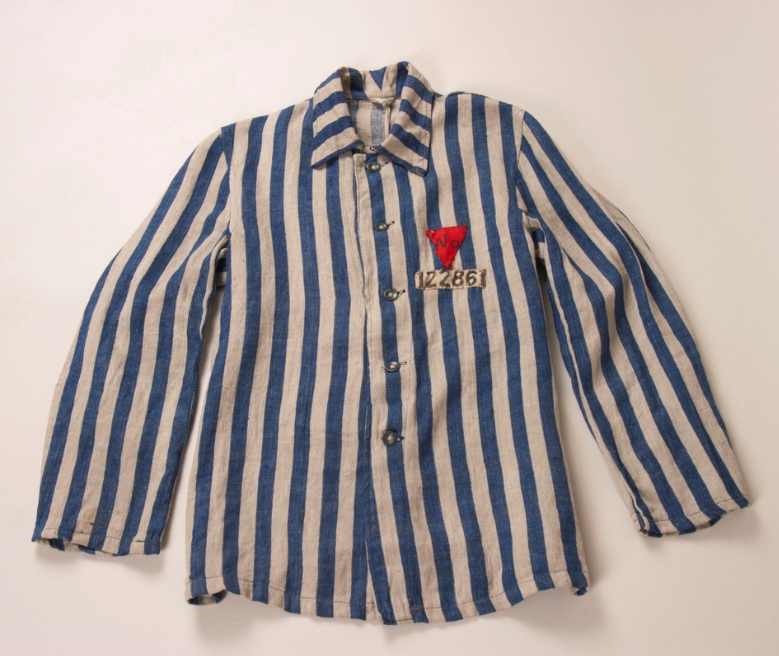
Wedding dress. It belonged to Malke Rachel Mahler (f. Leimann). She was born on April 2, 1896 in Śniadowo, Poland to parents Samuel and Lea Leimann. She came to Norway and Trondheim in 1916. Simon Mahler had already been in the country for three years. He was born on December 31, 1886 in Saldus, Latvia. He made a living as a transport trader and had traveled a lot both in Sweden and in Norway when the two met.
Malke and Simon married in 1916/1917. They settled in Tempe, having five children: Sara Bella (1918), Abraham Bernhard (1920), Salomon Hirsch (1922), Selik Elieser (1923) and Mina Scholamis (1927).
Malke, Simon, and the children Abraham, Selik, and Mina Mahler were deported and killed in Auschwitz during World War II.
Only Solomon and Sarah survived. Salomon managed to escape to Sweden. Sara was married to a non-Jewish man, and was not deported but imprisoned in several concentration camps in Norway during the war.

Cart, Production 1895 – 1905. The cart is probably from approximately 1900. Hennoch Klein came to Norway from Lithuania in the mid-1890s. He settled in Trondheim in 1901, after several years as a transport trader. Here, he started the business H. Klein in 1902, which operated in Trondheim until 1978. A continuation of the store, Kleins, is still run today by Henoch’s great-grandson, Robert.
Henoch Klein’s son, Josef, has said that every day he pulled the cart with him from his home in Øvre Møllenberg street to the family-run business, H. Klein, which in the 1910s was located by Bakke Bridge in Trondheim. The origin of the carriage is uncertain, possibly it was taken by the Klein family when they moved to Trondheim from Lithuania in the 1890s.
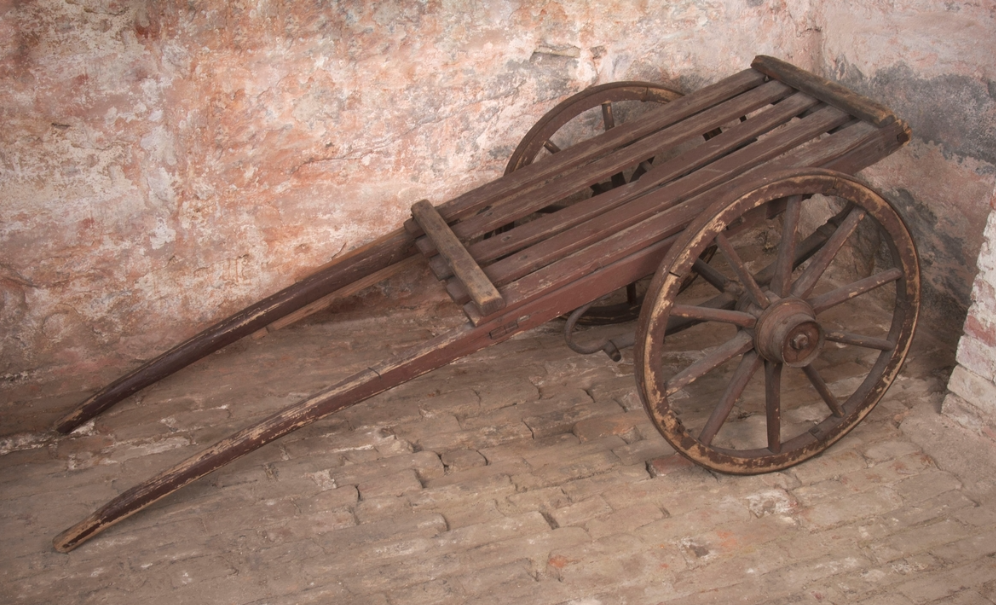
Kochbuch für israelitische Frauen, Rebekka Wolf (born Heinemann). A beautiful little cooking book with additional information on the blessings on shabbat and high holidays and advise on keeping a Jewish household. Also advise on making meat kosher. A special chapter is dedicated to the food on Pesach.
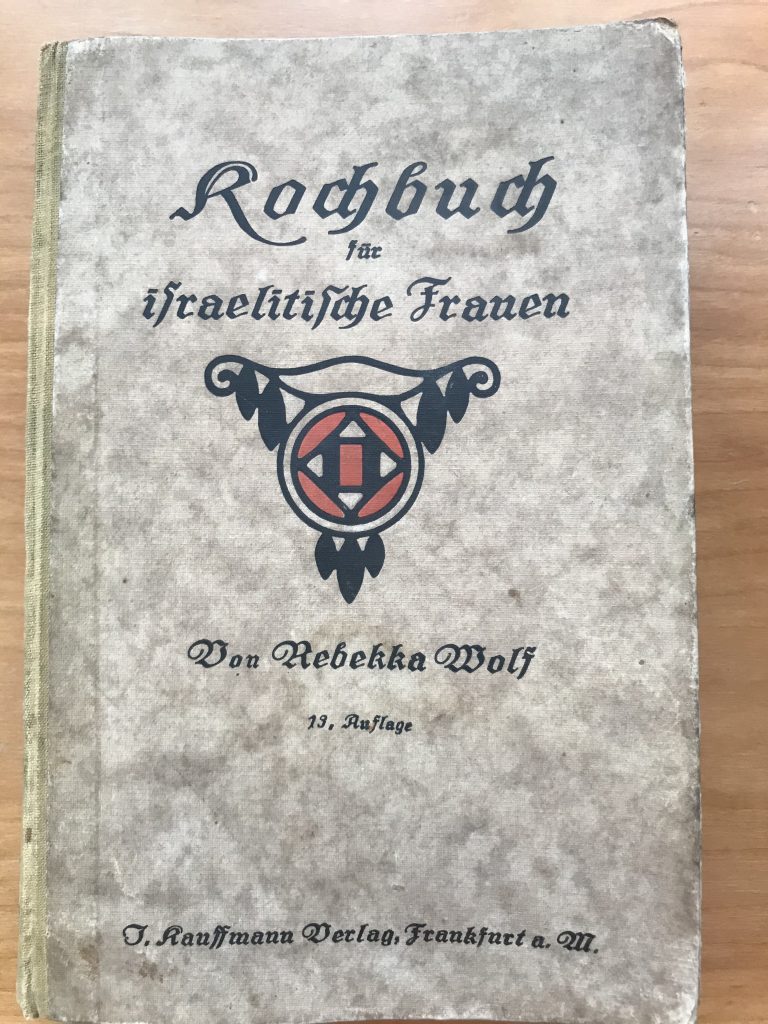
Can you tell us a bit more about the educational programs created by the museum?
The educational programs are directed for Norwegian student from 12 -25 years old. The Jewish Museum of Trondheim offers a variety of teaching programs for primary school, high school and college/university.
- “Norwegian-Jewish traditions, rites and culture”: An educational program which encourages active learning through activities with, for example, ritual objects. The pupils get to research the synagogue and study the similarities and differences between a synagogue and other places of worship. Through this learning resource, pupils will learn about Jewish symbols, holy days and traditions. If desired, pupils can learn about kosher foods. Educational films, which give an introduction into how Jewish holidays and ceremonies are celebrated in Norway, will also be shown.
- Home. Gone. The Jews from Trondheim: This program gives pupils an introduction to the history of the Jews from Trondheim and what happened in the city during the Second World War. By exploring the exhibition and the application, pupils will gain knowledge of Norwegian-Jewish history. The history is told through individuals and family histories. By doing this, the Jewish history becomes more concrete and alive. Pupils will also gain first-hand experience of historical source material which gives an insight into Norwegian war history.
- Nothing is as it seems – conspiracy theories and source criticism: Conspiracy thinking throughout world history has had catastrophic consequences, such as ethnic cleansing and genocide. Social media has made it easier than ever to spread conspiracy theories. In order to evaluate which information is reliable, you need skills in source criticism. This educational program makes use of film, websites and group activities in order to show pupils what characterizes conspiracy theories, and how we can identify them.
- Jewish footprints in Trondheim – Guided Tour: A historical journey through the downtown of Trondheim. Over the course of two hours, the guide will lead the pupils around central points in the city where Jewish families from Trondheim lived and worked. Through the guided tour, the pupils will get to know the Jewish history of the city, from when the Jews migrated to Norway in around 1880, through to the Second World War and up to the present day.The guide will have objects such as photographs and letters which belonged to the people who lived at the different addresses along the tour route. The tour gives the pupils an opportunity to reflect on ethical questions linked to human worth and attitudes, in addition to questions about how it is to be a refugee and immigrant in Norway in today’s society.
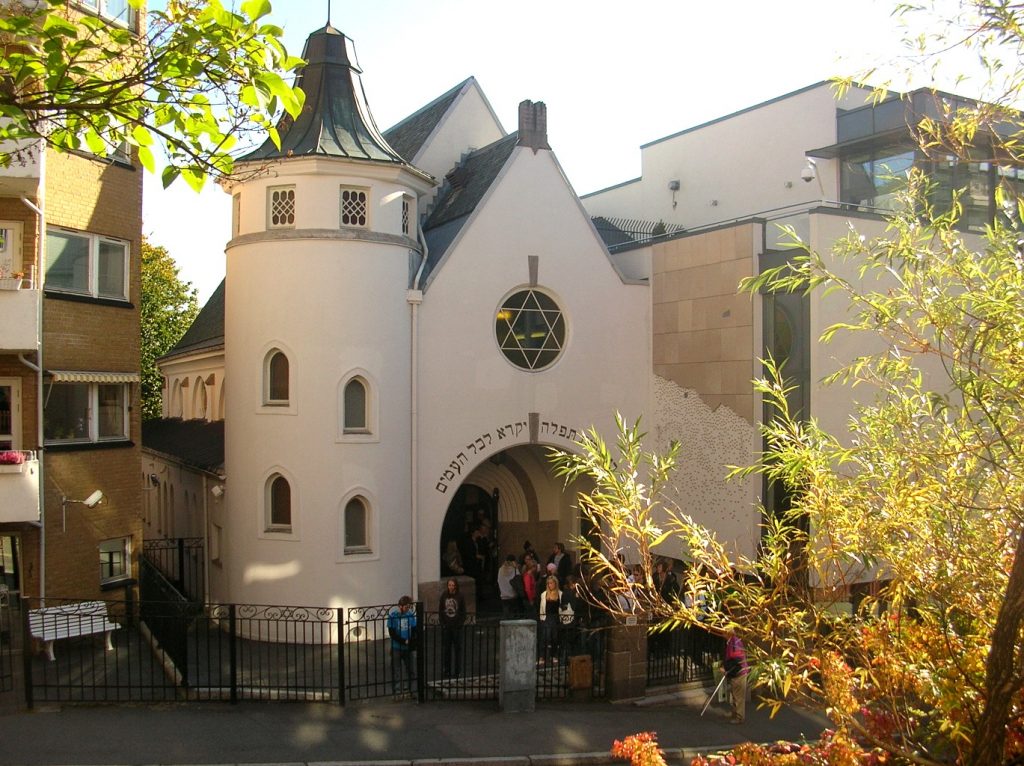
It was not until the law passed in 1814, prohibiting the entry of Jews into Norway, was revoked in 1851, that Jews could officially settle in Oslo. A small Jewish community was organised and recognised in 1892, with 29 members.
Following a separation of the community, two separate synagogues were opened in 1920. Norwegian Jewish cultural activity developed, especially through the press. First the monthly Israelitin in 1909, then Ha-Tikvah in 1929. A year later, the Community only numbered 852 persons.
During the Second World War, more than half of the Jews in Oslo managed to escape to Sweden, with the very active help of the Norwegian Resistance networks. The rest were deported and murdered.
In the aftermath of the Shoah, the survivors formed a community again. This community runs the synagogue, but also social services and welcomes tourist families for Shabbath dinners. School visits to the synagogue have been organised since the 1970s to enable Norwegian children to learn more about their country’s history.

Although there were less than 700 Jews in Oslo in 1968, the community experienced a revival in the 1980s, notably thanks to Rabbi Michael Melchior. An intergenerational dynamic, as illustrated by the inauguration of a kindergarten and a retirement home.
Oslo’s Jewish community centers around the Mosaiske Trossamfund, one of the two synagogues built in 1920. This Orthodox Ashkenazi synagogue offers daily services. It became quite active in the 1980s when Michael Melchior, the son of Rabbi Bent Melchior, became Oslo’s rabbi. In 1992, the Community celebrated its 100th anniversary.
The adjacent building houses the community center.
As part of the Norwegian government’s efforts to make reparations for the spoliation of Jews during the Holocaust, the community has been able to renovate its buildings.
The town is also known for being the site of the historic 1993 Oslo Accords between Israelis and Palestinians.
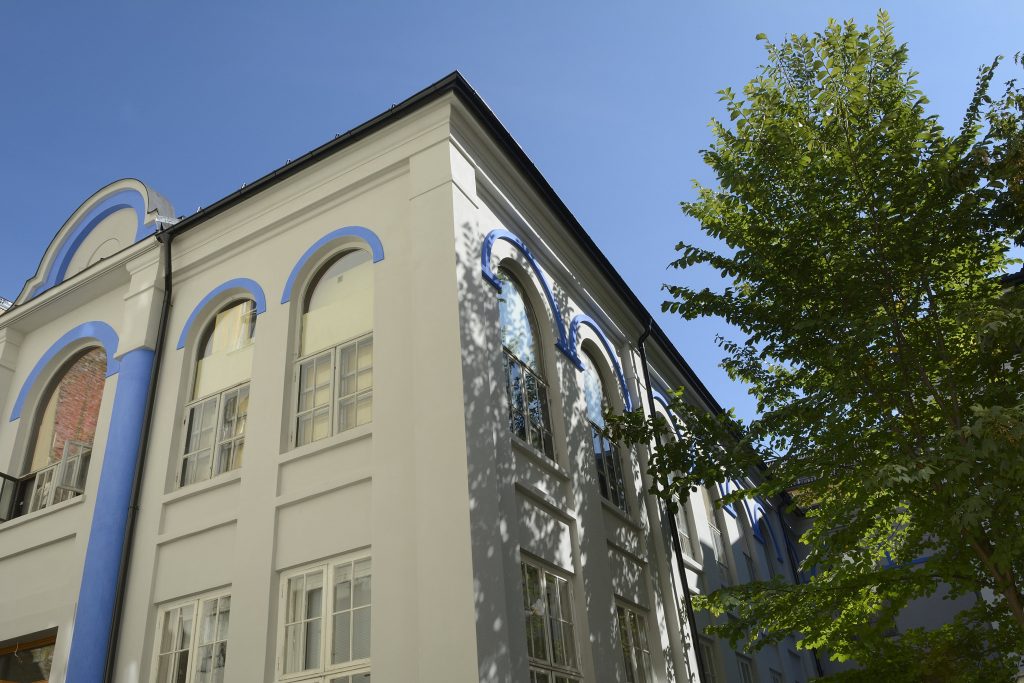
In 2006, with the help of restitutions made to the Jewish Community in compensation for the assets confiscated by the Nazis, the Norwegian Center for Holocaust and Minorities Studies was established. A permanent exhibition about the Holocaust is open to visitors. The Center is actually located in Quisling’s former villa.
The city also has a Jewish museum which is located in the building where another synagogue, built in 1921, used to be. The museum was officially inaugurated in 2008 by Haakon, the Crown Prince of Norway. The Museum holds three permanent exhibitions and offers pedagogic programs to schools in the region.
There are two Jewish cemeteries in Oslo. The ancient cemetery , in Sofienbergparken, dates from 1869 and was used until 1917. The new cemetery , in Helsfyr, has been in use since. Efforts have been made in recent years to preserve these sites, as well as the Holocaust memorial at Akershuskaia, outside the Akershus fortress.

Jews have lived in Göteborg since 1782. The Conservative (masorti) rite synagogue is located at the same address as the community center. There is also an Orthodox minyan in Göteborg.
Before settling in the city of Gothenburg in 1792, Jews were welcomed along with other minorities to the nearby island of Marstrand. Although the first synagogue was built in 1808, the presence of a rabbi did not materialize until 1837.

The current synagogue was built in 1855. It blends Moorish, Romanesque, and Byzantine styles inside, while outside you can see Scandinavian and Celtic designs.
The city’s Jewish population increased in the early part of the 20th century, with the arrival of Russian and Polish Jews fleeing pogroms and wars. Likewise during World War II with the arrival of Jews from Denmark, saved thanks to the courageous operation of the entire population and of the Danish authorities. Then also other Jews from Poland and Russia.
In 1968, Swedish Jews formed a community of nearly 1,500 people. Following Perestroika and the end of the Cold War, Jews from different countries forming the Soviet Union migrated to Sweden.
As in most other Swedish cities, Göteborg faces anti-Semitism propagated by neo-Nazi and Islamist circles. Thus, in 2017, the Göteborg synagogue was attacked with a Molotov cocktail. That same year, 600 neo-Nazis demonstrated on Yom Kippur.
The city also has a Jewish cemetery .
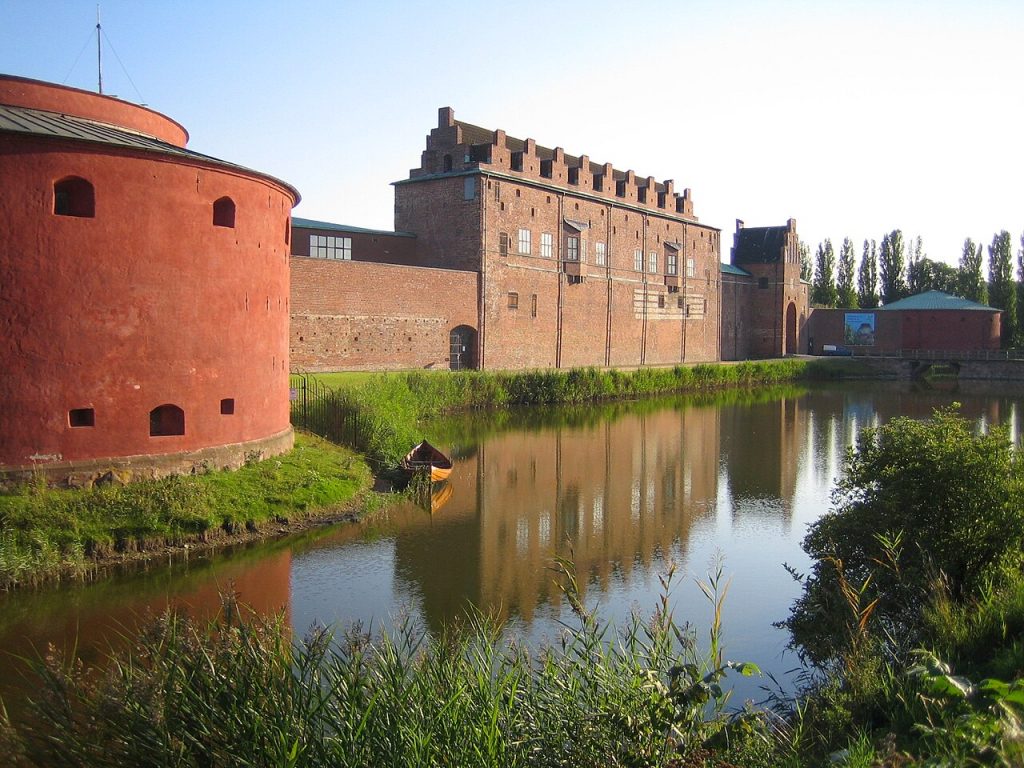
Danish Jews evacuated during the Nazi occupation arrived by boat in Malmö thanks to Count Folke Bernadotte. Some Jews died after their arrival and are buried in the city cemetery, where a monument honors their memory.
A Jewish community (originally made up of German Jews) was established in this city on the Baltic coast facing Copenhagen in 1871, shortly after the emancipation. It now numbers 1200 members. Its community center , partially financed from German reparations, was built in 1962. An Orthodox synagogue continues to function on the Föreningsgatan at the corner of the Betaniaplan. Built in 1903 in an eastern style, the synagogue is crowned by an onion dome reminiscent of Orthodox churches.

Malmö’s Jewish community carries out its activities in two suburban centers: the community center in Lund , which houses the Institute for Jewish Culture, is used only for holidays, while Helsingborg’s community center is always open. The Jewish community centers of Landskrona and Kristianstad, on the other hand, have been closed since the early 1990s. The interior decorations and furniture of Kristianstad’s synagogue are now being used by a Scandinavian community living in Raanana, Israel.
For the past 20 years or so, a wave of anti-Semitic attacks has reached Sweden, notably the city of Malmo, mainly due to neo-Nazi and Islamist movements. Whether it was attacks on Holocaust survivors, vandalism in cemeteries, or burning of places. An explosive was placed in front of the community center in 2012. Five years later, anti-Semitic slogans were uttered at a demonstration, and the chapel in the Jewish cemetery burned down. In 2020, during an Islamist demonstration, calls for the murder of Jews were made.
These particularly lofty acts in that city have forced Swedish Jews to leave it for Israel or other places where they feel more secure. The number of Jews has therefore declined sharply, by at least half, to less than 1,000 today.
In 2025, to mark the 250th anniversary of Malmö’s Jewish community, the city is organising a number of events in close cooperation with Malmö’s Jewish community. These include an exhibition devoted to Jewish heroines, which is on display in several municipal libraries.
The large university city of Uppsala does not have a Jewish community, but it does have a Jewish studies department.

When we think of Stockholm, we often envision the Viking past. Certainly, they are part of the history of the city, the country and the region. There’s even a Viking museum in Stockholm. But this city offers much more. For a start, its name means “a multitude of islets”: Stock (multitude) and holm (islet). And it’s on these 2 small central islets that you can start travelling back in time.
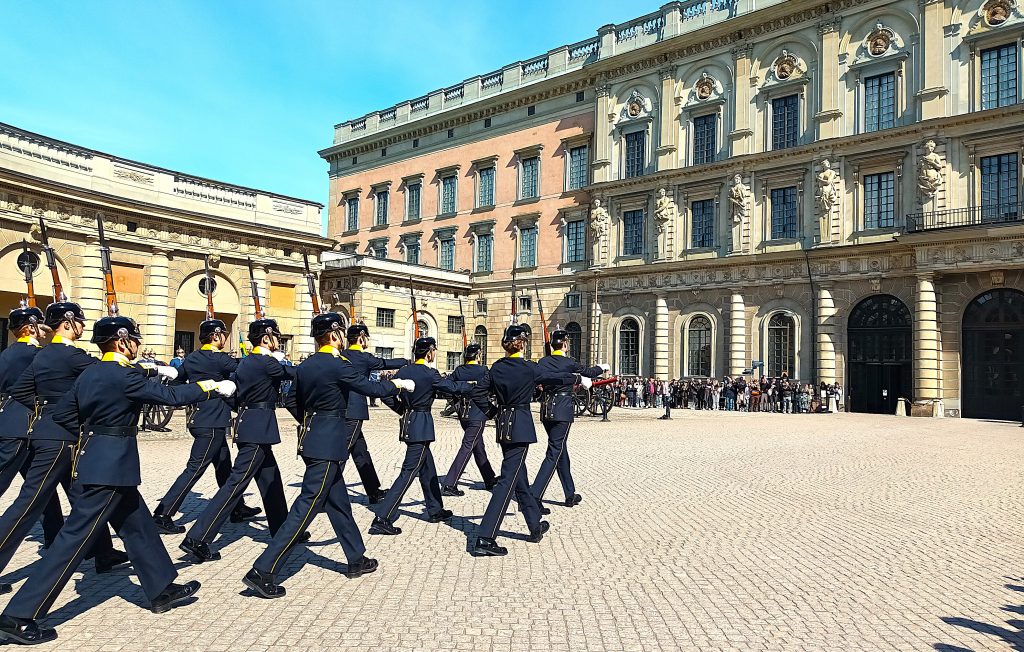
From Stockholm’s Royal Palace on Gamla Stan (“Old Town”) to the Museum of Modern Art and the Design Museum on Skeppsholmen. This style has and continues to influence our contemporary world, from buildings and department stores to ready-to-build furniture.

Not sure you’ll have time to visit all 24,000 islands. But a boat trip will let you discover a sample of them, whether by public transport or with the companies that organize such trips. So many different monuments await you. Whether it’s the beautiful cathedral, the Nobel Prize Museum, the Vasa Museum with its impressive 17th-century royal ship, the Nordic Museum… or the many green spaces, testimony to the care for the environment both on land and at sea.
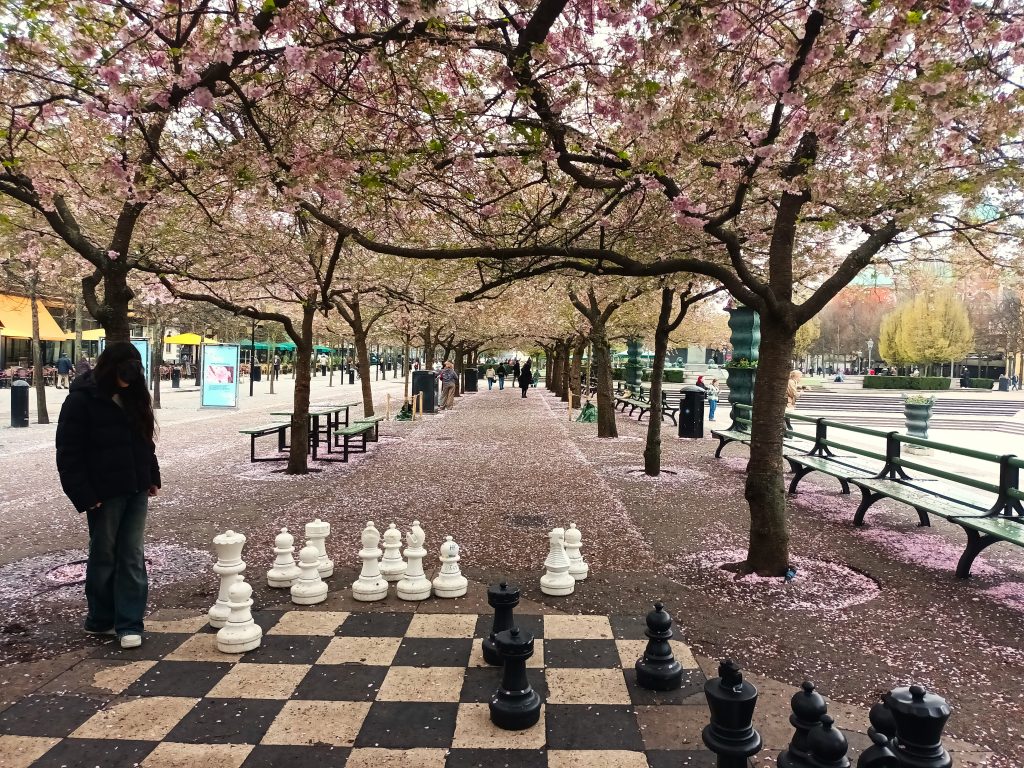
There’s also a wide range of lifestyles, between the dark and cold of the North during the winter days, and the desire for colorful night-time celebrations. As can be seen in the stylistic distance between the highly calculated changing of the guard at the Royal Palace (a famous tourist attraction) and the Abba Museum, which takes us back to the atmosphere of the carefree years.
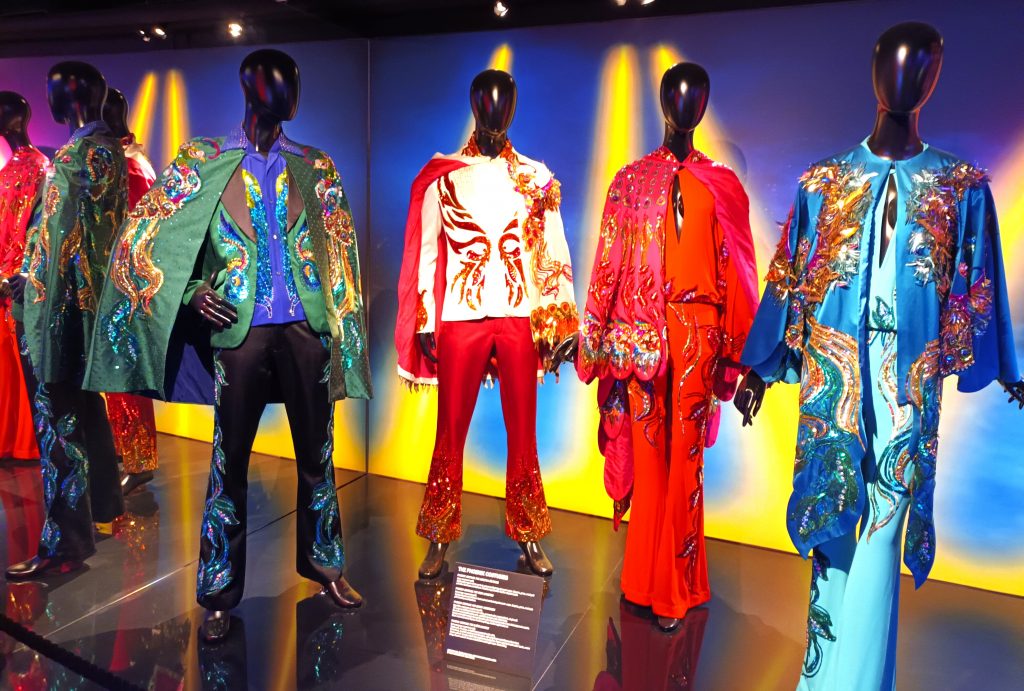
Not forgetting, of course, the city’s culinary specialties, especially fish, which you can savour at the Ostermalm market, bringing together tourists and locals alike.
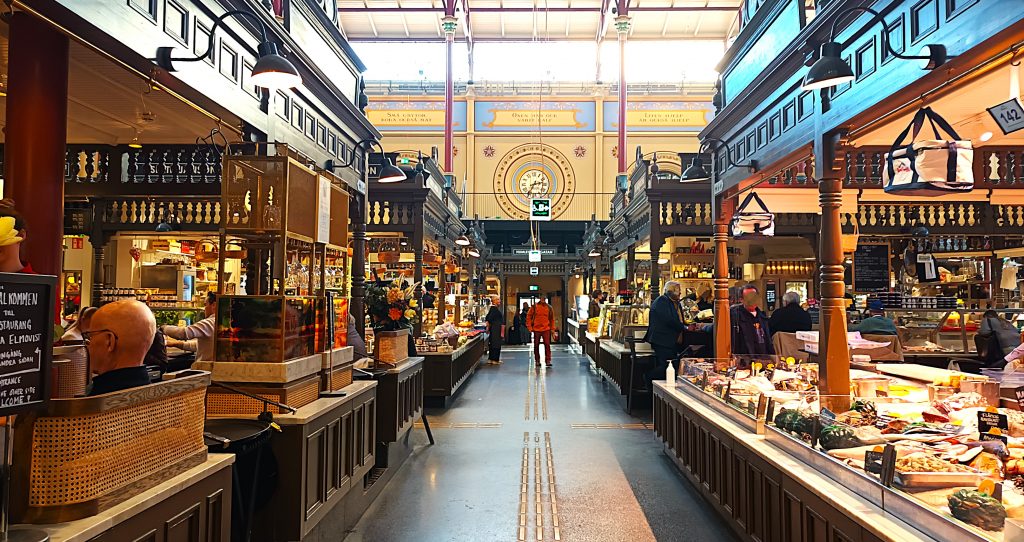
Until 1775, Jews were banned from entering Sweden, unless they agreed to convert to Christianity. That year, an engraver named Aaron Isaac pleaded his case for living in Stockholm without converting. Long administrative procedures, from office to office, even led to a meeting with Gustav III, King of Sweden. The king granted this right. Thus began the official settlement of Jews in Sweden.

Twenty years later, the synagogue housed in today’s Jewish Museum welcomed the Jewish community. The synagogue remained in use until 1870, when the small space could no longer accommodate the growing Jewish community of around 1,000 families.
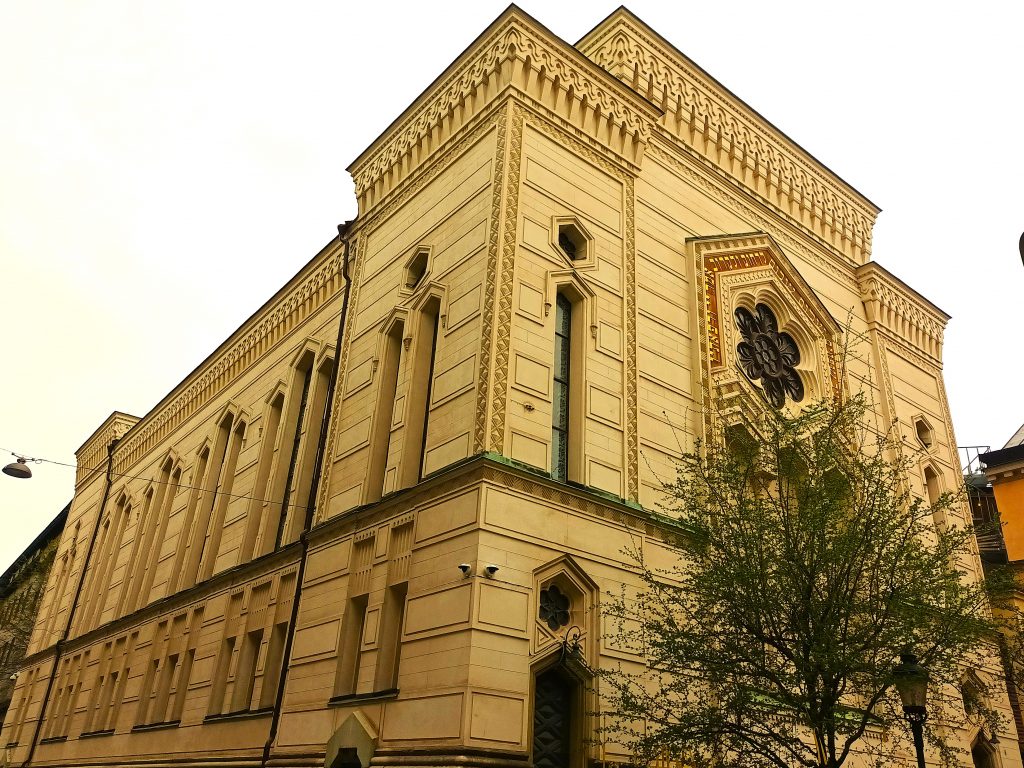
The Great Synagogue of Stockholm , which also serves as a community center, was built in 1870. It is located next to Raoul Wallenberg Square, named after the Swedish diplomat who rescued many Jews from Hungary and was arrested, then probably liquidated, by the Soviets.
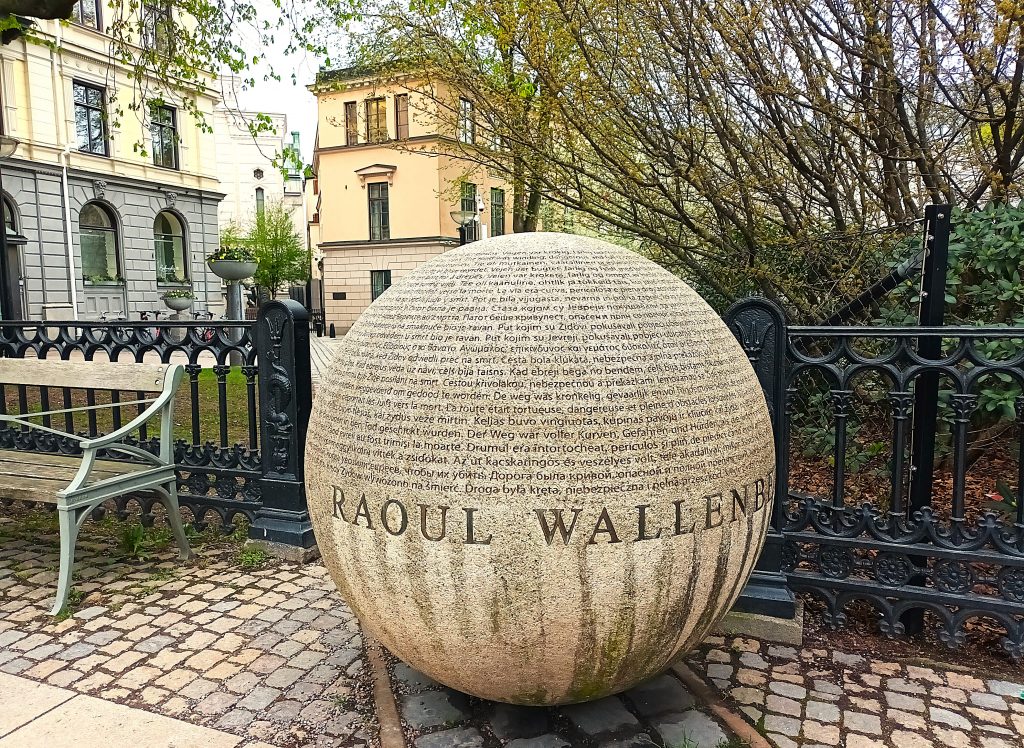
The oriental-style building can accommodate 1,000 worshippers following a massorti rite. In the synagogue’s community center, you’ll find a library whose main interest is the availability of the excellent magazine, Judisk Kronika, and historical works on Swedish Jews.
This modern Jewish community embraced the reforms underway in many Western European countries, as did others across the continent. Religious reforms were encouraged by the Enlightenment and the revolutionary spirit, but also by the national bond strengthened by the recognition of equal rights.
Sweden welcomed Jewish refugees from Eastern Europe at the end of the nineteenth century, fleeing pogroms. Living in the working-class districts of southern Stockholm, they established their own synagogue. Thus, Södermalm synagogue was built at the end of the 19th century. Jews from Eastern Europe worked mainly in textiles and commerce.
During the Holocaust, Sweden chose neutrality. A neutrality not necessarily appeasing to the Jewish community, which feared rapid geopolitical change. This fear was reinforced when, during the war, Swedish Nazi sympathizers began drawing up lists of Jewish compatriots to present in the event of a German invasion. Some Jews did not hesitate to buy weapons, just in case the situation evolved in this direction. On the other hand, let’s not forget that Sweden welcomed many Danish Jews who took refuge there during the formidable rescue operation.
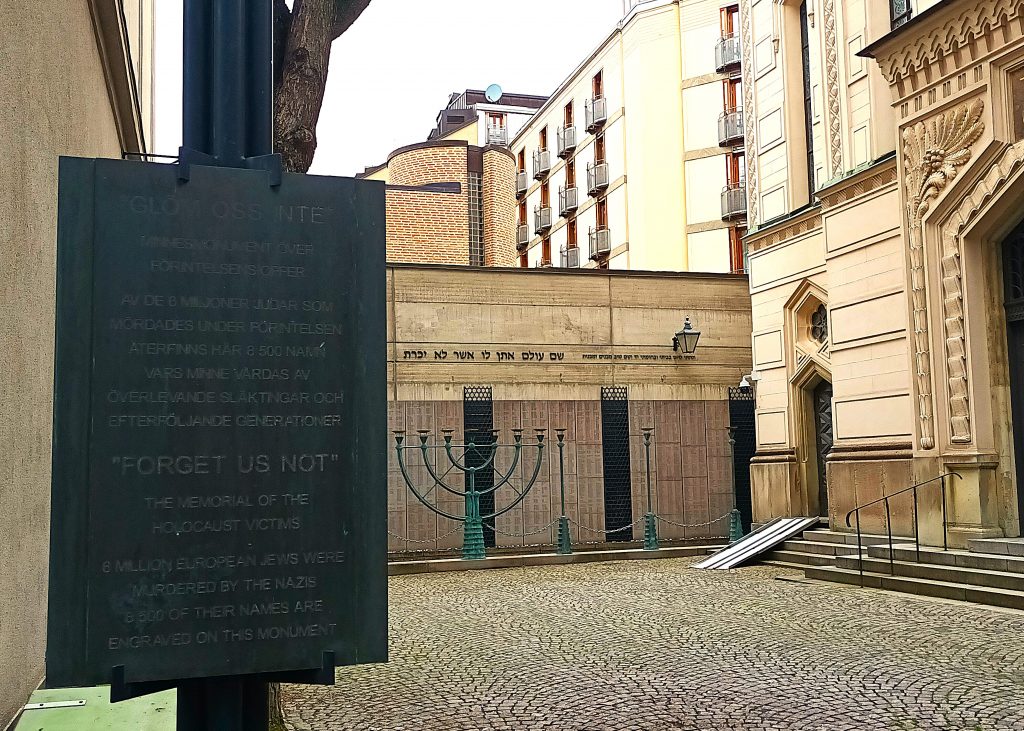
Towards the end of the war, when it became clear that Germany was going to lose, Sweden adopted a more openly pro-Jewish policy. The country opened its doors to Jewish refugees and survivors, welcoming almost 10,000 people in 1945. As a result, Sweden’s Jewish population tripled in one year. Half of these new arrivals eventually chose to settle in Israel or the United States, but the other half preferred to stay on, enjoying the gentle Swedish lifestyle.
A memorial to the victims of the Holocaust was erected in Stockholm in 1998. It was designed by sculptor Sivert Lindblom and architect Gabriel Herdevall. It was inaugurated by Sweden’s King Carl XVI Gustav. It is composed of 8,500 stone tablets.
Today, there are several other Swedish synagogues. The Adat Yeshurun Orthodox synagogue contains furniture from a Hamburg synagogue vandalized during Kristallnacht. The other Polish-rite Orthodox synagogue, Adat Yisrael , is located in the Södermalm district, in a 17th-century building.
There are several Jewish cemeteries in Stockholm. The first was built by Aaron Isaac in 1776. It bears his name, Aronsberg . In use until 1888, it contains almost 300 headstones. The Kronoberg Jewish cemetery was built in 1787. It housed 200 graves until 1857.
As both cemeteries were very small, the Jewish community acquired additional land. In Solna, architect Fredrik Wilhelm Scholander built the chapel and gates of the Northern Jewish Cemetery . In 1857, the so-called “Mosaic Cemetery in the North Cemetery” was inaugurated. Scholander was also the architect of Stockholm’s Great Synagogue. Among those buried here is Nobel Prize winner Nelly Sachs.
The Southern Jewish Cemetery was built in 1952. Its chapel was designed in 1969 by architect Sven Ivar Lind. Nowadays, most burials take place there.
The Jewish Museum of Sweden
The museum was founded in 1987 by Aron Neuman, a patron of the arts, then closed due to a move to the Gamla Stan (“Old Town”) district, in the country’s oldest preserved synagogue. Apart from the structure itself, which is still easily identifiable, the museum still possesses a few elements of the old synagogue, including the aron and the bimah.

When the synagogue moved in 1870, the Jewish community sold the building to a priest, and it was transformed into a chapel. Over time, the building changed function, becoming a police station and then an architect’s office. It wasn’t until 2019 that the Jewish Museum of Sweden opened its doors, leasing the space from the city. Renovations were carried out, but with an eye to preserving the synagogue’s original setting. Some walls were repainted white, and layers of paint were removed elsewhere to reveal old paintings that had once stood there. These paintings are among the few remaining today in the North German style. Most synagogues decorated in this style were destroyed during the Holocaust.
The museum’s permanent exhibition recounts the contemporary history of the Jews in this country, which began in 1775. It shows the settlement of the first Jewish community, with its leading figures.
Then, gradually, the arrival of Eastern European Jews in the nineteenth century. A collection of clothes hangers symbolizes the arrival of this population, who worked mainly in the textile industry and created some of the biggest local brands, as can be seen on the labels on the hangers.
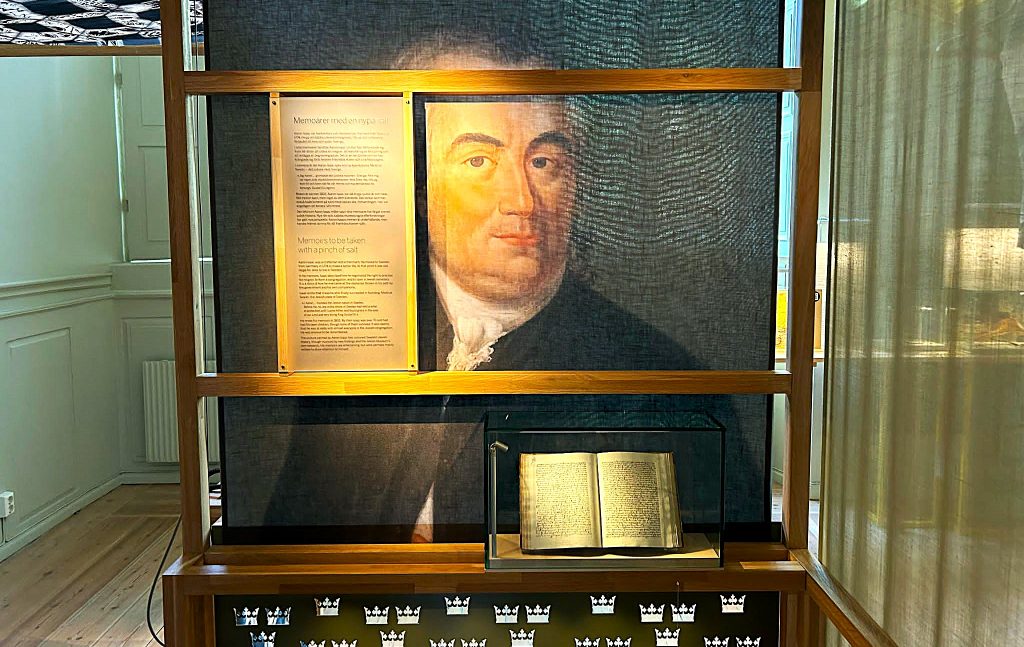
One area of the museum is dedicated to the persecution of Jews during the Holocaust. On display is a passport bearing the “J” stamp, which was required for entry into both Sweden and Switzerland, neutral countries during the war. They asked the German authorities to stamp passports in this way in order to deny Jews access to their territory. Preserved Jewish ritual objects from other European communities are also on display.
The museum’s permanent exhibition ends on a more positive note, presenting the development of contemporary Jewish life in Sweden. It highlights the reception of newcomer refugees, survivors of the Holocaust, and their contributions to the evolution of Swedish Jewish life. With some objects reminiscent of that era, notably those used for kiddush. And other ancient objects, including the small metal boxes found in many homes, collecting donations for the KKL and other institutions of the reborn state of Israel.

Among the new items acquired by the museum is an film recounting the settlement of Jewish Holocaust survivors in the small town of Boras. They settled there to work in the textile factories, helped by Jewish industrialists from Stockholm. Sweden’s rural exodus and the disappearance of many factories meant the end of many small communities, including this one, which is why this film and other objects in the Swedish Jewish Museum are so precious.
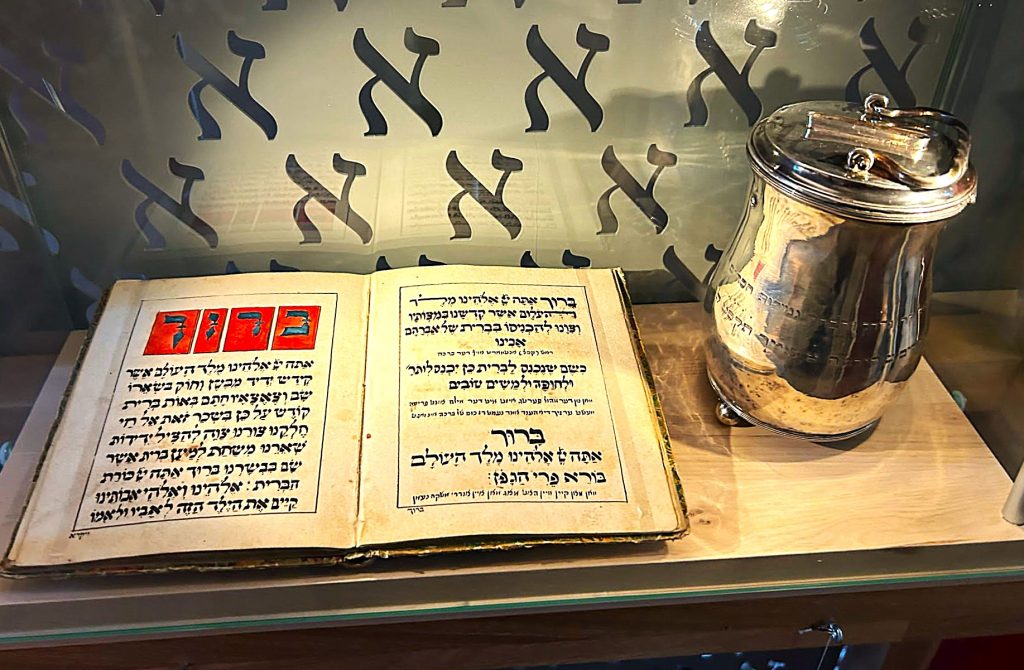
What used to be the balcony, where the women sat in the synagogue, is now home to small temporary exhibitions. These focus on Jewish rituals. In 2025, for example, religious headgears are on display, with both ancient and modern photos. Original items include kippot with a horse, a beloved Swedish symbol.
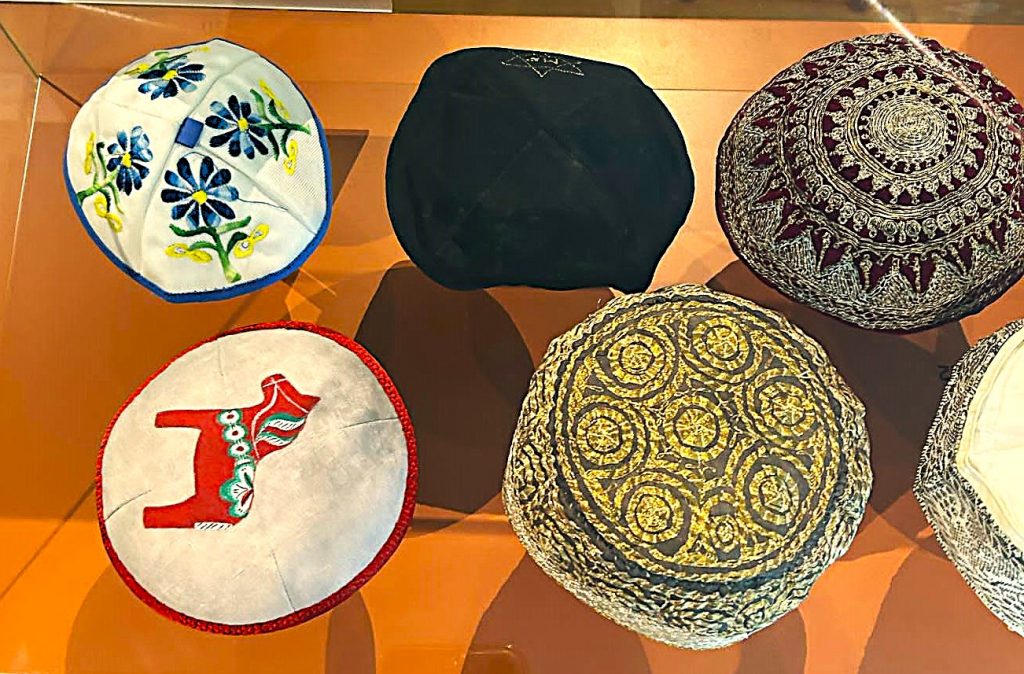
Major renovations were undertaken at the museum in 2024. The entire first floor was refurbished. The museum’s administrative staff left the first floor, in order to devote these spaces to temporary exhibitions, reserved for more contemporary subjects.

In 2025, the museum hosted a magnificent temporary exhibition dedicated to Sweden’s most famous photographer, Anna Riwkin (1908-1970). She is best known worldwide for her books dedicated to young people.
The exhibition features not only photos, but also numerous personal objects and writings. These include her diary, wedding album and portraits of her family taken when Anna was a teenager.
Born in Russia in 1908, she emigrated to Sweden with her family at the age of 7. Unlike the majority of Eastern European migrants at the time, her family was not very religious, but was very involved in the Zionist movement. Anna and her siblings found happiness in artistic practice, devoting their lives to it: author, translator, painter and photographer… None of them had children, except for their work.
At the age of 20, Anna Riwkin married Daniel Brick, one of the leading figures in Swedish Jewish life. In 1932, this journalist, publisher and committed intellectual founded Judisk Krönika, the Swedish equivalent of the Jewish Chronicle, a publication that still exists today. In this exhibition, you can see the letters they wrote to each other.

Throughout her career, Anna Riwkin took photos for various publications. She was known for her dance photos, portraits and advertisements. These constituted the first phase of her career, the second being devoted to reportage. From the 1930s onwards, she travelled all over Sweden and the world, photographing a whole host of people. As a result, she became a leading reference for the documentary presentation of Sami and Roma life. Anna was also the first to present a non-exotic image of these populations. Children feature prominently in her photos. Anna declared in an interview that, having been unable to have children of her own, the portraits of all these children helped to compensate for this pain.
She spent a lot of time abroad. The result was the annual publication of two collections of photos dedicated to these countries, one for adults and one for children. The photos were accompanied by texts written by Swedish authors. These books met with great success.
Less well known to the general public, however, and exhibited here, is Riwkin’s commitment to the presentation of Swedish Jewish life. So much so, that for four decades, from the 1920s to the 1950s, she was its principal documentarian. This involved a variety of projects, both personal and commissioned by community bodies. And, of course, photographs for the Judisk Krönika, run by her husband.
The exhibition features many moving photos from the first half of the 20th century: the arrival of Jewish refugees in Sweden, portraits, and the façade of the former synagogue that became this museum. Her commitment to Jewish culture was not limited to his talent as a photographer. Daniel Brick assisted her in founding the Institute for Jewish Cultures in Sweden.
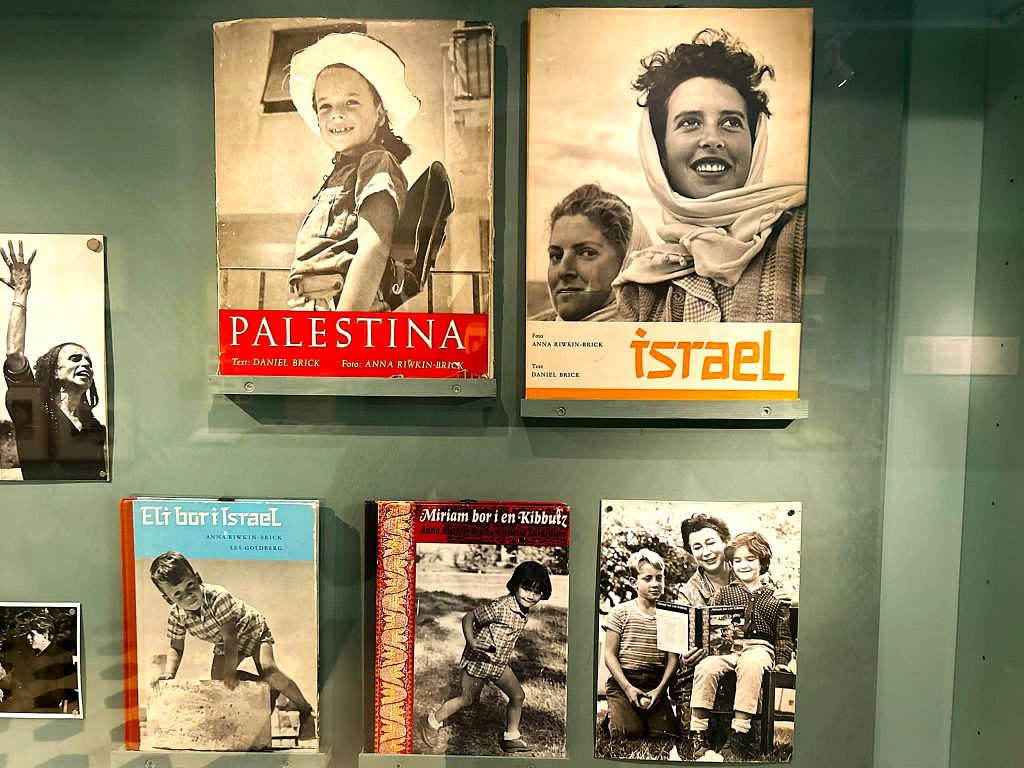
The exhibition closes with her abundant photographs taken in Israel in the 1940s, before and just after the creation of the state. Anna Riwkin did not limit herself either geographically or culturally, crossing the country from end to end. Capturing images of its diverse population: men, women and children from different cultures, religions and living quarters. She published collections based on these photos, with texts written by Daniel Brick. Both books can still be found in the homes of Swedish Jewish families today. For decades, she was recognized as the leading photographer of Israeli life, her photos becoming a worldwide reference on the subject.
Swedish Museum of the Holocaust
The museum is housed in a building near the railway station. Two exhibitions are presented in the left and right sections of the Swedish Museum of the Holocaust . Opposite the entrance is a small room showing videos of Holocaust survivors answering various questions. Depending on the themes requested by visitors, the computer presents these videos, recorded earlier. A very contemporary form of memory sharing.
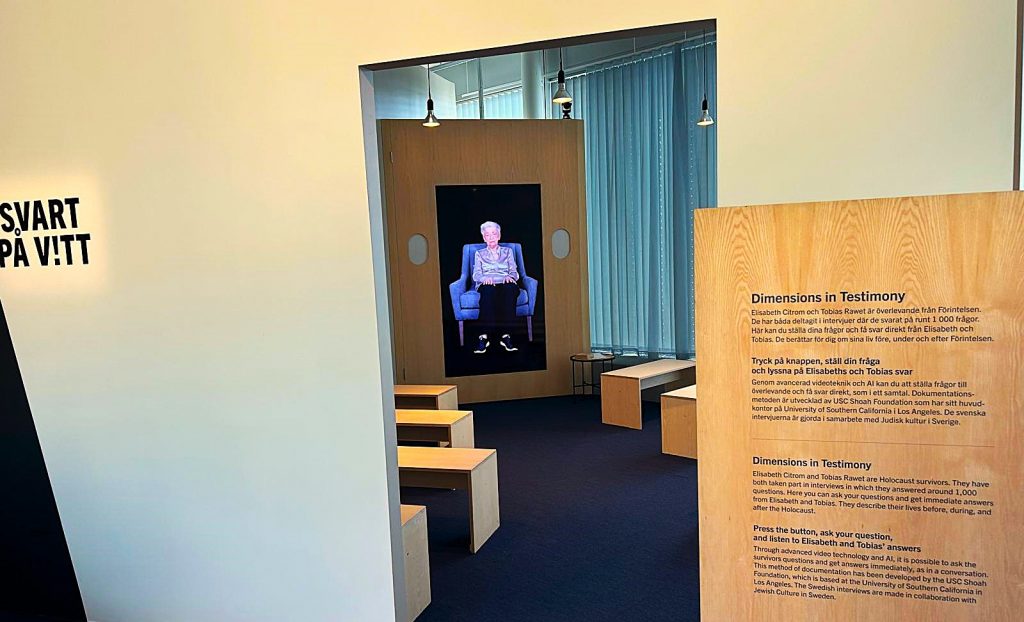
The 2025 temporary exhibition on the left-hand side of the museum looks at how the Swedish press dealt with the advent of Nazism and the Holocaust. The exhibition features many newspaper covers and newsreels shown in cinemas.
While some Swedish newspapers were coy in their presentation of the advent of Nazism, or chose pastel words to describe the murders, most condemned the Nazis’ policies. The latter did, however, have some allies in the press. You can, for example, discover the story of journalist Maria Leche Löfgren, who was one of the greatest campaigners for the diffusion of information on the fate of the Jews.
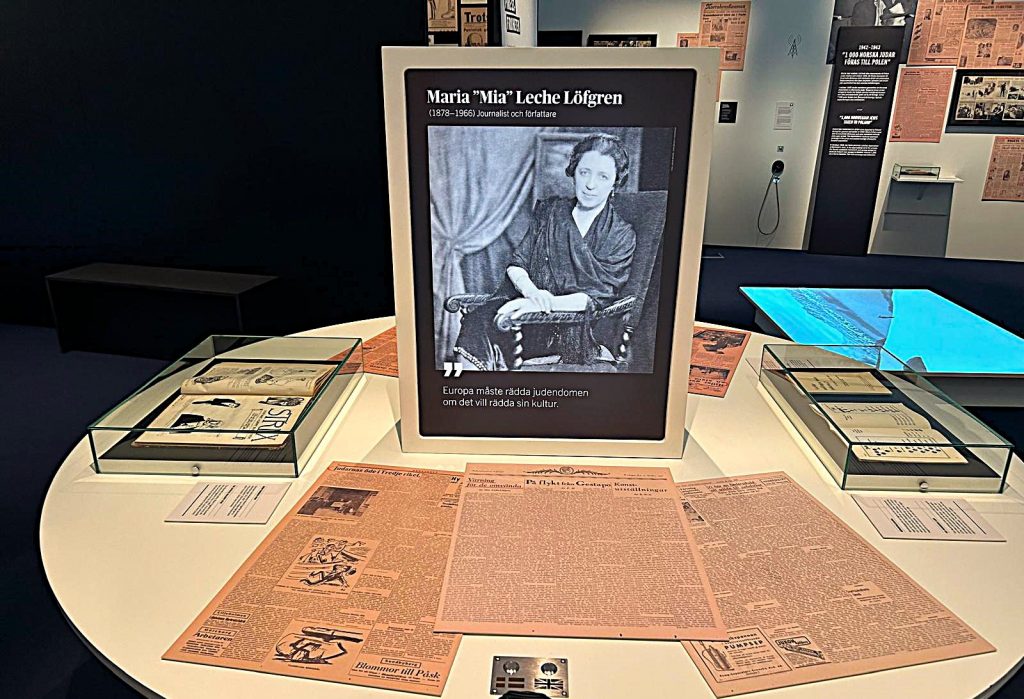
Also of interest are old newspapers from before the Second World War, attacking Jews. With the same far-right or far-left caricatures found in other European countries at the time, and now back in fashion: the Jews being accused of being a deicidal people by the former, or of conquering the world by the latter, or even, as some claim today, both at the same time.
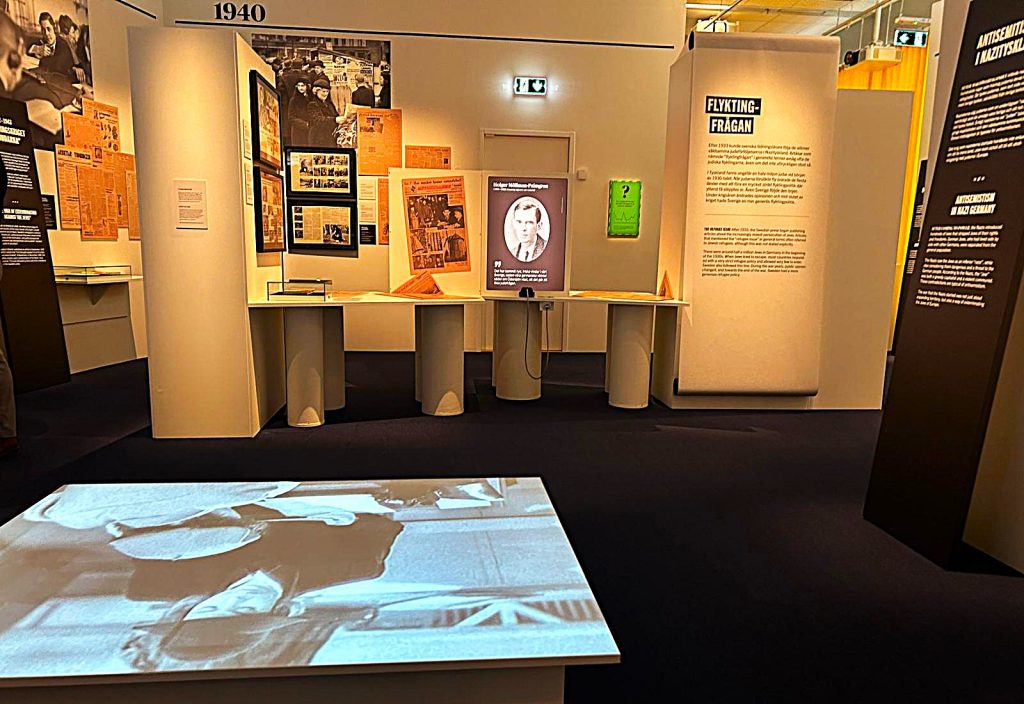
The signs explain that the Swedish government put pressure on the press not to reveal too much about the fate of the Jewish deportees. They also mention that when the Germans began deporting Jews from Norway in 1942, many Swedes signed up to defend the Jews. And that the country welcomed Danish Jewish refugees, not forgetting of course the courage of Raoul Wallenberg. Among the anti-Nazi portraits, we discover the story of Amelie Posse (1884-1957).
As in many contemporary exhibitions devoted to the Holocaust, much space is given to the testimonies of the last survivors and the Righteous and their families who saved Jews during the war. The museum also pays homage to authors, journalists, politicians and other individuals who had the courage to oppose Nazism.
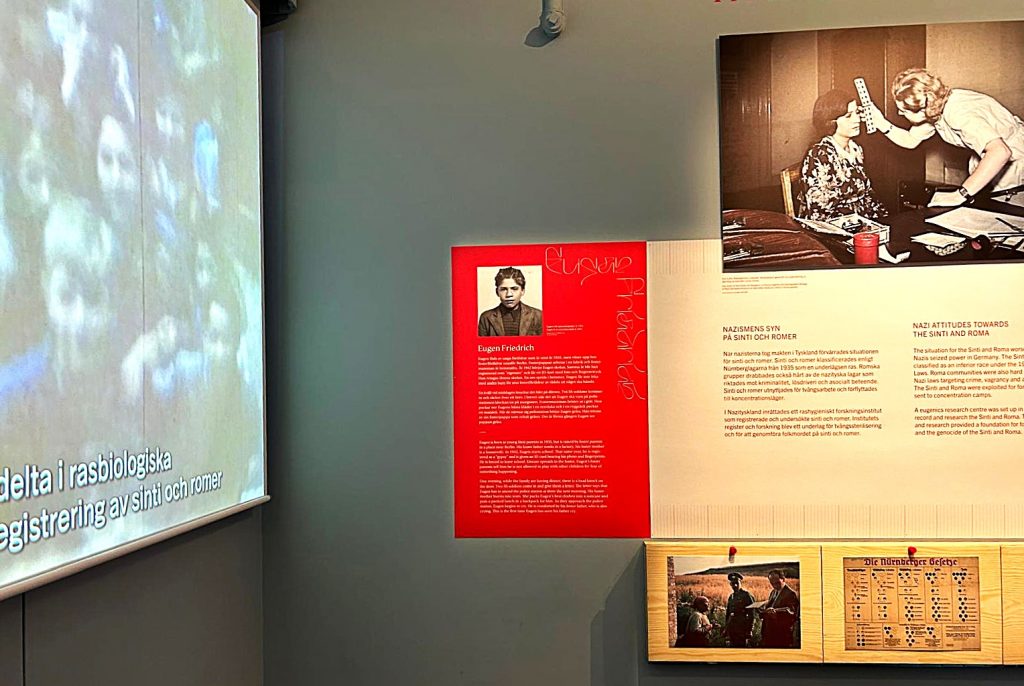
The temporary 2025 exhibition on the right-hand side of the museum is dedicated to Roma victims of the Holocaust. It shows the stages leading up to their deportation in Europe. It also pays tribute to their uprising in a concentration camp when the Roma rebelled, following a Polish political prisoner’s warning of their planned fate.
The exhibition tells the story of many families: men, women and children… how they were arrested and what happened to them afterwards. Who survived and who perished during the Holocaust. The exhibition also looks at how the Roma were discriminated against in Sweden for a long time. And how long it took the authorities to recognize this fact.
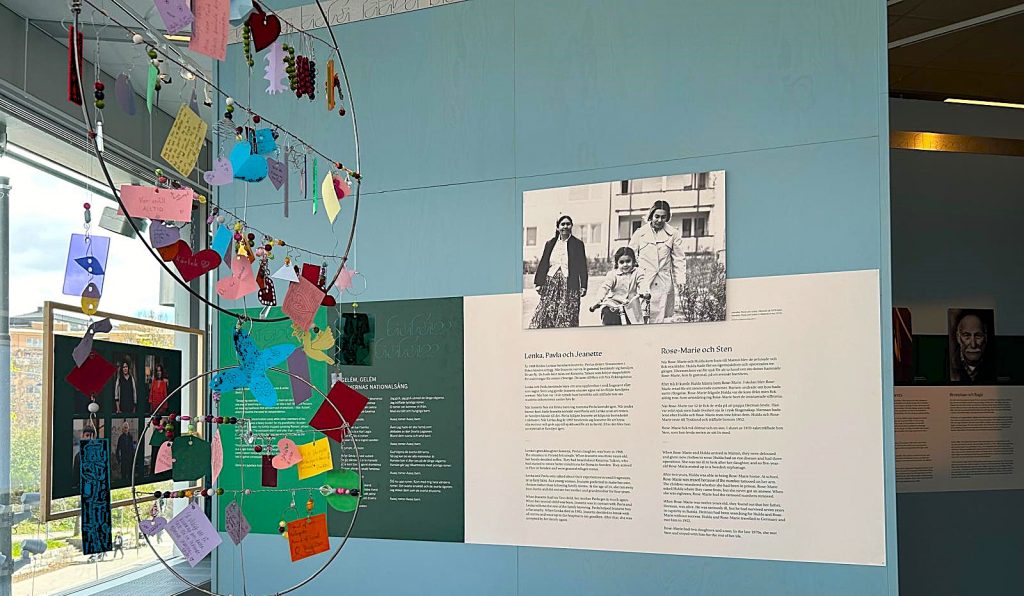
Among the moving stories told is that of Rose-Marie. A survivor of the Holocaust with her mother who suffered from numerous health problems and had no choice but to put the 5-year-old in an orphanage for two years. At school, Rose-Marie was bullied by many pupils who couldn’t understand why she had a number tattooed on her arm. The children thought it was a prisoner’s number. At the age of 18, Rose-Marie had the number removed from her arm. In 1952, she managed to trace her father in Germany, who had survived 7 years of captivity in Russia. The family was finally reunited.

Suomenlinna , a fortress island opposite Helsinki, was the site of the first Jewish place of worship. According to legal developments, a decree from 1869 and the letter from the Senate from 1876, demobilised soldiers were allowed to work in the civilian sector.
The city of Helsinki decided to donate a plot of land to the Jewish community in 1900 in order to build a synagogue. It is located on Malminkatu Street. A neighborhood where many of the city’s Jews lived at the time, who settled around the market where they could sell second-hand clothes, one of the only professional activities allowed in the 19th century.
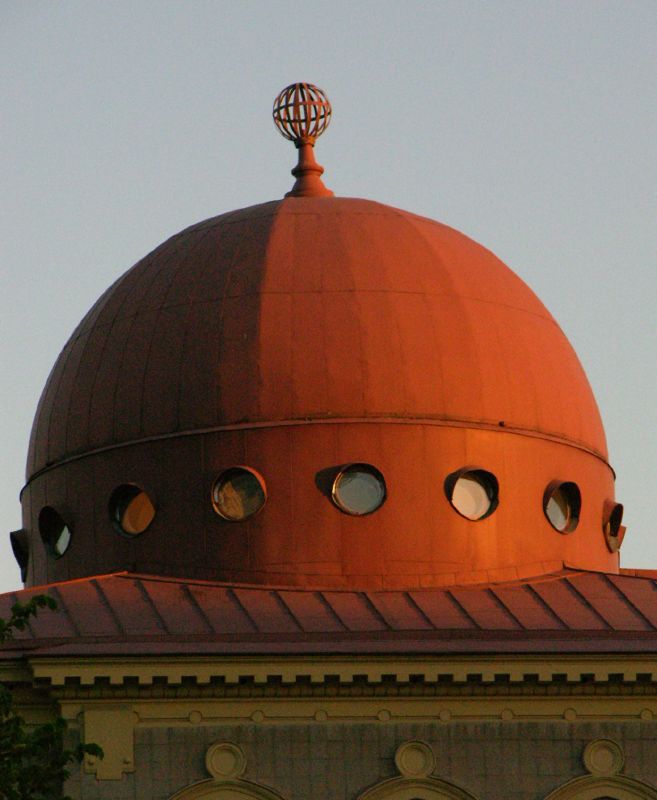
In the 1880s and 1890s, most Jews worked in the sale of clothes and fruit at the narinkka market. In 1870, the Narinkka market moved to Simo (meaning Simeon) Square. This market is located in the Kamppi district, which also housed the synagogue in 1906. Before there was an official synagogue, prayers were held in the Viapori Beth Midrash in the 1830s and forty years later in the Villa Langen. The Narinkka Market closed down in 1931.
The Helsinki Synagogue , famous for its Byzantine-style dome, was built by architect Jac Ahrenberg in 1906. Twenty years later it was extended. Since then, it can accommodate up to 600 people, seated around the bimah, which occupies the center and above which there is a magnificent chandelier. Built on three floors, the synagogue’s architectural style is similar to that of most synagogues of the time, with symmetrical windows in the center. And on the sides, three small round windows with a maguen david in each one.

In the years 1920-1930, the National Library of Finland hosted many works in Yiddish published during the last decades of the Russian Empire. The community also offered many theatrical performances in Yiddish at the time.
Makkabi Helsinki
In 1906, a group of young people from Helsinki founded the Makkabi Helsinki sports association, the oldest Jewish sports club in the world still in existence, with an unbroken history.
The club took part in the 1st division football competition in 1930, then at lower levels. Today, the main sports are bowling, futsal, basketball and floorball. The club celebrated its centenary in November 2006.
Elias Katz is the most famous athlete to have represented the club. Katz won gold at the 1924 Paris Olympics with Paavo Nurmi and Ville Ritola in the 3,000 metres team race. He began training at Turku’s main sports club, where he befriended the legendary Finnish runner Paavo Nurmi, who helped him improve his technique. In December 1947, as civil war raged in Mandatory Palestine, Katz screened a film in a British military camp in the Gaza region. Later that evening, he was killed by Palestinian sniper fire.
In 1967, a community center was built adjacent to the synagogue. It was made available to allow a Jewish life for the members of the community. Among these services are a Jewish school, classrooms and conference rooms, an auditorium, a retirement home, and a mikvah. The community center also includes a Jewish library of 5,000 volumes. A copper Torah sefer ornament can be seen there from the city’s first synagogue, built of wood in 1840.
The center houses the Hazamir choir (founded in 1917), which has already performed at the Finnish Cultural Center in Paris, the bi-monthly magazine Ha-Kehila and all Jewish organizations in Finland.

The city has two Jewish cemeteries located in the place of the city gathering most of the graves. An ancient cemetery built in the 1840s and a new cemetery in 1895. The first being closed and the second currently used by the Jews of Finland.
Today, the Helsinki Synagogue regularly hosts a few dozen worshipers during ceremonies and prepares vegetarian meals for Shabbat celebrated there. Most of the Jews in Finland are vegetarians. The synagogue is Orthodox, although most of the Jews in Helsinki are less observant. Morning prayers are celebrated in a small hall of the synagogue.
The few dozen members of the liberal movement have no place of worship and are attached to the liberal community in Copenhagen. Yiddish is experiencing a revival in Helsinki, in particular thanks to the international meetings of Limud (written Limmud in English).
The only glatt kosher hotel in Scandinavia, the Strand Hotel is located in the well-known spa town of Hornbaek. It operates between Passover and Rosh Hashanah and has a synagogue on the premises.

The Jewish community of Copenhagen has been active since the end of the 17th century. Today, most of Denmark’s 7,000 Jews live in Copenhagen. Abraham Salomon of Rausnitz was its first rabbi, appointed in 1687. Six years later, a Jewish cemetery was established in Mollegade.
Destroyed by a fire in 1795, no synagogue was active until a liberal one was built in 1833 in Krystalgade. Years later, orthodox and Sephardic places of worship were also opened.
The Royal Decree issued in 1814 gave Jews born in Denmark the same rights as all other citizens. Philanthropic institutions, schools, and old age homes have been opened since 1825. The number and presence varied then, according to historical events, especially the Holocaust.
When the huge majority of the Danish Jews and their relatives, about 8,000 persons, were saved by the courageous acts of Denmark’s royal, political and religious authorities as well as every level of society.

Most of the 3,000 Polish Jews who fled to Denmark during the 1970s settled in Copenhagen. Marking the continuous blossoming of the Jewish community in Denmark, Queen Margrethe II attended in 1983 the service in Copenhagen’s synagogue, celebrating its 150th anniversary.
The following year, she participated in the celebrations of the Jewish community’s 300th anniversary in Copenhagen. In 1993, the Queen also participated in the events celebrating the 50th anniversary of the country’s rescue operation.

Its famous Great synagogue of Krystalgade was built in 1833 by the architect Gustav Friedrich Hetsch. It is defined by an architecture centering on an ark, influenced by Greek and Roman models.
The synagogue can welcome 900 worshippers. The community center is located next to the synagogue. All information about the synagogue is available at the Mosaiske Troessamfund, which houses a variety of Jewish associations. Mosaiske organizes visits of the synagogue from April to September and also provides Shabbat hospitality groups. An orthodox Community prays at the Makhzikei ha-Das Synagogue.
Among the social institutions, there’s a Jewish day school and an old age home. Religious and cultural organizations are also present in the city.

The Freedom Museum of Danish Resistance , which houses a important section devoted to the history of the Resistance movement and the Shoah. It was closed due to a fire on April 28, 2013. The damage caused was of such proportions that the museum had to be closed.
A new exhibition building was raised where it was located and reopened in 2020.
Designed by Daniel Libeskind, the Jewish Museum of Copenhagen presents Jewish life in Denmark through 400 years. The particular design of the Jewish Museum was influenced by the rescue operation during the Holocaust. The word “mitzvah” constitutes the emblem and concept of the museum. Therefore, the museum was designed around the courage demonstrated by the Danes.
It marks the positive experience which sums up Jewish life in Denmark and the special act of goodwill undertaken in 1943 by the population.

As explains architect Daniel Libeskind: “After entering the exhibition proper, the visitors are in a space constructed of a wooden floor with slightly sloping planes representing the four planes of discourse.
The entire exhibition space is illuminated by a luminous stained-glass window that is a microcosm of Mitzvah transforming light across the day. The Danish Jewish Museum will become a destination which will reveal the deep tradition and its future in the unprecedented space of Mitzvah.
The intertwining of the old structure of the vaulted brick space of the Royal Library and the unexpected connection to the unique exhibition space creates a dynamic dialogue between architecture of the past and of the future – the newness of the old and the agelessness of the new.”
The Royal Library contains the Simonsen Library which possesses an interesting Judaica section.

Digital facsimiles of the manuscripts acquired in 1931 from Professor David Simonsen are available for the public. Among the items which can be consulted, one can find a judeo-arabic letter from the 12th century and manuscripts from all periods since. Its most famous item is probably “Gemma’s prayerbook”, a Hebrew book written for the widow Gemma in Modena in 1531.
Documents came from 20 different countries, in 15 languages, which required some extensive handling of all those archives. And quite some time to ensure it would be handled in an apropriate manner. The total of the works constitutes about 26,000 processes of digitalization.
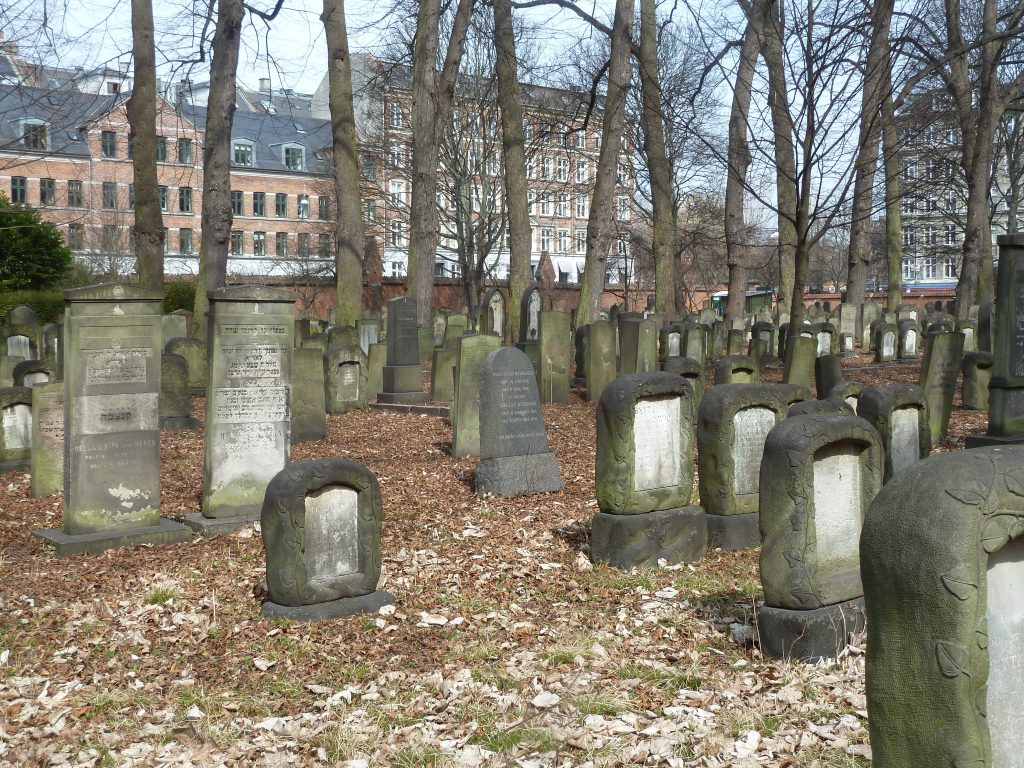
There are two Jewish cemeteries. The ancient one in the area of Mollegade, dating for four centuries. This cemetery can be accessed from April to September on Sundays, Mondays, Wednesdays and Thursdays. And the new cemetery in the area of Valby. The latter is open every day during daytime, except on Shabbat and Jewish holidays.
Interview with Janus Møller Jensen, Director of the Danish Jewish Museum
Jguideeurope : The museum made some major changes in 2022, what were the main ones?
Janus Møller Jensen: In September 2022, the museum reopened with a new main entrance and brand new exhibitions. The entrance was designed by Daniel Libeskind who, by this addition to the original architecture of the museum completed his work with an impressive and much more visible entrance to the museum. It also signaled a total relaunching of the museum with new exhibitions and a new way of presenting Danish Jewish history. We are in currently in a process of developing a permanent exhibition that will take the visitor on a journey through 400 years of Jewish life in Denmark. The guests will experience a first taste of this together with a strong special exhibition that focuses on the story of the escape and rescue of the Danish Jews in October 1943 in a wider context of the history of the 20th century.

Can you present to us three particular objects shown at the museum?
1. The story of the escape and rescue of almost all of the Danish Jews in October 1943 was the result of a common effort of the Danish population. But no one knew that it would a history of a rescue when the action against the Danish Jews was initiated the night between 1 and 2 October 1943. Some of the objects of the museum capture the personal drama of history. We have a life west that a mother sew for her daughter just before the escape across the Oresund to Sweden. It’s a very symbolic and strong object for the story of flight scenes doing what can be done to take measures to try and protect the children while fleeing. Some people actually lost their lives drowning during the escape.
2. Another strong object from the escape is the train ticket for the coastal train dated and stamped on 5 October 1943. Many Jews from Copenhagen sought by the help of others or on their own means t towards northern Sjælland to find transport across Øresund. The ticket is a return ticket bought, of course, to hide the fact that this was a one-way journey but at the same time symbolizing the hope of return that became a reality in May 1945, when Denmark was liberated by the allied forces from German occupation.
3. In the exhibition “Gateway to Denmark” that tells the story of the consolidation of Jewish life in Denmark in the eighteenth century and which is going to be part of the coming permanent exhibition of the museum, you find several precious objects. I must pick two: A prayer book and a challah cover. Both were produced in Denmark in the eighteenth century, and tells the story of both the establishment and the daily life of the small Jewish minority in Denmark through these beautiful objects across three centuries.
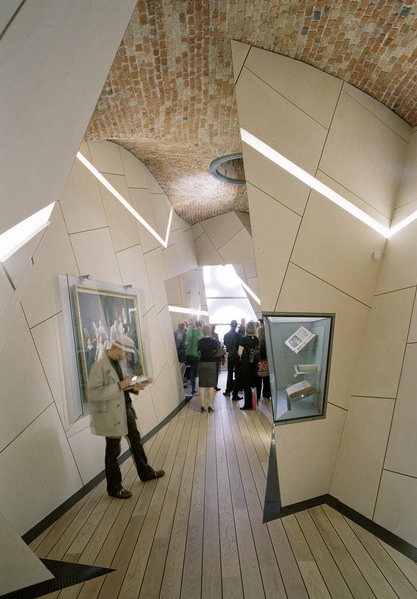
How is the courageous saving of the Jews during the Holocaust presented?
In several ways. First and foremost, in our spectacular architecture designed by Daniel Libeskind. Our entire room tells the story of the flight over sea and the uncertainty of trying to find one’s way. In many ways the unique architecture is one of the key objects of the museum. However, we also tell the story of the people that weren’t saved, and instead imprisoned in KZ-Theresienstadt. This story is currently the main theme of the special exhibition “Flight and persecution in the 20th century”.
Can you tell us about an encounter with a visitor or event participant which particularly moved you?
Talking to a visitor from America who had fled from Russia in the 1990’s, I was asked who so many Jews were saved. I replied they were naturally helped by neighbors. She looked me in the eyes and said “your neighbors don’t naturally help you; they are the ones that turn you in.” And indeed this also happened in Denmark. This conversation is a constant reminder of the need to balance the story telling of Denmark during the war. 99% survived Holocaust, but no flight is free, and war always has a price also for the survivors.
The terrifying war against Ukraine changes, of course, the function of these pages devoted to the Jewish cultural heritage of that country. Many of the places mentioned were razed to the ground by bombs. While these pages are not intended in the present time for tourism, they may be useful to researchers and students as historical references. References to so many painful histories during the pogroms and the Shoah, but also to the glorious history of Ukrainian Judaism, in its cultural, religious and Zionist dimensions. Wishing the Ukrainian people a speedy end to these atrocities of which they are victims.
Established in 1594 by the waywode Stanislaw Zolkiewski, Zolkiew was built, like other Polish cities, according to the Renaissance notion of the “ideal city” imported from Italy by theorist Pietro Cattanneo.
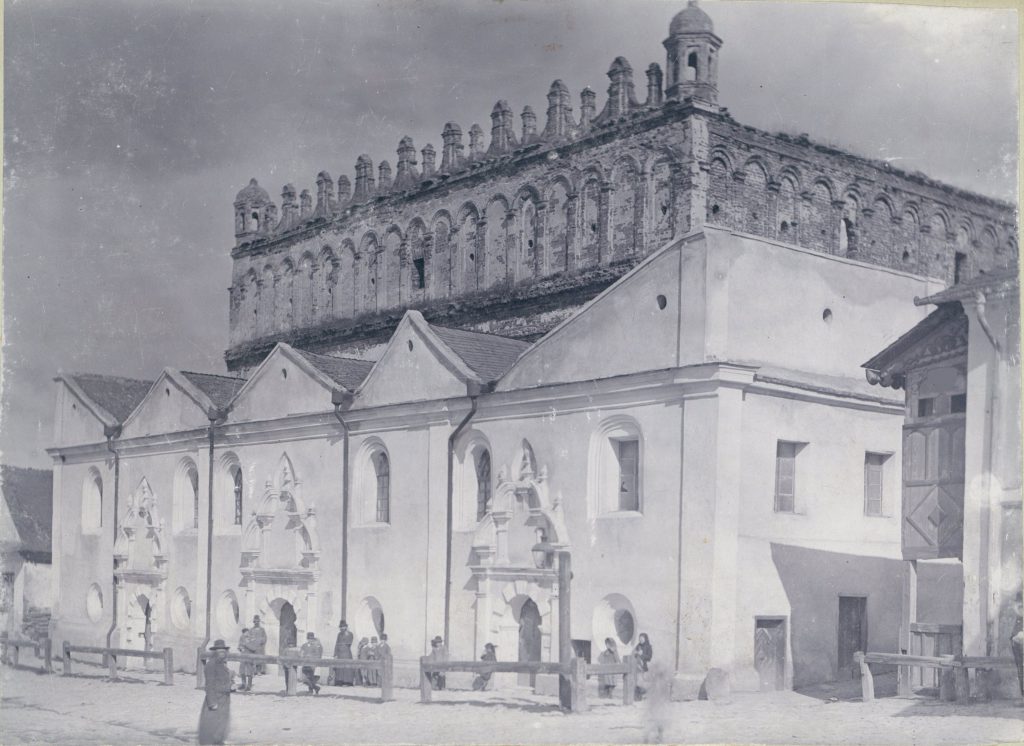
The city is laid out in orderly fashion around the vast rynek (central square), from where are visible the castle (in the seventeenth century the royal residence of the Polish king John Sobieski), the majestic Catholic cathedral, and the uniate church.
Only slightly hidden from view are the Zydowska Brama gate and the town’s magnificent seventeenth-century synagogue: financed by King John II Sobieski himself, it was designed by the royal architect Piotr Bebra and constructed between 1692 and 1700.
The remains of the Zolkiew Synagogue
The Zolkiew Synagogue, which escaped destruction by the Nazis despite their attempts to dynamite it, appears relatively well preserved from the outside, even if the stained-glass windows are broken and the roof damaged. The building’s future looks grim, however: in ruins in the middle of the city, it is not open to the public.
This Renaissance masterpiece was one of the most beautiful and largest synagogues in Poland and today is undeniably the most beautiful in all Ukraine. Its pink, painted facade, now somewhat discolored, is adorned with three gates in bas-relief delimiting three naves, while the roof is sculpted like a cathedral. Inside, only the heavy columns supporting the rood remain: the walls are bare and the floor is strewn with rubble. Though officially protected as a city landmark, since 1993 nothing has been done to preserve this magnificent yet endangered building.
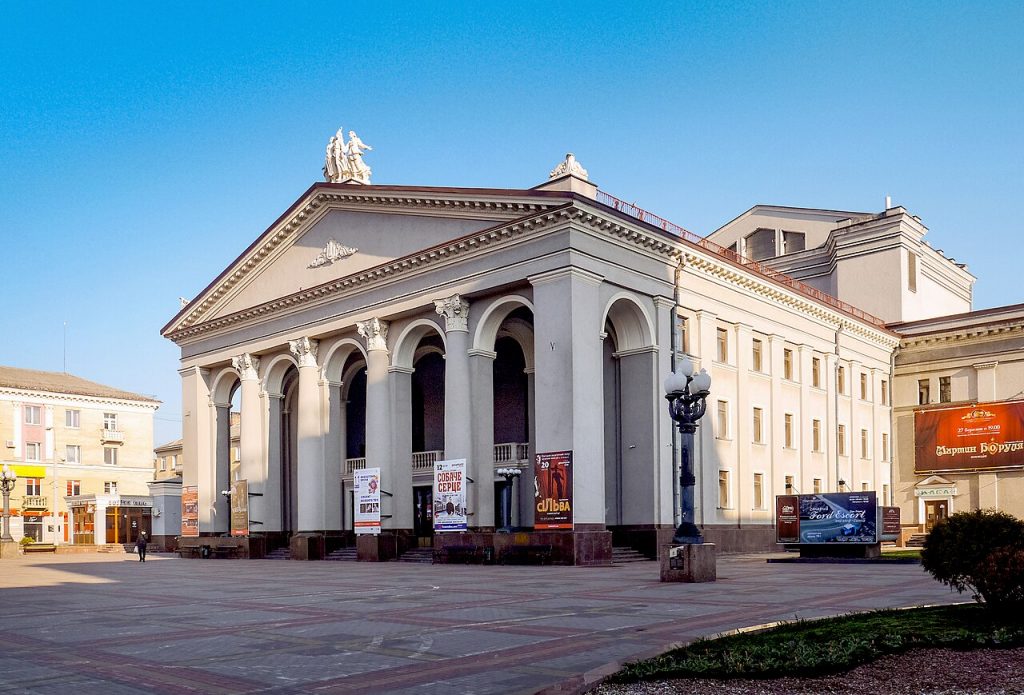
The terrifying war against Ukraine changes, of course, the function of these pages devoted to the Jewish cultural heritage of that country. Many of the places mentioned were razed to the ground by bombs. While these pages are not intended in the present time for tourism, they may be useful to researchers and students as historical references. References to so many painful histories during the pogroms and the Shoah, but also to the glorious history of Ukrainian Judaism, in its cultural, religious and Zionist dimensions. Wishing the Ukrainian people a speedy end to these atrocities of which they are victims.
On the road from Lvov to Kiev, the most important city is Rivne, formerly a Polish city called Rovno, that was over 40% Jewish before the war.
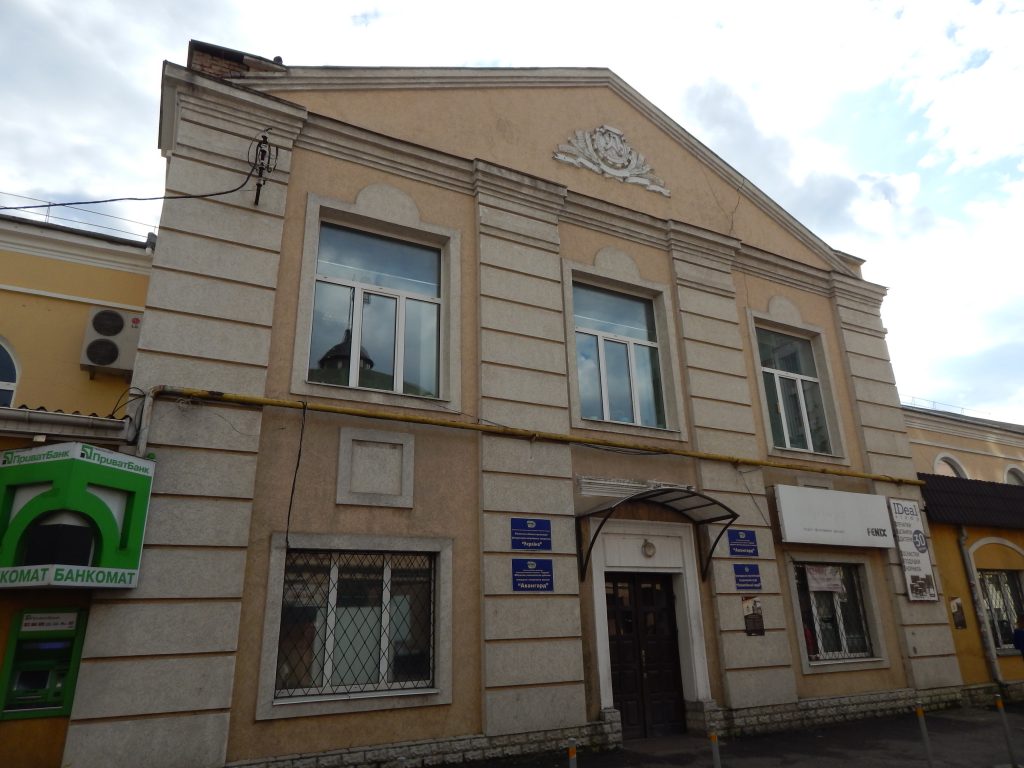
It is worth a stop to see what remains of its Jewish quarter on Zamkowa Street; the spacious Wielka (Ancient) Synagogue at the street’s intersection with Skolna Street towered over the whole neighborhood (it has since been converted into a gymnasium). Beside it stands the even older Mala (Small) Synagogue, which is again active.
The Sosonki memorial
On the road to Kiev, around two miles from Rivne, stands the impressive Sosonki memorial. It occupies the spot where, on 6 November 1941, the 17500 inhabitants of Rovno’s ghetto were executed in a single day and left to rot in a huge, circular mass grave. Until 1998, this memorial with its tall marker could be easily seen from the road; the inscription reads “Sosonki” in Hebrew and Cyrillic letters. The inscription was defaced in 1998, and the monument also lost its most original feature: a line of metal characters seeming to sink into the earth. All that remains today are stelae surrounding the mass grave bearing the names of the dead in Yiddish.
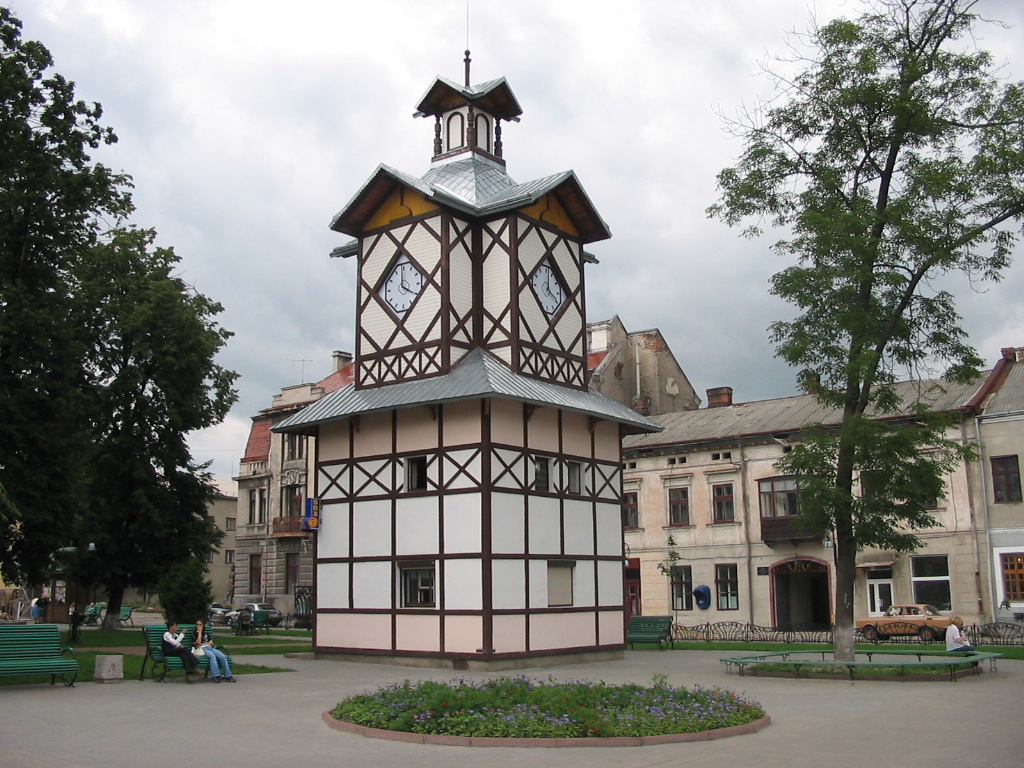
The terrifying war against Ukraine changes, of course, the function of these pages devoted to the Jewish cultural heritage of that country. Many of the places mentioned were razed to the ground by bombs. While these pages are not intended in the present time for tourism, they may be useful to researchers and students as historical references. References to so many painful histories during the pogroms and the Shoah, but also to the glorious history of Ukrainian Judaism in its cultural, religious, and Zionist dimensions. Wishing the Ukrainian people a speedy end to these atrocities of which they are victims.
The city of Brody, founded in 1584 by Stanislaw Zolkiewski, started expanding in 1629 when the waywode Stanislaw Koniecpolski called on engineer and artillery captain Guillaume Levasseur de Beauplan to built fortifications and establish a zoning plan for the new city.
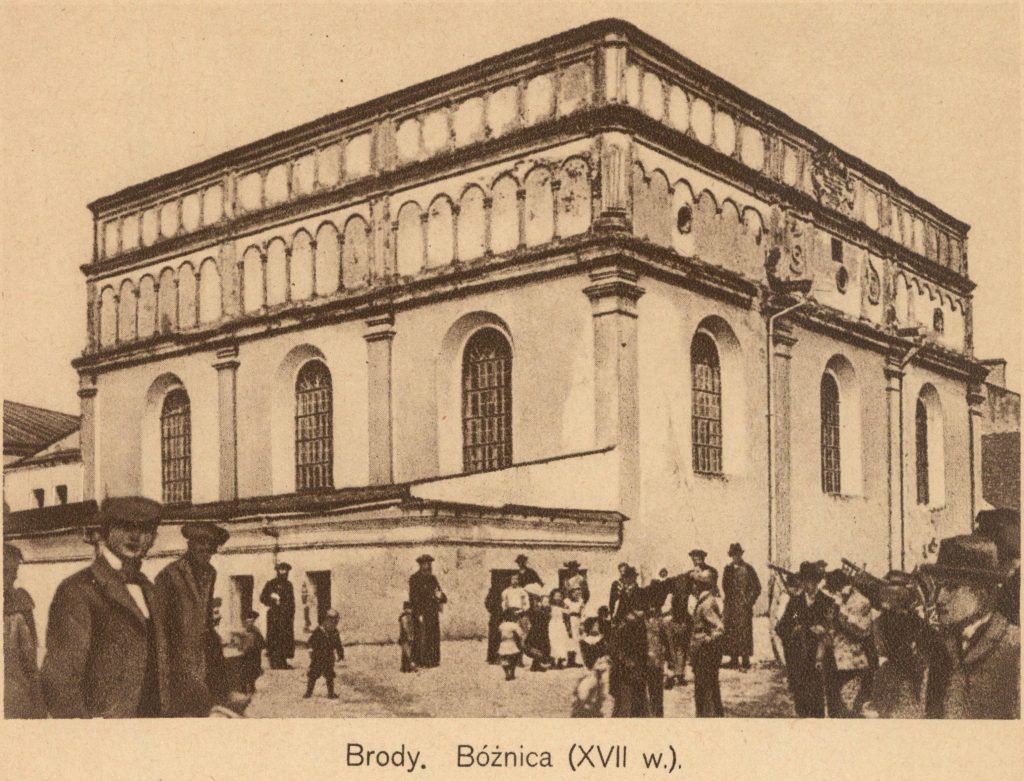
After Polish Galicia‘s annexation by Austria in 1772, for a hundred years (1779-1880) Brody was granted the status of “duty-free city” -exoneration from taxes. This benefit served to draw Jewish merchants and craftspeople here. By the nineteenth century, Jews made up 80% of Brody’s population.
Brody in literature
Balzac stopped here in September 1847 on his way to meet Mrs Hanska in Ukraine. He was supposed to spend a day and a night here before catching his coach, for no one worked in Brody on Rosh Hashana. “The Jews of Brody, despite the millions they could earn, wouldn’t leave their ceremonies behind” (Balzac, in a letter about Kiev).
Other writers have also mentioned Brody: Joseph Roth was born here in 1894 and evokes it in The Radetzky March (1932); Isaac Babel described the city in Red Cavalry (1933) and in his 1920 Diary.
The former Jewish quarter was demarcated by the streets named Sholem Aleichem, Evreiskaya, and Armianskaya, and today contains destroyed houses, Jewish-style courtyards, a defunct shop with the sign “Lustiger”, and other remnants of a bygone Jewish life.
The remains of a beautiful synagogue
The walls of the former seventeenth-century synagogue still stand on Szkolna Street, or Shulgas. It was one of the most beautiful in the region, comparable to that in Zolkiew. It is a fortified synagogue, its levels marked by small columns and adjacent structures on both sides.

The former Israelitische Realschule, located outside the central square, was a German-language school until the First World War; Joseph Roth once studied here. It is now a Ukrainian school. The immense, magnificent, and nearly intact Jewish cemetery is located at the northern edge of the city, just before the forest.
Holocaust memorial
It is a veritable open-air museum of graves bearing carefully carved designs, lions, stags, hands, candelabras. The inscriptions are almost always in Hebrew, but occasionally in German. No grave dates before 1941.
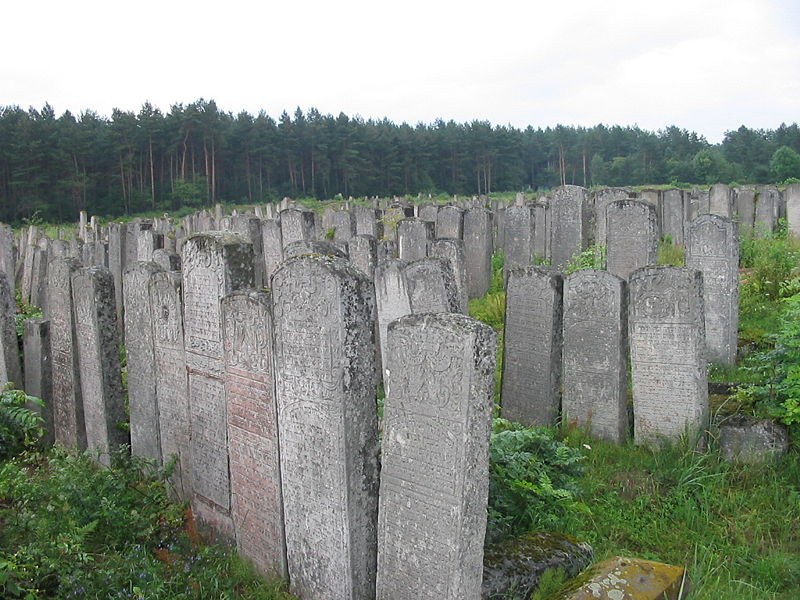
At the edge of the cemetery, in the forest, a monument commemorates the extermination of the Jews of Brody, either executed and buried in a common grave in July 1941 or deported to Belzec. Of the 12,000 Jews in Brody before the war, only one remains in Brody.
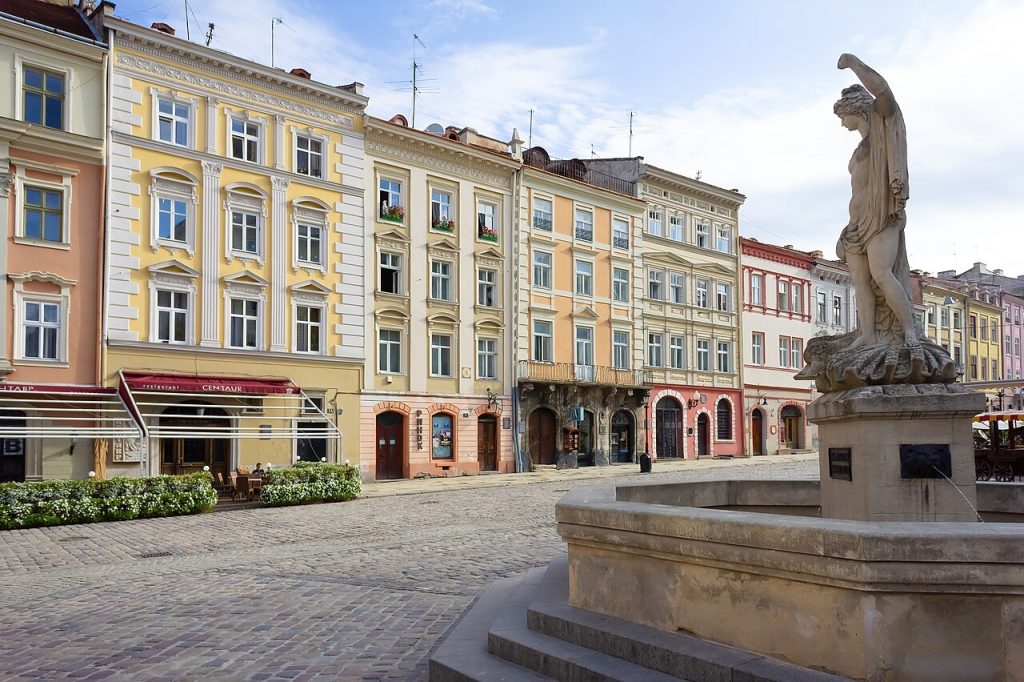
The terrifying war against Ukraine changes, of course, the function of these pages devoted to the Jewish cultural heritage of that country. Many of the places mentioned were razed to the ground by bombs. While these pages are not intended in the present time for tourism, they may be useful to researchers and students as historical references. References to so many painful histories during the pogroms and the Shoah, but also to the glorious history of Ukrainian Judaism, in its cultural, religious and Zionist dimensions. Wishing the Ukrainian people a speedy end to these atrocities of which they are victims.
Lvov -Lviv in Ukrainian, Lwów in Polish, Lemberg in German, Léopold in French- a city long Polish, then Austro-Hungarian, was again Polish between the wars. Annexed in 1939 by the Soviet Union after the German-Soviet nonaggression pact, it was occupied from 1941 to 1944 by Nazi Germany, taken back by the Soviets after the Second World War, and later reattached to Ukraine.

The Jewish community of Lvov was mentioned as far back as the thirteenth century, since, that is, the founding of the city. In the latter half of the fourteenth century, the city featured twi Jewish quarters, distinguishing Lvov from most other large European cities. The first, dating from 1352, was located “beyond the walls” around the Stary Rynek (Old Market) Square in the Kraków suburb (Krakowskie Przedmiejsce); the other, which dates from 1387, was located inside the city.
The old ghetto within the walls
The former ghetto stretched across the present-day Ruska, Straroevreiska, and Federova streets, near the Arsenal, southeast of the center of town. Today, you can see the remains of the Fedorovaolotaya Roza Gildene Roiz (Grand Synagogue of the Golden Rose) at the intersection of Straroevreiska and Federova streets.

Built in 1582, the synagogue was a late Gothic masterpiece with high lancet arches that towered over the entire quarter. It was of the most beautiful and oldest buildings in Lvov -until the Second World War. It owed its name to Rabbi Nahman’s wife, Rosa Jakubovna. Destroyed in 1941 by the Nazis, today there remains only the empty square, a few vestiges of the arches, and a commemorative plaque in English and Ukrainian.
The former ghetto beyond the walls
The former ghetto “beyond the walls” covered much larger area. This is where, north of the city center, Jews from Lvov settled throughout the nineteenth and twentieth centuries. The quarter became, during the German occupation, a “ghetto” in that special sense the Nazis gave the term.
Behind the opera was located the Zydowska Brama (Jewish Gate), a few steps away from the Krakowska Brama (Kraków Gate), referred to as Vor der Shul (in front of the synagogue) by the Jews of Lvov.
The present-day Bogdan-Khmelnitsky Street turns into Zamarstynowska Street, the central street of the ghetto. Here, all the houses before the war were Jewish. On little Santa Street, formerly Boznicza (Synagogue Street) stood the suburb’s great synagogue and, a bit further down, the Hasidim Schul. The two sites are today empty lots. A plaque in English and Ukrainian was recently mounted on the wall of the former Hasidic synagogue; built in the seventeenth century it was reconstructed in the nineteenth century and destroyed in 1941.
The Hasidic synagogue
Only one temple can still be visited in this quarter, which once contained so many: the former Synagogue of Hasidic Innovators. Used for many years as a gymnasium, it was recently returned into the Jewish community and now contains the offices of the Sholem Aleichem Cultural Association . The association organizes meetings for the elderly and publishes the review Shofar.
To penetrate Lvov’s old Jewish quarter, stroll along the streets named Zamarsynowska, Muliarska, Balabana, Kulisha, and along the northern perimeter of the city. Beyond the railroad bridge on Chernovola Street (previously 700 Years of Lvov) stands a 1991 monument in memory of the massacre of 136800 Jews in Lvov, either exterminated in the ghetto or deported between 1941 and 1943.
On the footprints of Sholem Aleichem
Another possible exploration of the ghetto begins on the other side of Gorodecka Street, in the shadow of the opera. A stroll down Szpitalna Street is like being slowly transported into the world of the former shtetlach. Although the street is no longer Jewish, it has preserved its look of yesteryear, with its market crisscrossed by merchants carrying clothes and other objects in their arms.
At the intersection the street forms with Kotliarska Street, a plaque indicates the house where the writer Sholem Aleichem lived in 1906. Further down, the street opens onto a lively square where the streets named Rappaport, Sholem Aleichem, and Bazama converge: this was one of the nerve centers of the ghetto near the former Kraków market (Krakowski Rynek), today the “bazaar”. On Rappaport Street stands the former Jewish hospital, a large, Moorish building with an eastern-style dome.
Traces of Polish lettering can still be made out, “Izraelicki Szpital”, while Hebrew characters covered over with a Cyrillic inscription still read “Maternity Ward number 3”. The maternity ward’s garden is bordered by a plot that was in fact Lvov’s old Jewish cemetery. Dating back to the fourteenth century, its richness can be glimpsed in old photos. It has been totally razed and replaced by an extension of the bazaar.
A beautiful building on Sholem Aleichem Street features a monumental entrance resembling Paris’s Gare d’Orsay: formerly the Jewish consistory, with the rabbinical tribunal, this structure now houses the B’nai Brith “Leopolis” and the Lvov Center for Jewish Studies.
The Janowska camp
You will next arrive at Shevchenko Street, better known by historians of the Shoah by its former name of Janowska. A veritable concentration camp within the ghetto, the sinister Janowska camp was located on this street. It stood on the spot where currently there are barracks. At the end of the street is the Janowski cemetery , a section of which is Jewish. Almost all the graves date from after 1945, and thus are inscribed in Russian.
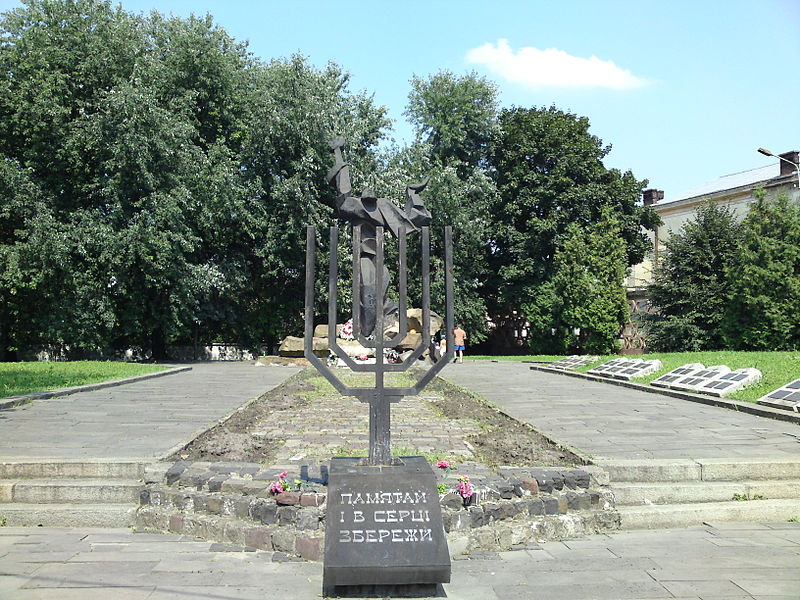
The only active synagogue in Lvov is located even further away, in the area of the train station on Brativ Mikhnovskikh Street, formerly Moskovskaya.
Lvov’s Jewish quarter also stretched south of Gorodecka Street and west of the Svoboda Prospect. A synagogue once stood on the streets called Nalivaiko and Grebinka, but it has since been razed. Across the street, Grebinka Street puppet theater (Teatr Lalok) was once the Jewish theater of Lvov. A little further down Bankovska Street, an empty space between two houses was the site of yet another synagogue.
A testimonial
In 1929, Albert Londres visited the eastern European Jewish communities and gave the following account of the Lvov ghetto: “The market lies at the heart of the ghetto. A pile of shacks like those built after an earthquake or a city burns down -a market? A field of manure, rather. You can choose from any garbage can in the Polish city!”
Albert Londres, The Wandering Jew Has Arrived. See also, The Jew Has Come Home, Trans. William Staples (New York: R. R. Smith, 1931).
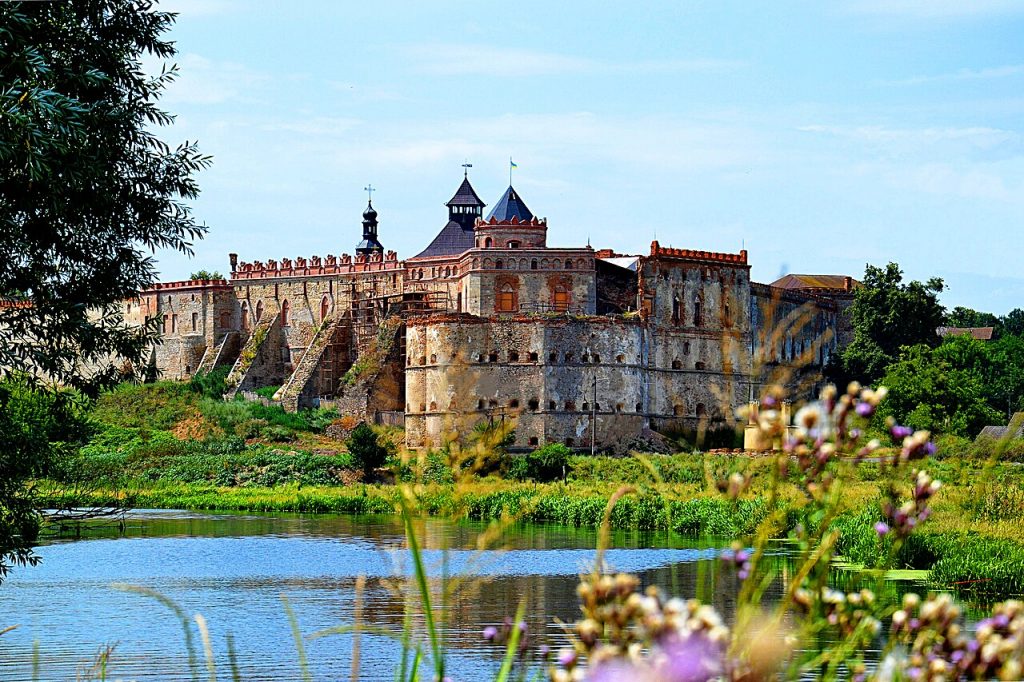
The terrifying war against Ukraine changes, of course, the function of these pages devoted to the Jewish cultural heritage of that country. Many of the places mentioned were razed to the ground by bombs. While these pages are not intended in the present time for tourism, they may be useful to researchers and students as historical references. References to so many painful histories during the pogroms and the Shoah, but also to the glorious history of Ukrainian Judaism, in its cultural, religious and Zionist dimensions. Wishing the Ukrainian people a speedy end to these atrocities of which they are victims.
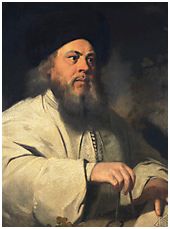
Medzhibozh, in Podolia, has been a mythic city for Jewish communities ever since Israel ben Eliezer, better known today as Baal Shem Tov, settled there in 1740.
Israel ben Eliezer, the Baal Shem Tov
Israel ben Eliezer (1700-60), also known as Baal Shem Tov (Master of the Good Name) or Besht, was the founder of the Hasidic movement, which had a great influence in the eighteenth and nineteenth centuries throughout the Jewish world of Ukraine and Poland. Eliezer’s preaching added a spiritual, popular, as well as festive dimension to Judaism. “One Simhat Torah evening, the Baal Shem himself danced together with his congregation. He took the scroll of the Torah in his hand and danced with it. Then he laid the scroll aside and danced without it. At this moment, one of his disciples who was intimately acquainted with his gestures, said to his companions: ‘Now our master has laid aside the visible, dimensional teachings, and has taken the spiritual teachings unto himself’.
Martin Buber, Tales of the Hasidim: The Early Masters, Trans. Olga Marx (New York: Schochen Books, 1947).
The medieval fortress
Medzhibozh, which means “between the Bugs”, is magnificently situated between two rivers bearing practically the same name: the southern Bug, a long river crossing all of Podolia to the Black Sea, and its tributary the Boujok (Little Bug).
Beside the river at the town’s entrance stands a large medieval fortress built between the fourteenth and seventeenth centuries but largely still intact. Before the war, more than 6000 residents, two-thirds of whom were Jewish, lived at the foot of this fortress. There remains, it is said, only one Jew today: the man who guards the cemetery.
The Baal Shem Tov cemetery
This cemetery is very old. The master’s grave is enclosed and protected in a small concrete structure containing prayer books and candles. Walking along the cemetery for about a half mile further, you will reach the new Jewish cemetery of Medzhibozh, whose graves date from the late nineteenth century to 1941.
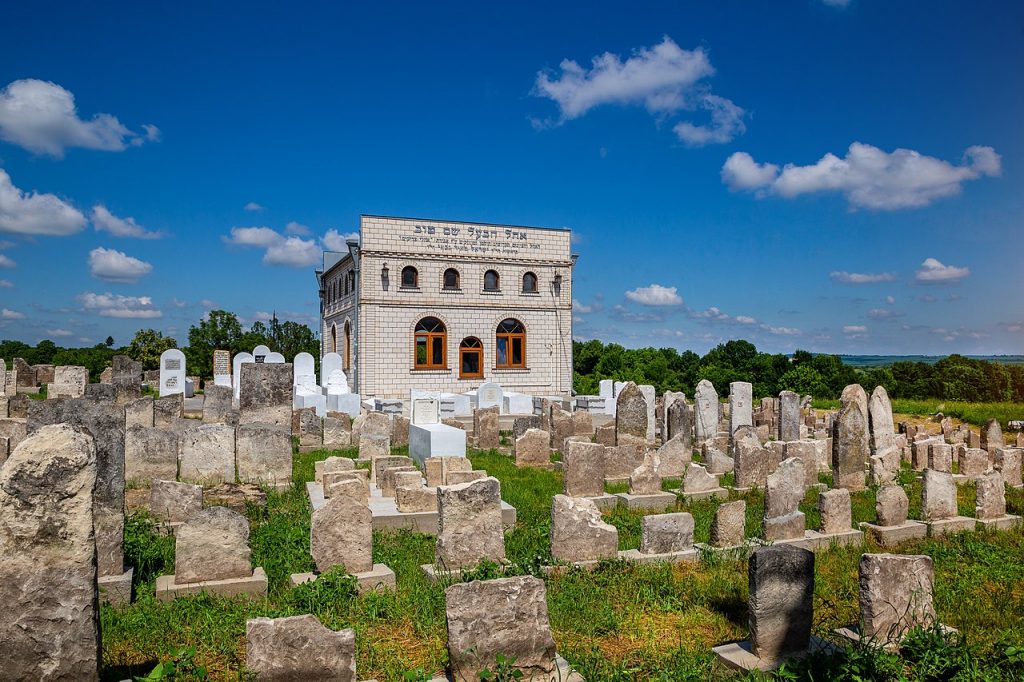
This cemetery, much larger but less well-known than the old one, is quite beautiful as well. The graves are relatively well preserved, but the tombstones have already begun to sink, and a neighboring farmer has turned part of the cemetery into a farmyard.
The Holocaust victims
Further still, in a difficult to reach in the forest, is located the place where the Jews of Medzhibozh were executed. The mass grave has been covered with a huge concrete slab and a stele bearing the inscription: “Here, in these ravines, on 22 September 1941, the German Fascists barbarian cruelly gunned down more than 3000 women, children, and the elderly, prisoners of the Medzhibozh ghetto. In eternal memory of our compatriots”.
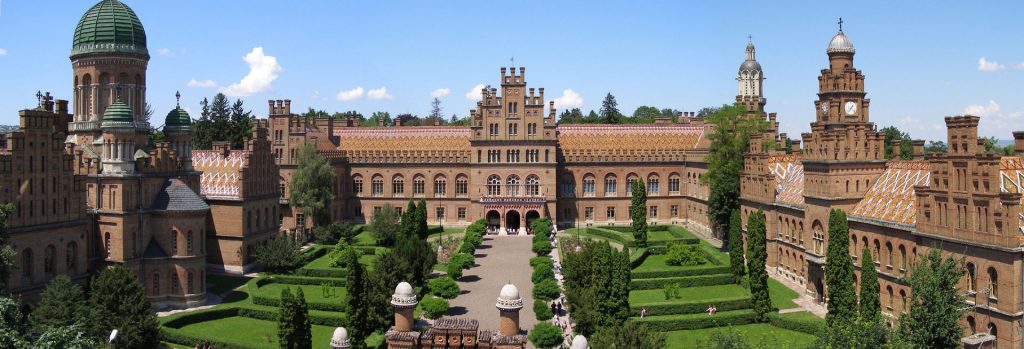
The terrifying war against Ukraine changes, of course, the function of these pages devoted to the Jewish cultural heritage of that country. Many of the places mentioned were razed to the ground by bombs. While these pages are not intended in the present time for tourism, they may be useful to researchers and students as historical references. References to so many painful histories during the pogroms and the Shoah, but also to the glorious history of Ukrainian Judaism, in its cultural, religious and Zionist dimensions. Wishing the Ukrainian people a speedy end to these atrocities of which they are victims.
The former capital of Bukovina, the large German-influenced city of Chernivtsi (Czernowitz) once belonged to the Austrian Empire. It then became part of Romania during the wars, was annexed by the Soviet Union in 1940, and occupied by Germany and Romania from 1941 to 1944, only to become part of Ukraine after the war.
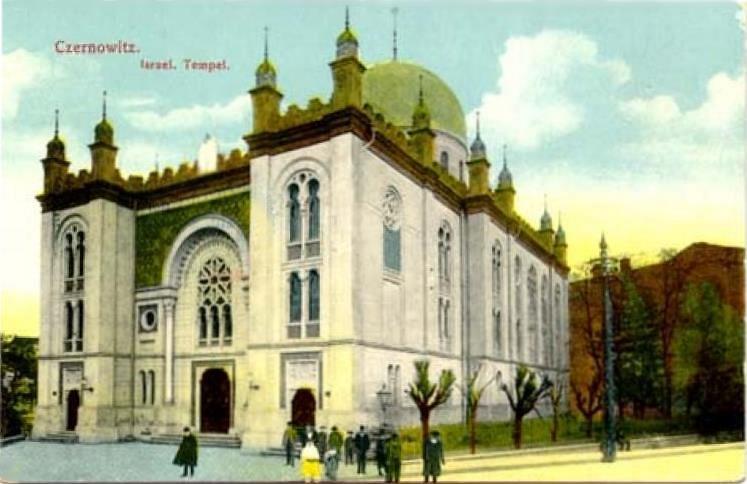
This once major Jewish hub (Jews made up around 40% of the population before the war) hosted the World Conference on Yiddish Language in 1908. It is also the birthplace of the Yiddish poet Itzik Manger, the fabulist Eliezer Steinbarg (who adapted into Yiddish the fables of La Fontaine, Aesop, and Krylov), the singer Sidi Tal, and the German-language poets Paul Celan and Rose Ausländer.
The magnificent city is well worth a visit. It retains its nineteenth and twentieth century Austrian feel, especially around its central square (formerly Ringplatz) and city hall, along Olga Kobylianska Street (formerly Herrengasse), Ivan Franko Street (formerly Rathausgasse), and Soborna Square (formerly Austria Platz).
Itinerary for a visit of Jewish life
A tour of the Jewish city begins at the former Grand Synagogue (or “Tempel”) located on Tempelgasse, today Universitetska Street. Though the Germans dynamited it, they failed to completely destroy it. The building functions today as a movie theater, Kinoteatr Chernivtsi ironically refer to as “Kinagoga”.

At Theatralna Square, the the right of the theater, stands the old House of Jewish Culture , transformed as of late into the Eliezer Steinbarg Cultural Association headquarters. Notice the monumental staircase and its Stars of David, their points sawn off since the Soviet era.
Steinbarg himself once lived on a neighboring street recently renamed in his honor, as pointed out by the plaque there. A door adorned with a Star of David can be seen just across the street.
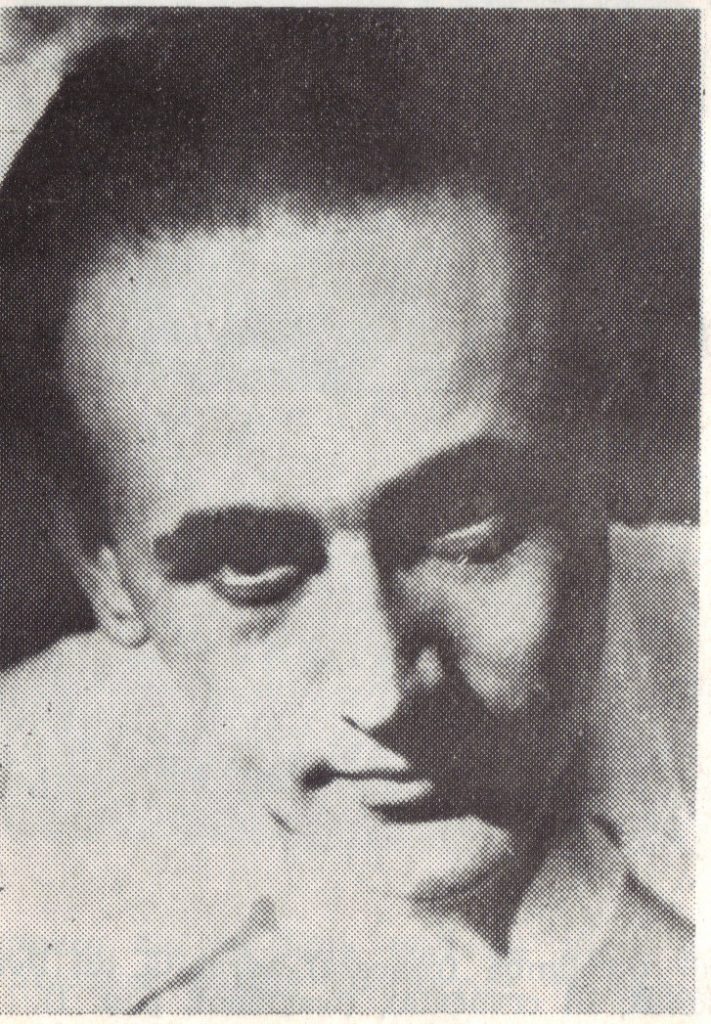
Not far from here, at 16 Clara Zetkin Street stands the home of Mrs. Zuckermann, the ninety-two year old star of the film Mr. Zwilling and Mrs. Zuckermann (Volker Koepp: 1998). A victim of the Shoah, deported to Trans-Dniestria from 1941 to 1944, yet also an expert in the history of Chernivtsi, she once proudly declared: “I have remained Austrian; I love Czernowitz alone”.
Paul Celan
Paul Celan was born in 1920 at 5 Saxaganski Street (formerly Wassilkogasse). A plaque in Ukrainian and German marks the site. His parents perished after being transported to Trans-Dniestria. He moved to Paris after the war but continued to write in German, the “language of executioners”. His work, which grew more and more hermetic over time, deeply revitalized contemporary poetry. His most famous poem is Todesfuge (Fugue of Death):
“Black milk of daybreak we drink it at sundown
we drink at noon in the morning we drink it at night
we drink it and we drink it
we dig a grave in the breezes there one lies unconfined…”
From Poems of Paul Celan, Trans. Michael Hamburger (New York: Persea Books, 2002).
The active synagogue in town, located on Lukian-Kobylitsa Street, is very small, but the interior is beautiful, with mural depicting biblical themes.
Traces of the ghetto
Properly speaking, the Jewish quarter was located a bit further down, on the other side of Ruska Street. Transformed into a ghetto between 1941 and 1944, its entire Jewish population was deported to Trans-Dniestria. Take Turecka Street (“Turk”, after the former Turkish Fountain), and cross the bridge leading to the ghetto’s main street, Morariugasse, today Sagaidachny Street. The architecture of the block where Rose Ausländer was born has remained typically Jewish over the years. A wide street, it is bordered by a triangular public square formerly called Springbrunnenplatz where the market were held.
A right turn after the square leads to Henri Barbusse Street, formerly Synagogengasse, one of the poorest and most crowded streets of the ghetto. The former Grosse Schul (Big Synagogue) can be still be seen in the center at number 31; a very large building with a Greek pediment, it serves today as a “repair and production complex”. Further down, at number 18, a former prayer house features two Stars of David struck with the letter shin on the door.
One of the oldest synagogues
There was an inscription that read in Romanian and Hebrew “makhsike sabatul” (those respectful of the shabbat), but it was painted over in 1998. Chernivtsi’s oldest synagogue is located a little further up; it dates from the eighteenth century. A Hebrew inscription once read “Hevra Tehilim” (brotherhood of psalms), but this also disappeared in 1998. Donated to the Protestant community, the synagogue has been renovated, its main room divided into two levels and a facade (where the inscription was located) repainted.
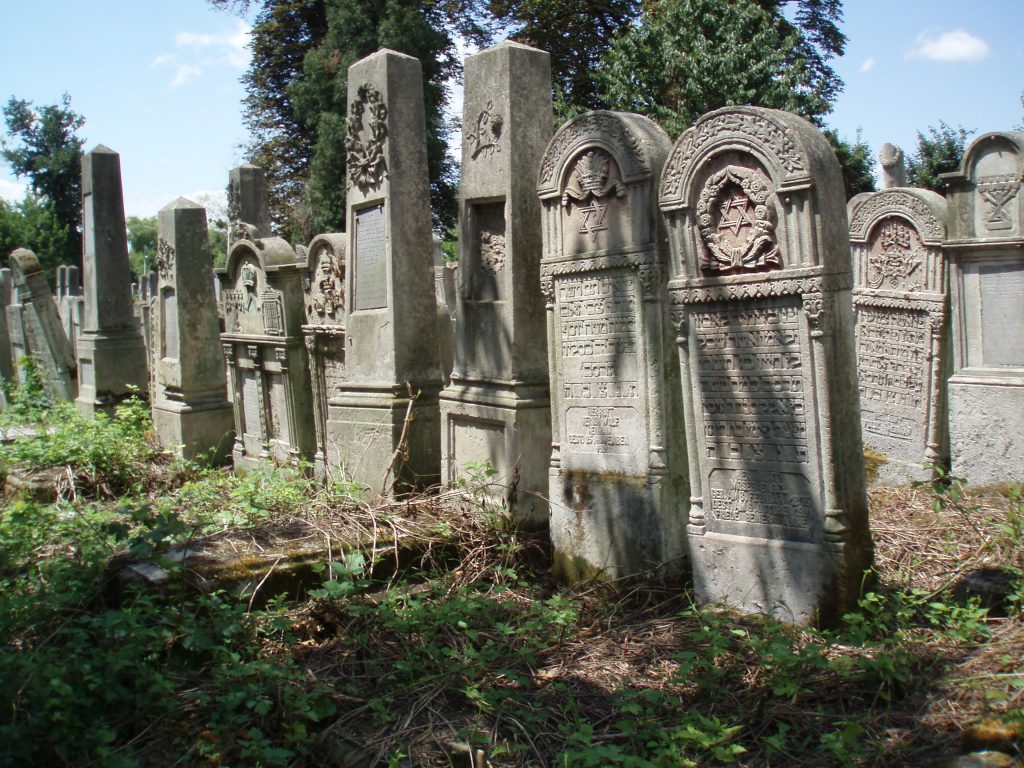
Further still, at the spot where Henri Barbusse Street converges with Sagaidatchny Street, the Jewish hospital, now neglected, can still be seen through a locked gate. A commemorative plaque mounted on a house off the square points out, in Ukrainian and Yiddish, that the ghetto was once located on this street until its 40,000 residents were deported.
The Jewish cemetery is both impressive and fairly well maintained. The inscriptions on the tombstones are mostly in German, though a few are in Hebrew or Russian.
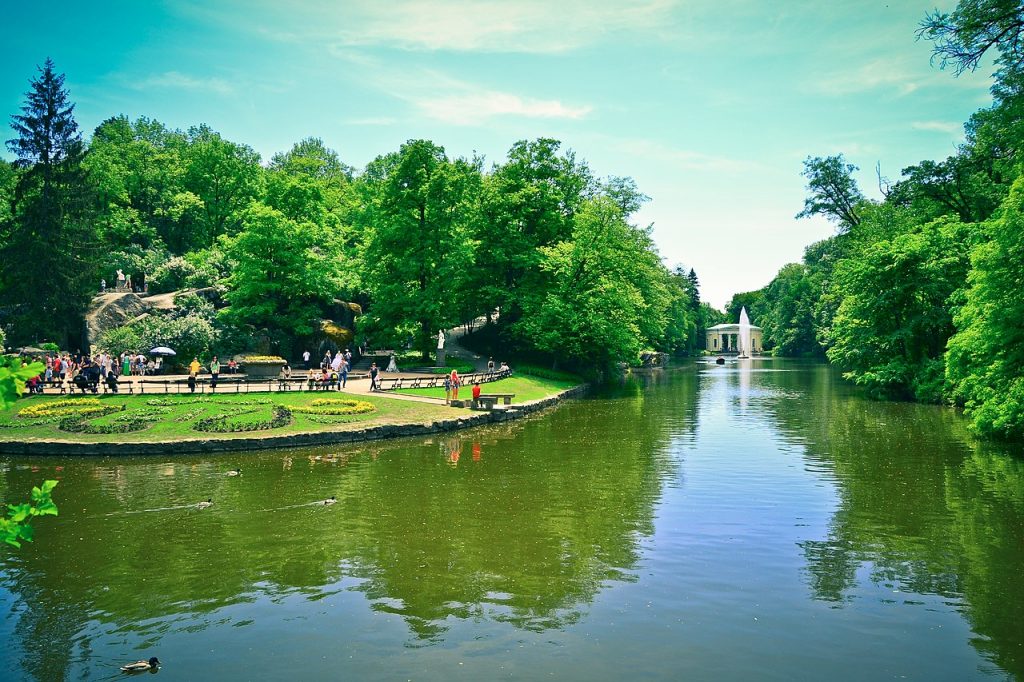
The terrifying war against Ukraine changes, of course, the function of these pages devoted to the Jewish cultural heritage of that country. Many of the places mentioned were razed to the ground by bombs. While these pages are not intended in the present time for tourism, they may be useful to researchers and students as historical references. References to so many painful histories during the pogroms and the Shoah, but also to the glorious history of Ukrainian Judaism, in its cultural, religious and Zionist dimensions. Wishing the Ukrainian people a speedy end to these atrocities of which they are victims.

The city of Uman is most famous for the Sophievka, a park built by Count Potocki in the grand style typical of eighteenth-century landscape architecture. It is also where Rabbi Nahman of Bratslav (Brasov), a great-grandson of Baal Shem Tov and continuer of his doctrine, settled and later died in 1810.
A city of pilgrimage
Only one grave remains from the old Jewish cemetery: that of Rabbi Nahman, a holy shrine today. A synagogue has been built beside the gravesite itself, allowing for reflection both indoors and out.

A number of pews have been installed, as well as a railed footbridge designed to keep the faithful in line before they enter the prayer room. The cemetery entrance is protected by a guard, where an inscription in French, English, Russian, and Hebrew reminds visitors that they are in a holy place.
Behind Rabbi Nahman’s tomb stretches what used to be the cemetery, now merely a snow-covered field (in winter) surrounded by housing projects.
Rabbi Nahman of Bratslav (Brasov)
The tsaddik, author of tales and other literature, defender of a mystical sort of existentialism, chess player, theorist of instability, precursor to Kafka- Rabbi Nahman of Bratslav (1772-1810) was a man of extreme paradox.
He recast Hasidism in a new and profound light, giving birth to a movement that today boasts thousands of followers, especially in Israel and the United States. Every year in September, around the Jewish New Year, thousands of pilgrims visit Uman to pray and reflect at his grave.

The terrifying war against Ukraine changes, of course, the function of these pages devoted to the Jewish cultural heritage of that country. Many of the places mentioned were razed to the ground by bombs. While these pages are not intended in the present time for tourism, they may be useful to researchers and students as historical references. References to so many painful histories during the pogroms and the Shoah, but also to the glorious history of Ukrainian Judaism in its cultural, religious, and Zionist dimensions. Wishing the Ukrainian people a speedy end to these atrocities of which they are victims.
The city of Pereyaslav, to which the name Khmelnitsky was added in honor of that Cossack leader, was also the birthplace of Sholem Aleichem.

To lovers of musical comedy, the city is better known as Anatevka, the name it bears in Fiddler on the Roof. Aleichem found inspiration for his novels’ many characters here: the one who seeks their fortune, the boy who joins the revolution and is sent to Siberia, the girl who betrays her faith by marrying a Ukrainian, the mother who remains in the shtetl with her children while the father plays the market in Odessa and Yehupets, etc. Today, Pereyaslav has retained a cartain charm, even if the city has lost its Jewish community. The former Jewish quarter was located right downtown.
Sholem Aleichem
His real name, Sholem Rabinovitz, founder of classic Yiddish literature, Sholem Aleichem was born in Pereyaslav in 1853 and died in New York in 1916. The world of the shtetl and the everyday people who lived there are immortalized in his writings. His most famous work, Tevie the Milkman, was magnificently set to music as Fiddler on the Roof, or Anatevka, by Jerry Bock and featured the song “If I was a Rich Man”. His other well-known works include the 1892 Menahem Mendel.
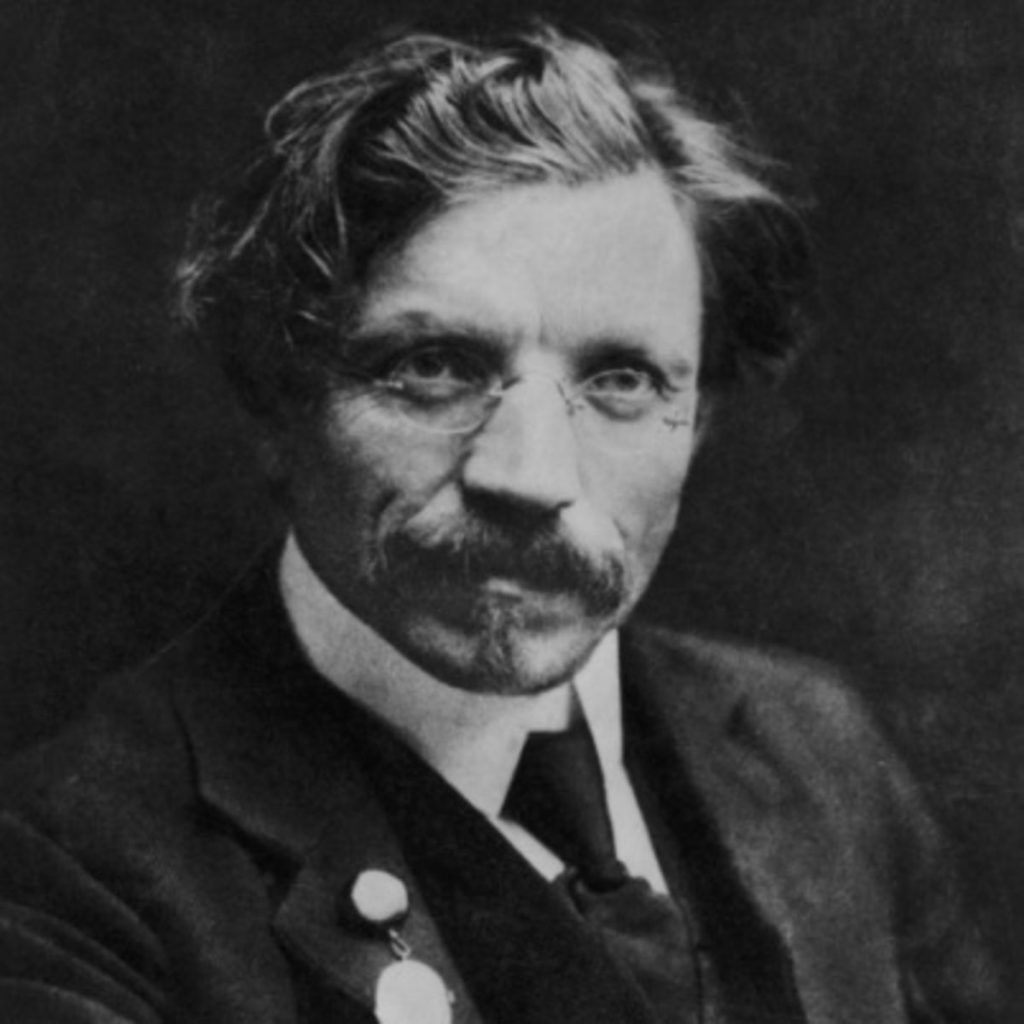
The Grand Synagogue of Pereyaslav , which dates to the nineteenth century, is located across the main square behind city hall in a large, rectangular building named the House of Culture today. No plaque indicates the building’s previous purpose. On Saturday and Sunday afternoons, locals pack the stifling main room to sing Ukrainian folk songs. To the side, a section of the building had been converted into a café-disco.
To find Sholem Aleichem’s birth house , take Lenin Street to the intersection and turn right; a commemorative plaque to the left marks the site.
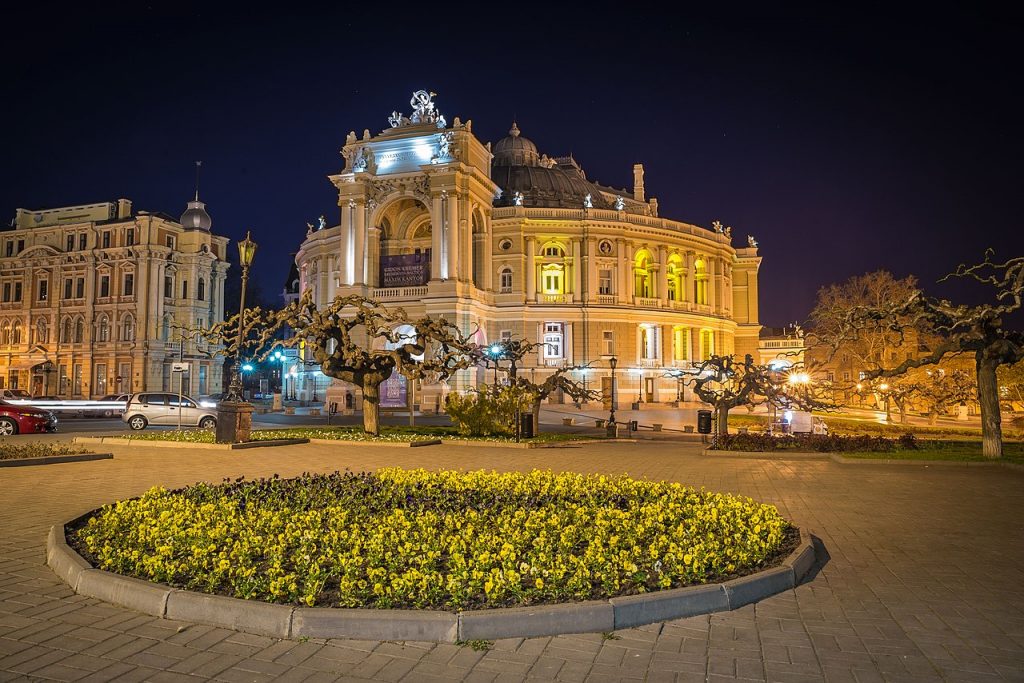
The terrifying war against Ukraine changes, of course, the function of these pages devoted to the Jewish cultural heritage of that country. Many of the places mentioned were razed to the ground by bombs. While these pages are not intended in the present time for tourism, they may be useful to researchers and students as historical references. References to so many painful histories during the pogroms and the Shoah, but also to the glorious history of Ukrainian Judaism, in its cultural, religious and Zionist dimensions. Wishing the Ukrainian people a speedy end to these atrocities of which they are victims.
Established in 1794, Odessa was captured by Admiral de Ribas from the Turks for Empress Catherine II of Russia. The city developed rapidly during the nineteenth century, largely due to the arrival of colonists from “New Russia”. It soon became a melting pot of Russians, French, Armenians, Poles, Greeks, Moldavians, and Jews. Forbidden to reside in Saint Petersburg, Moscow or Kiev, Jews poured into the southern Russian cities of Odessa and Nikolayev, eventually constituting a third of their population before the Second World War. Even today, Odessa still bears their mark.
A Jewish city
An Odessan was asked one day,
-How many people live in Odessa?
-One million.
-And how many of them are Jews?
-I just told you. One million.
You see, in people’s minds, “Odessan” and “Jews” are often confused.
Jewish Odessa began at the Greek Square (“Gretsk, that’s what they call the street where the Jews do business”, Sholem Aleichem wrote), Alexandrovski Prospect, the old marketplace, and the streets named Evreiskya, Bazamaya, and Malaya-Arnautskaya. It continued on the other side of Preobrajenska Street, down Tiraspolskaya to Staroportofrankovskaya streets, and beyond that to the neighborhood by the train station. It covered the entire Moldavanka suburb, where the famous Privoz market is found, and ended at the Slobodka district, where the deportation convoys waited during the German-Romanian occupation. The Jewish quarter encompassed a tremendous area, in other words, stretching from downtown all the way to the western and northern suburbs. Before the war, 350,000 Jews lived here. They number no more than 50,000 today.
Touring Jewish Odessa involves a great deal of footwork. You need to pace up and down the streets, stroll through the neighborhoods, enters and exit courtyards… At Privoz market , breathe in the smell of fresh vegetables, bitter herbs, almonds and raisins, and soak up the atmosphere of the Moldavanka, the children playing in the streets. As fancy suits you, stop by one or more of the few remaining synagogues, examine the various monuments and plaques, and pay a visit to the Slobodka cemetery.
Odessa, the birthplace of Klezmer music
Odessa was also the birthplace of Klezmer music. Blending clarinet, cello, and balalaika with Middle Eastern rhythms, klezmer is making a comeback in Europe after crossing the Atlantic. In Odessa, the klezmer group Migdalor improvises from scores by Alexander Tcherner.
The synagogues of Odessa
Before the First World War, Odessa contained seven synagogues and forty-nine prayer houses. The oldest was the Brodskaya (Brody), or Choral, SYnagogue, built in 1840. With its four domes, it still towers over the intersection of Pushkin and Jukovysky streets, and archival warehouse today. The beautiful building has been given back to the Jewish community of the city and will be transformed back into a synagogue within a few years.
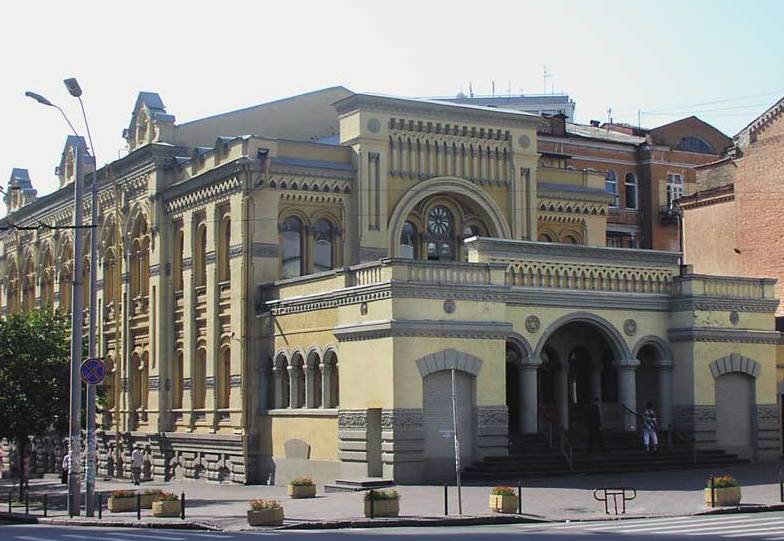
Only two synagogues are still in service: the Glavnaya (Main) Synagogue and the Hasidic Synagogue. There was also a Dockworkers’ Synagogue (near the port, now in ruins) and even a synagogue for kosher poultry shellers.
The Glavnaya Synagogue was returned to the Jewish community a few years ago after being converted into a gymnasium. Until recently, the markings of a basketball court could still be seen on the floor. The women’s galleries have ben removed, while a wall has been built on the first floor that divides the main room into two sections. The fairly new community manages a school and dormitory and publishes Or Sameakh, a daily newspaper. On holidays like Purim or Passover, the synagogue reverberates with the hubbub of the faithful.
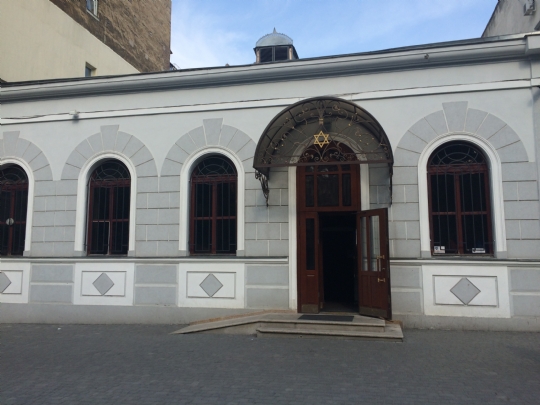
The smaller Hasidic Synagogue , which has a beautiful interior, was recently removed. Located on Malaya-Arnautskaya Street, the Jewish Cultural Center offers Hebrew instruction and organizes various events. At number 9 of this street lived the writers Hayyim Nahman Bialik and Ilya Ilf (from his real name Fainzylberg). Ilf was born in Odessa right near the train station, where a plaque in his memory has been mounted.
In the footsteps of Isaac Babel
The most famous character set in Jewish Odessa was the bandit Benia Krik, gangster king and hero from Isaac Babel’s Odessa Tales. The writer painted a portrait of the Jewish life of the suburb of Moldavanka: “[…] Our generous mother, a life filled with suckling children, rags out to dry and wedding nights full of suburban chic and the indefatigable vigor of a trooper”.
Isaac Babel
Isaac Babel (1894-1941), born in Odessa in the Moldavanka suburb and author of the Odessa Tales, admired Flaubert and Maupassant and made an impression of Gorki. He joined Semion Budenny’s Red Cavalry during the civil war and, though in favor of the Revolution, was nevertheless arrested in 1939 and executed in 1941. His work, now among classic of twentieth-century fiction, was rediscovered in the 1950s.
Getting your bearings in Odessa os rather difficult, for no map yet exists showing the new street names, while the residents only know the old ones. To find the places depicted by Isaac Babel in Moldavanka, who lived at 23 Dalnitskaya Street, arm yourself with a map, get a sense of the street layout, and compare what you see to Babel’s descriptions.

The shop owned by Liubka Shneeweiss, or Liubka the Cossack, was located at the intersection of Dalnitskaya and Bankoskaya streets, near the present-day Isaac Babel Street (formerly Vinogradnaya). Gluchaya Street, where the gangster took refuge in Yoska Samuelson’s house of tolerance, today bears the name Bougaevskaya, after many years as Instrumentalnaya. Prokhorovskaya Street, where Piatirubel the blacksmith lived, after years as Chvorostin has taken back its previous name.
At the triangular public square formed by Prokhorovskaya’s intersection with Staroportofrankovskaya (Old Free Port) Street, a monument was recently erected commemorating the deportation of ghetto residents to Bogdanovka, Domanievka, Beriozovka, and other Trans-Dniestrian extermination camps between 1941 and 1943. Tens of thousands of Odessa’s Jews died in the camps.
Promenade with Sholem Aleichem and Eisenstein
Not far from the square, a picturesque street bore the name of Sholem Aleichem during the Soviet era; it now bears its previous name, Miasoedovskaya (meat eaters). The Jewish Hospital was found at this street’s intersection with Bogdan-Khmelnitsky Street.
Odessa, whose famous steps were immortalized by Eisenstein in Battleship Potemkin, was also home of the writers Ilf and Petrov (authors of the very funny Twelve Chairs), Arkady Lvov, Sholem Aleichem; the musicians Jascha Heifetz, Emile Gilels; and other famous figures.
The cemeteries
The first Jewish cemetery in Odessa (the oldest grave dates to 1793) was razed and turned into Illitch Park, just behind Privoz. Only the layout of the paths here hints at the former purpose of this place.
The second Jewish cemetery, near a retirement home, was located on Lustdorfskaya Street, in front of the Orthodox cemetery. Only the entrance arcade remains. The grave of the Yiddish writer Mendele Mokher Sefarim was supposedly moved into another cemetery.
The only Jewish cemetery left to visit os found at the very end of the long Razumovskaya Street, at the intersection of Khimicheskaya Street and Leningradskoya Road. It is very large, well kept, and constantly visited; it does not have that neglectful aspect common to most Jewish cemeteries in Ukraine.
The Jewish Museum of Odessa
To finish your visit of the Jewish Odessa, you can visit the Jewish Museum. Although it is a modest institution, you will nevertheless find original documents about the Jewish past of the city. Its very helpful staff will be glad to inform you about the Jewish events in the city during your stay. In addition, you should visit the Website of The Odessa Review, edited by Regina Maryanovska-Davidzon and Vladislav Davidzon, to keep up to date with the cultural events happening in Odessa.
Odessa, between yesterday and today
Today, only 3% of Odessa’s population is Jewish, approximately 30000 people. However, the city is still seen as one of Europe’s Jewish capitals. When, in 1916, Isaac Babel, wrote about a “city built by Jews”, he didn’t only refer to the number of Jews, but also to the general atmosphere, tolerant toward minorities.
Recently, archaeologists unveiled Jewish tombs dating from 1770, thus proving that a Jewish community existed there before Odessa’s creation. Indeed, in the 18th century, Jews were salt dealers in this province, that was then known under the name Hadjibey. According to the records, before its conquest by Iossif Derbos, about 10 Jews lived in this region. A hundred year later, there were 138000. The first Jewish inhabitants of Odessa came from the Russian Empire’s shtetls, and from the well-known city of Brody in Galicia. A lots of Jews bore the name of the shtetl they originated from.
The first Jewish inhabitants of Odessa were attracted by the privileges offered by the Russian Empire to the volunteers willing to settle in South Russia. For the Jewish community, it meant escaping the oppression they suffered from in the rest of the Empire. In Odessa, Jews were almost equal to other citizens. Therefore, 100 years after its creation, one third of Odessa’s population was Jewish, and became known as “the star of exile”, as Babel described the zionist movement in the city. Let’s add that leaving the shtetl for Odessa meant -in general- an increased quality of life. For some, the possibility of emigrating to Palestine, from a dream, became a reality. The frequent pogroms also fostered the rise of zionism in Odessa. Still, in 1941, half of the population was Jewish.
Life in the different quarters of the city
To the difference of many cities in the Russian Empire, Odessa didn’t have a Jewish quarter. Although some locations such as Moldavanka, Yevreyskaya, Bazarnaya, and Malaya Arnautskaya were at the center of the everyday community life. Being from small communities, the Jewish population tended to reproduce in Odessa the structural system they knew in the shtetl. Everyday life evolved around the synagogue, the mikveh, the school, the kosher butchery and charitable organizations. The first community newspaper was published in 1795.
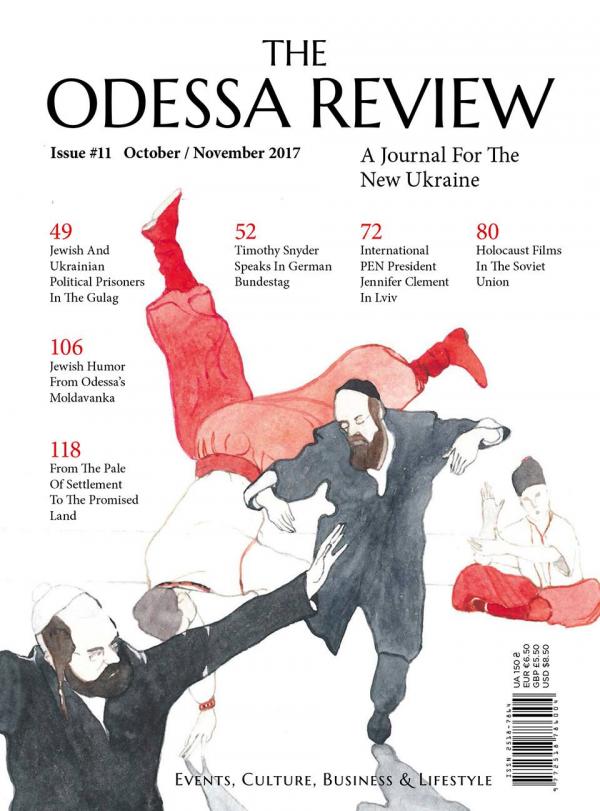
The community elite was personified by Brodsky’s Jews, seen as the most educated, wealthy and liberals. In general, the European aspiration of the Brodsky Jews, the fact that Odessa was geographically far away from the centers of Judaism, the diversity if nationalities and social classes composing the city: all those elements explain why Odessa’s community was unique.
At the beginning of the 20th century, Odessa became the biggest market for exchanges and buisinesses in South Russia. Jews managed 90% of the seed export business ; owned 50% of the factories ; produced the white stones that served to the city’s construction ; the Korelsky family managed the biggest tobacco factory of the Empire etc…On the other side, one third of the city’s Jews lived in poverty.
Visiting Odessa through its old synagogues
In addition to the two synagogues already mentioned, here is a list of buildings that once were homes to prayer houses.
Bakers’ Synagogue , established in 1875. Today a school.
Yavne Synagogue , prayer house of Bialik and the zionist movement. Today a private house.
Butchers’ Synagogue , closed in 1925. The building was given back to the city’s Jewish community in 1991.
Furnitures’ makers Synagogue , today a children pre-school.
The Nakhlas Eliezer’s Synagogue, located 5 Lesnaya, was destroyed by an inundation in 1990. It is today in ruins.
Those three buildings hosted prayer houses as well : 10 Nechipurenko, 7 Bolgarskaya and 48 Kuznechnaya.
Odessa’s charitable organizations
Odessa was known by every European Jew as a city with numerous charitable organizations. The oldest one was the Jewish hospital, opened in 1802. A century later, the city hosted a dozen Jewish organizations.
Jewish merchants organization
Modalvanka Jews charitable organization
Charitable organization for Odessa poors
Charitable organization for Jewish students
Jewish soup kitchen
Education
In 1828, the first Jewish high school of the Russian Empire opened in Odessa. In addition to the Yeshiva’s learning, students were also taught “secular” subjects. The Jewish arts and crafts college inaugurated in 1864 contributed to the reinforcement of the community in the technical and mechanical field. Moreover, at the Tarbut school, class was made in Hebrew by teachers such as Chaim Nahum Bialik or Shaul Tchernikovsky.
The “Gate to Zion”
Historian Steven Zipperstein notes that the history of Odessa’s Jewish community is closer to the one of San Francisco than the one of Kiev. In this port city, the Jews lived without the constraints and limitations of the Russian Empire. They were not isolated and were an active part of the city’s life. The language barrier didn’t apply as well. However, at the end of the 19th and beginning of the 20th century, the tolerant and multicultural Odessa was nicknamed “Gate to Zion”. Indeed, it became one of the centers of the zionist movement, and the city where thousands of Jews left to Palestine.
The center of the zionist activity was the “Palestine Committee”. This organization helped the relocation of farm workers and craftsmen in Palestine. The committee was initiated in the 1880s by Lev Pinsker, Ahad Haam, Bialik, Klauzner, or Ben Ami were also part of the board. The members also raised funds to buy lands in Palestine. The land were the Hebraic University of Jerusalem was built was purchased by the committee. This is why Lev Pinsker was displaced there in 1934.
One of the most active members of this committee, Meir Dizengoff, was the first mayor of Tel Aviv. This is merely a coincidence. In some respect, Tel Aviv was built in Odessa. Lilienblum, one the yishuv first journalist, wrote that in Odessa, Jews arrived to the shores of the black sea, built a city and developed a port. If they were able to to that in Odessa, they would achieve their goal on the shores of the Mediterranean as well.
Another center of the zionist activity was the Brodsky synagogue. Around 70 houses were built through fund raising executed by the synagogue. Those buildings were the first of the future city of Nes Ziona.
To properly prepare the future emigrants, an Hebrew-only school was opened in 1903. In the same time, the publishing house Moria published school books in Hebrew and sends them to Tel Aviv.
From 1919 to 1927, the boat Ruslan shipped a numerous part of the Odessa intelligentsia to Palestine. Among them, lots were about to become the leaders of the future Israel.
On the footsteps of Odessa’s illustrious Jews
Ahad Ha’am (1856-1927), philosopher and publicist, lived in Odessa from 1887 to 1907, at two addresses: 11 Sturdzovsky and 26 Bolshaya Arnautskaya (the latter was destroyed in 2006).
Isaac Babel (1894-1940), writer, was born in Odessa and lived there until 1911, then in 1919 and 1920. He lived at 17 Rishelievskaya (commemorative plaque), 23 Dalnitskaya (the house is destroyed), and 12 Tiraspolskaya.
Eduard Bagritsky (Dzubin) (1895-1934), poet, was born in Odessa and lived there until 1925, at 40 Bazarnaya (commemorative plaque), 4 Osipov, 21 Konnaya, 40 Koblevskaya, 3 Novobazarny and 13 Belinsky.
Chaim Nahman Bialik (1873-1934), poet and educator, lived in Odessa between 1892 and 1921 at 6 Vagnerovsky and 9 Malaya Arnautskaya.
Meir Dizengoff (1861-1936), first mayor of Tel Aviv, lived in Odessa from 1895 to 1905 at 30 Osipov.
Simon Dubnov (1860-1941), historian and educator, lived in Odessa from 1890 to 1902 at 12 Bazarnaya.
Vladimir (Zeev) Jabotinsky (1880-1940), writer, poet, publicist, Zionist leader, was born in Odessa and lived there until 1898, then between 1901 and 1903, at 33 Bazarnaya, 1 Yevreyskaya (commemorative plaque), and 91 Novoselsky.
Ilya Ilf (Fainzilberg) (1897-1937), writer and satirist, was born in Odessa and lived there until 1923, at 137 Staroportofrankovskaya (commemorative plaque), 9 Malaya Arnautskaya, and 19 Sophievskaya.
Joseph Klauzner (1874-1958), historian, publicist, Zionist leader, chief redactor of « Ha-Shiloah » review, lived in Odessa between 1890 and 1919.
Mendele Mocher Sforim (S.Y. Abramovitch) (1836-1917), writer, lived in Odessa between 1881 and 1917 at 12 Degtyarnaya.
Leon Pinsker (1821-1891), doctor, educator, founder of the « Palestine Committee », lived at 26 Rishelievskaya. The original building was destroyed but a commemorative plaque is apposed on the new building.
Avraham Menahem Mendl Usyshkin (1863-1941), Zionist leader and administrator of the « Palestine Committee » lived at 46 Pastera.
Schalom Aleikhem (S.N. Rabinovitch) (1859-1916), writer, lived in Odessa between 1891 and 1893 at 26 Kanatnaya.
Interview of Isabelle Némirovski, Professor at INALCO (Jewish and Hebrew studies), founder and president of « The Friends of Odessa » association, following the publishing (Editions Honoré Champion, April 29th, 2022) of her book History, Memories and Representations of the Jews of Odessa.
Jguideeurope: Your book proposes to share the 1001 stories of these characters who populated and enriched the fabulous History of Odessa. What motivated you to write this book?
Isabelle Némirovski : You are right, my book welcomes a multitude of small stories that have germinated and grown on the fertile soil of Odessa throughout its great history. I wanted to draw the Odessa landscape in small coloured touches of tales and realities. An often perilous writing exercise, knowing that this work is originally a doctoral thesis. But not to play the balancing act would have led me to describe a city with vanished charms. The marriage of these two elements was necessary for its understanding. The dream also invited itself in the Odessite representation, and this, from the title of my book: “An old intimate dream”. The first words quoted in the exergue then confirmed this desire for a dreamlike journey: “To my grandfather Shlomo Nemirovski, whom I never knew. He led me to the shade of the acacia trees in Odessa, immersed in my reveries…”. However, beyond this desire to “return” to the land of my Odessite Jewish ancestors through dreams, a more “down-to-earth” observation is at the origin of this desire to write: Odessa has no book of remembrance whereas many Jewish towns in Central and Eastern Europe have a yizker-bukh. Yet three quarters of the Jewish community was decimated during the Second World War by the Nazis and their Romanian allies. Moreover, Odessa the Jew has greatly contributed to the world’s cultural heritage. This book therefore proposes to “repair” this oversight in part by writing the history and the little story of this society before the genocide, by establishing the chronology of the massacres, by simply fulfilling a duty of truth. For how else can we pass on the truth?
Which reality and which important character do you think are not well known?
It’s the history of Odessa and its Jewish community that remain, in my opinion, too little known. Who knew how to locate Odessa on a map before the Russian invasion of Ukraine? The family story passed on by my father to his children never associated Odessa with a Russian city but with the homeland of music with its great violinists. Dissatisfied with this reductive approach to the place, I decided to propose a reading that would take into account the complexity of the Odessa “concept” with its multiple components – historical, social, political, economic but also emotional – which have come together and mutually fertilised over time. My “Tales of Odessa” invite the reader to leave the idyllic framework of the city that has been immortalized by the cameras of experts in souvenir shots. I decided to peel off the flattering labels and break through the barrier of faded evidence about the city of Odessa to explore its deeper nature and to act as a revealer of its “invisibility”, a potential source of genius of place. I also thought of my missing ones, those missing from Odessa’s Jewish history… I went to meet them… An index of names at the end of the book lifts the veil on these forgotten people, bankers, merchants, intellectuals, artists, bandits and “ordinary Jews” who have similarly written the modernism and the colourful legends of Odessa the Jew.
Is the sharing of Odessa’s Jewish cultural heritage all the more important in the face of the risk of destruction of places due to the current war in Ukraine?
The world unfolds priceless riches within sight, but it takes tragic events for the individual to become aware of them and begin to appreciate them. For the time being, Odessa is spared from the war. But Odessites are preparing for the worst and are multiplying acts of resistance. A photograph is circulating on social networks: the statue of the Duke of Richelieu covered with sandbags. Another more sonorous one shows singers in front of “their Opera House”, imploring the sky in music to protect the city from the curse. As the heir to this fabulous culture, I have only one desire: to share it. I hope that this bloody conflict will be an opportunity to shine the spotlight on a place, a heritage, and men and women who have been forgotten for too long.

The terrifying war against Ukraine changes, of course, the function of these pages devoted to the Jewish cultural heritage of that country. Many of the places mentioned were razed to the ground by bombs. While these pages are not intended in the present time for tourism, they may be useful to researchers and students as historical references. References to so many painful histories during the pogroms and the Shoah, but also to the glorious history of Ukrainian Judaism, in its cultural, religious and Zionist dimensions. Wishing the Ukrainian people a speedy end to these atrocities of which they are victims.
Founded in 1546, the illustrious city of Berdichev (which was Polish until 1793) is towered over by the dome of the large Baroque church here, a former Carmelite cloister dating from 1627.
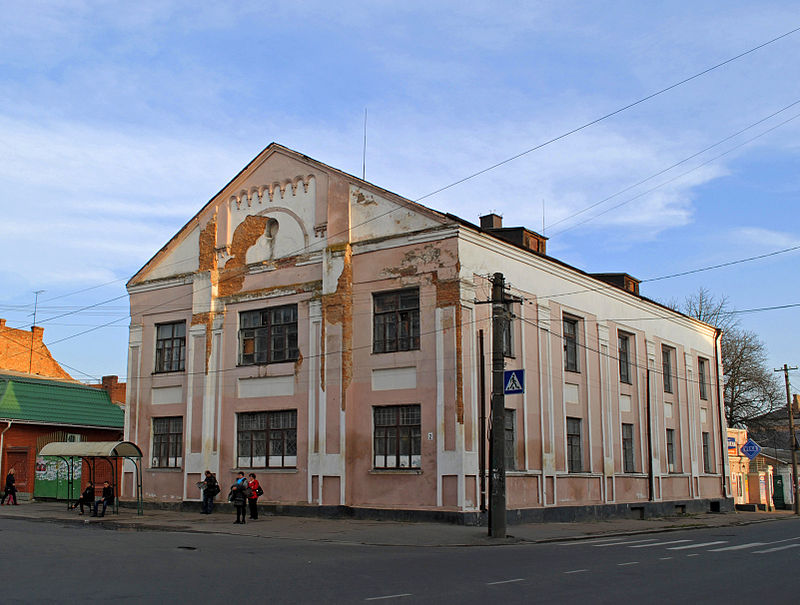
Jews began settling in Berdichev in the seventeenth century, drawn by the fairs regularly held here. In the late eighteenth century, the city had become a major Hasidic hub centered around the tsadik Yitshak Levi of Berdichev (who died in 1808), a disciple of the Great Maggid of Mezritch.
A century later, Berdichev had become an almost entirely Jewish city, with a community of 41,600 members of a total 53,300 residents, or 80% of the population. In Russian jokes or “anecdotes”, Berdichev was the epitome of a Jewish city.
French novelist Honoré de Balzac, who married Mrs Hanska in a church in Berdichev, described the city as a “Jewish encampment”.
A real dump!
A well-dressed stranger once came to Berdichev. A Jewish tailor asked him:
-Where did you have your clothes made?
-In Paris.
-Is it far from Berdichev?
-Over a thousand miles.
-It must be a dump. But they sure know how to sew.”
Because of its symbolic name, the Germans attacked Berdichev with particular ferocity when they occupied the city on 6 July 1941. They liquidated the ghetto within three months. Vassili Grossman, a native of Berdichev, described the details of this annihilation in his books Life and Fate (New York: Harper & Row, 1986) and The Black Book (New York: Holocaust Publications, 1981).
Remains of the ghetto
The ghetto, properly speaking, where the Jews all had to gather in July 1941, was referred to as Yatki. It stretched west of Zitomirskoye Road (today Lenon Street) and encompassed the streets Staragorodskaya, Bielopolskaya (current 9-May), Glinka, Bolshaya-Zitomirskaya (now Sholem Aleichem). These streets have hardly changed since then and appear just as Grossman describes them: unpaved dirt roads full of puddles and mud. At the center of the Yatki ghetto there was a market and the old Berdichev synagogue.
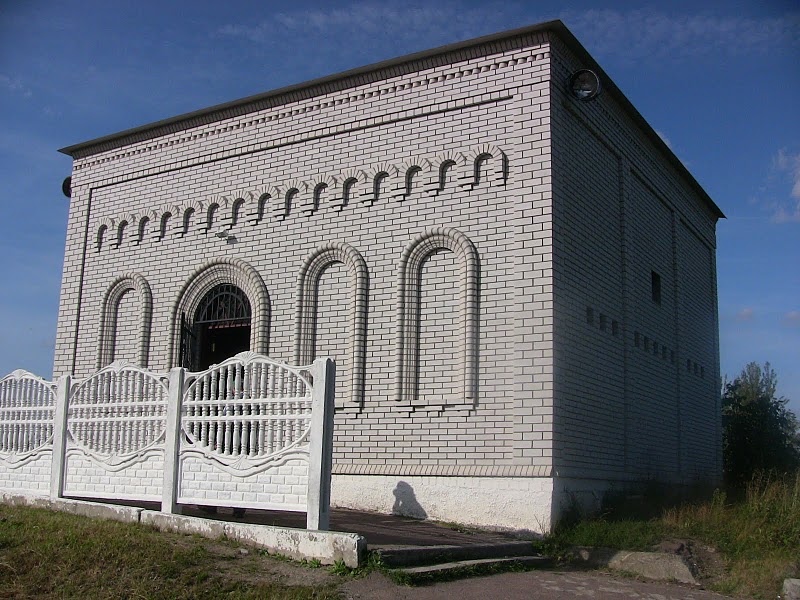
In September 1941, young men and women in the ghetto were ordered to come “dig up potatoes”. On 15 September, 18,600 people, practically the entire ghetto, were murdered near the village of Khajino. A commemorative gravestone marks the site, indicating merely that the victims were “peaceful Soviet citizens”.
Digging for potatoes
“And we learned today, from a peasant friend who was passing by the barbed wire, that the Jews who had been taken to dig up potatoes were actually digging deep trenches, two miles from the city near the aerodrome on the road to Romanovka. Remember that name, Vitia, for that is where you will find the mass grave where you mother will be buried.”
Vassili Grossman, Life and Fate. (New York: Harper & Row, 1986).
The lone synagogue
Berdichev once featured a number of synagogues, prayer houses, and even a Hebrew printing shop. Only one synagogue remains today, at the top of Sverdlov Street, where the city’s last 700 Jews, most of them elderly, strive to keep their tradition alive.
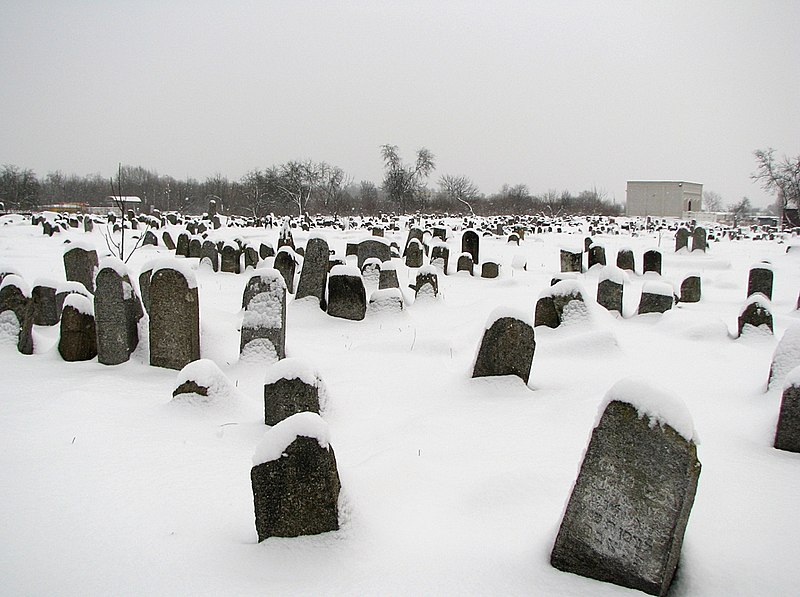
The large Jewish cemetery in Berdichev is impressive, with beautiful old graves often overgrown with vegetation. A path between the graves leads to a mausoleum built above the grave of Rabbi Levi Yitshak, the “great master who knew how to read between the lines of the Torah”.
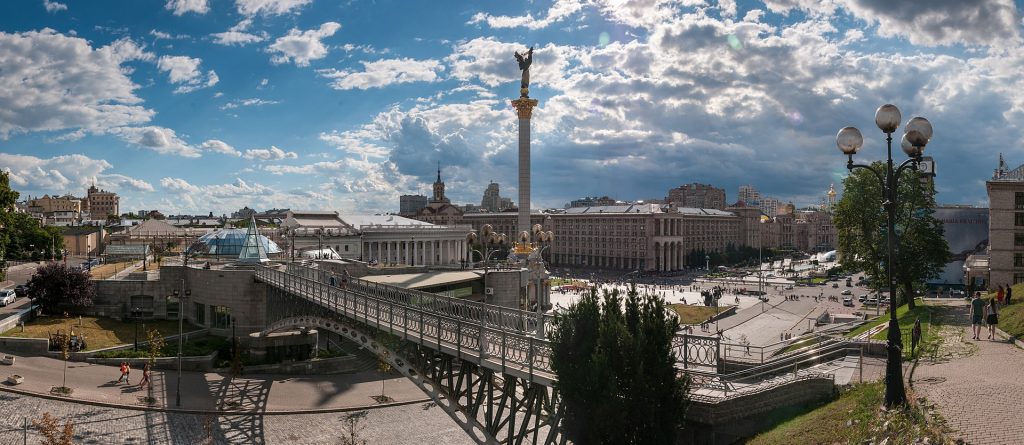
The terrifying war against Ukraine changes, of course, the function of these pages devoted to the Jewish cultural heritage of that country. Many of the places mentioned were razed to the ground by bombs. While these pages are not intended in the present time for tourism, they may be useful to researchers and students as historical references. References to so many painful histories during the pogroms and the Shoah, but also to the glorious history of Ukrainian Judaism, in its cultural, religious and Zionist dimensions. Wishing the Ukrainian people a speedy end to these atrocities of which they are victims.
From the outset, the history of Kiev has been tied to that of its Jewish community. One of the earliest references to the city is in a tenth-century document discovered in the genizah in a Cairo synagogue: a letter sent to Kiev by Jacob bar Hanuker. A synagogue in Kiev proper is mentioned in a document dating to 1113. A zhydovskie vorota (Jewish gate) is mentioned in a text from 1146, near present-day Lvov Square.
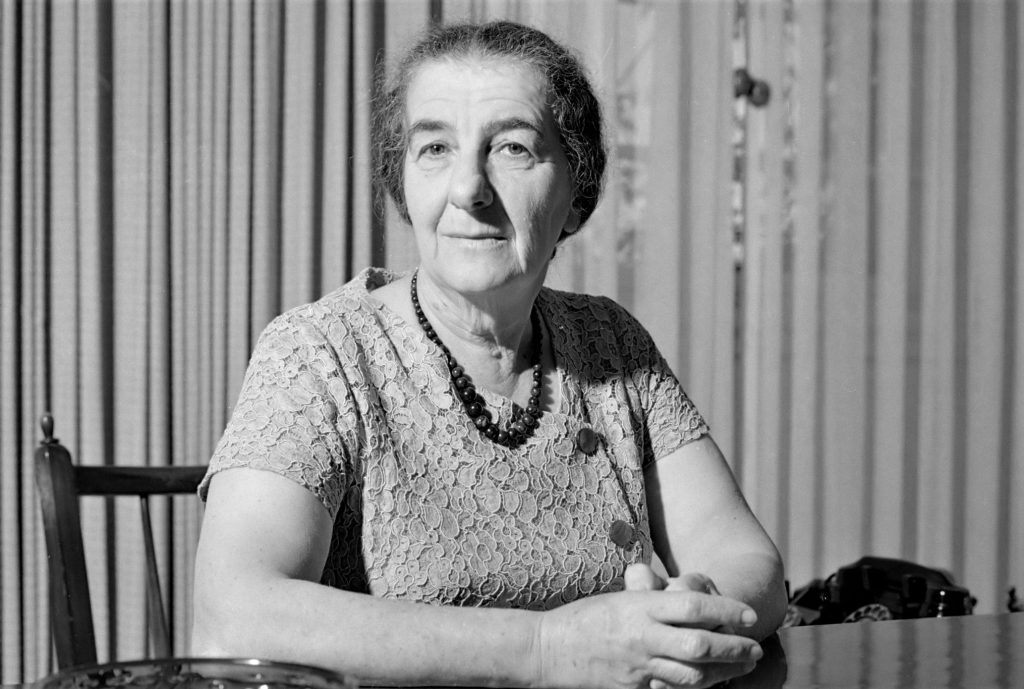
Decimated by the Tatars and then the Cossacks, the Jewish community never truly regained its footing here until the late nineteenth century.
The city’s two major temples, Tailors’ Synagogue and Brodsky Synagogue, date back to this era and are both still active today.
The synagogues of Kiev
Built in 1894-95 and designed by the architect Nikolai Gordenin along the Dnieper in the Podol district, the Kravtsev (tailors’) Synagogue bears no apparent Judaic marking on its facade. It nevertheless contains eastern and neo-Roman architectural features typical of nineteenth-century synagogues. Despite its luxurious interior, it was never shot down during the Soviet era.
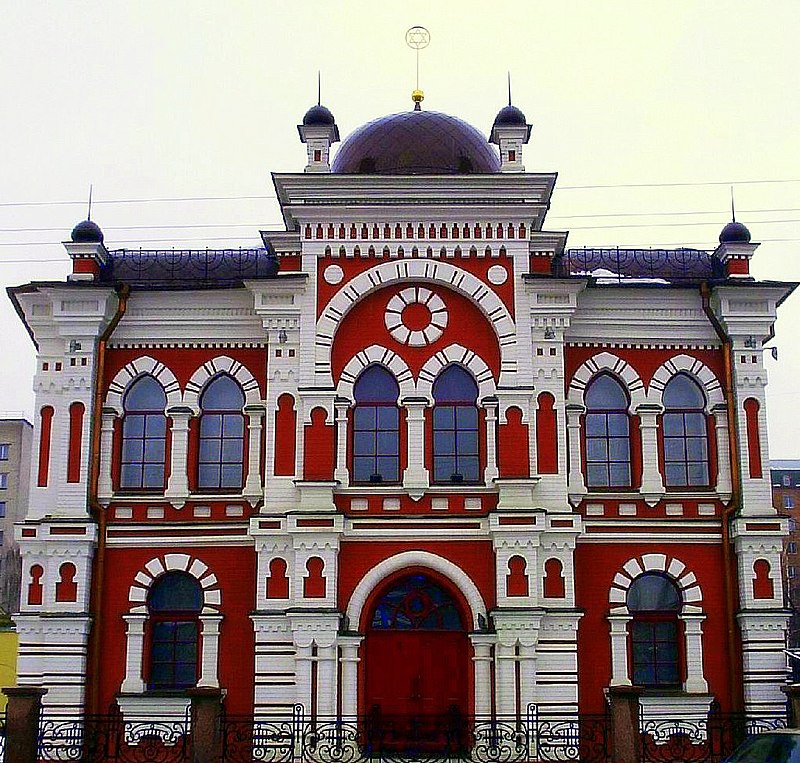
The Central Synagogue has long been referred to by the name Brodsky in honor of Lazare Brodsky, the wealthy Kiev industrialist and patron who financed its construction. Built according to plans by the architect Georg Schleifer, it dates to 1898.
“He’s important, that Brodsky! When he rides by in his carriage, everyone on Kreshchatik Street and all the Jews tip their hats, myself included. Ah, if only one day I might become a Brodsky!” So wrote Sholem Aleichem.
The Central Synagogue functioned as a puppet theater until 1997. It has since been returned to the Jewish community; it is overseen by the Chabad (Lubavitch) community. It was completely restored in March 2000 and has regained its former splendor. There were other synagogues in Kiev, though their structures have not all survived.
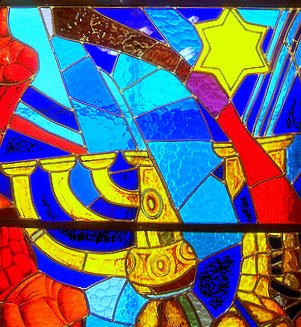
The Merchants’ Synagogue, a few steps away from the Central Synagogue on Shota-Rustaveli Street, has been converted into the Kinopanorama cinema. The film Shoah was shown here in September 1998 with director Claude Lanzmann in attendance. The Galicia Synagogue once stood at Jilanska Street 97, not far from the station, while the Karaite Synagogue stood on Yaroslavov-Val Street; it was later turned into the “Actors’ House”. The Hasidic oratory once sat in the courtyard at Nijny-Val Street 37, in the Podol district.
The curious name of “Yehupets”
A tour of Jewish Kiev is linked to the personalities who lived here, such as Sholem Aleichem, who referred to the town by the rather silly name of Yehupets. “Everyone is laughing at me. I cannot even go out for a walk. They point at me and say, ‘That’s the wife of Menahem Mendel of Yehupets’. Not such a bad name, actually”, Aleichem claims in Menahem Mendel.
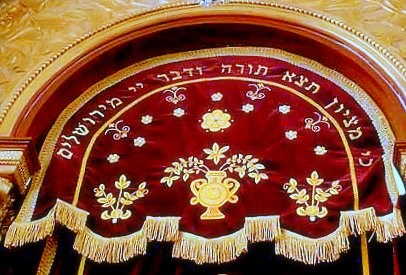
The houses where Aleichem lived are easily located: 5 Bolshaya-Vassilikovska Street from 1897 to 1903, and 27 Saxaganski Street from 1903 to 1905. A monument dedicated to Sholem Aleichem was erected on Basseinaya Street near the Bessarbia Market in 1997, not far from 5 Basseinaya Street, where Golda Meir was born and lived from 1898 to 1906.
Other well-known figures of this Jewish world include Isaac Babel, who studied here; pianist Vladimir Horowitz, who was born here in 1903 and lived here until 1925 (when he emigrated to the United States), musicologist and Yiddish folklorist Moses Beregovski, writer Ilya Ehrenburg, actor Solomon Mikhoels, and writer Peretz Markish, later arrested and gunned down by the Soviets along with other members of the Jewish Antifascist Committee.
The massacre of Babi Yar
The most tragic event in the history if Jewish Kiev was the Babi Yar massacre, committed by the SS and the Einsatzgruppen on 28 and 29 September 1941, several days after they captured the city. All of Kiev’s Jews were rounded up and led to the Lukianovka Jewish Cemetery, and from there to the Babi Yar ravine. They were all shot to death in the two days that followed.

Two monuments now commemorate this tragic episode:
The first, on Dorogojitska Street, was put up in 1976 after the poet Evgenii Evtushenko, composer Vladimir Shostakovitch, and other members of the Soviet intelligentsia protested the government’s efforts to erase the memory of the event. It is an official monument in grand Soviet statuary style. The plaque is inscribed in three languages, Russian, Ukrainian, and Yiddish, yet fails to mention the Jewish identity of the victims, reading only: “In this place, German fascists executed nearly 100000 citizens of Kiev and prisoners of war”.
The second monument, erected on Melnikova Street in 1991 and located at Babi Yar ravine only yards away from where the actual executions took place, depicts a large menorah but makes no additional clarification. “In memory of the tragedy at Babi Yar”, it reads in Ukrainian. Each year, on 29 September, memorials are held, bringing together the Jewish community and other prominent figures from the city.

Despite the prohibition against Jews living in Russia, beyond a clearly defined zone, there were a few remarkable exceptions in the eighteenth century, particularly in the capital, Saint Petersburg, where the Russian-Jewish intelligentsia was concentrated.
In 1900, Jews in Saint Petersburg already numbered 20,385, or 1.4% of the population. This figure would climb to 50,000 by 1917 (2%), 95,000 by 1929 (5.3%), and 201,500 in 1939 (6.3%). Official sources estimate Saint Petersburg’s Jewish community today at somewhere between 80,000 and 100,000 members.
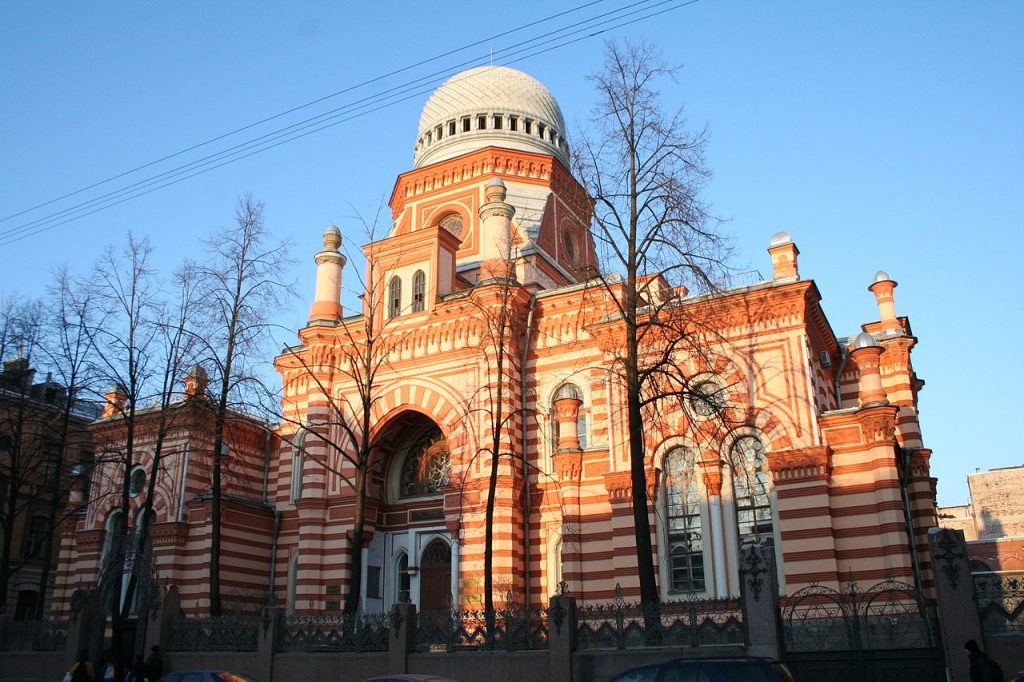
Jews in Saint Petersburg (Leningrad during the Soviet era) came from a higher social class than those living in the shtetlach in Ukraine or Belarus, for it was the community’s more affluent segments that managed to leave the ghettos for the big city. There were often tradespeople, but also white-collar workers, civil servants, members of the liberal professions (doctors and lawyers), and artists, the majority of whom were assimilated. Although, in 1869, 98% of Jews in Saint Petersburg claimed Yiddish as their native language, that number had fallen to 55% by 1910, 30% by 1926, 20% by 1939, and to microscopic levels today.
This progressive loss of interest in the mother tongue, fairly logical for those living in a world-class capital where everyone vied for social advancement, also contributed to the poor success of Jewish Theater Studio: founded by Granovsky in 1919 on Vasilievsky Island, the studio was forced to relocate in Moscow in 1920, where the public was more working class.
Properly speaking, there was no Jewish quarter in Saint Petersburg, as Jews were spread out across the city. However, they were more concentrated in and more partial to some areas than others.
The great Petersburgers
Numerous Jewish luminaries in Saint Petersburg made their mark on the social and political life of Russia. To name a few:
Piotr Shafirov (1669-1739): Son of a merchant from Smolensk, preeminent statesman, diplomat, and businessman, he was an adviser to Peter I. An ennobled master of Russian foreign policy, he was also an ancestor of the poet Viazemsky and the writer Aleksey Tolstoy.
Simon Dubnov (1860-1941): The great historian of the Jewish world, author of numerous books, including his ten-volume History of the Jews, he died in the Riga ghetto.
Abram Peretz (1771-1833): Son of a rabbi from Lubartów, he came to Saint Petersburg under Potemkin’s protection and became a government economic adviser.
David Feinberg (1840-1916): Hailing from Germany, he moved to Saint Petersburg in the late 1860s. He became the patron of the Choral Synagogue.
Jacob Halperin (1840-1914): A civil servant in the Ministry of Justice.
Samuel Palakors (1837-88): Financier, founder of banks, and builder of railroads, he contributed 16% of the construction of the Choral Synagogue of Saint Petersburg.
Anton Rubinstein (1829-94): Born in Polodia (Ukraine), this famous pianist, composer, and conductor founded the Russian Musical Society in 1859 and the Saint Petersburg Conservatory in 1862, which bore his name.
Maxim Vinaver (1863-1926): Jurist and politician, Kadet Party member and deputy, he was elected member of the Constituent Assembly in 1917 and later became a minister.
Dekabristov (Decembrist) Street
On what was formerly Offizierskaya Street near the synagogue and Teatralnaya Square, the building of the Eisenbeth Jewish secondary school still stands at number 18, behind the Marinsky Theater (it serves today as the Marinsky box office).
Toward the end of the Decembrist Street, at number 57 you can find the house where Alexander Blok lived from 1912 to 1921 and died.
The neighborhood continues around the Griboiedov canal, where at number 140 a society dedicated to helping the city’s impoverished Jews provided a soup kitchen and mikvah.
Vasilievsky Island
This very popular neighborhood, with its market on Bougskaya Street, looks of Podolia, Chortkow, or Zhmerinka. On the adjacent streets called Tenth Line and Fifth Line, there was a Jewish School (Fourteenth National Jewish School at 37 Tenth Line Street) and the Etnographic Historical Society Museum (at 50 Fifth Line Street). Simon Dubnov once worked at this museum, which was opened in 1916 by An-Ski, a pseudonym of Shlomo Zanvil Rapoport, but it closed in 1929 along with the majority of other Jewish institutions in Saint Petersburg.
The Choral Synagogue
The Choral Synagogue is the nerve center of Jewish life in Saint Petersburg. This imposing, high-domed building was constructed in 1899 with financial support from many patrons. The main room has been restored and was reopened in 2001. In contrast to Moscow, this is the city’s only synagogue; it thus serves the entire Jewish community. The chief rabbi, Menahem Mendl Pevsner, stresses that although he is a follower of Chabad, the community itself is not explicitly Chabad. The site today houses all Jewish community institutions, including a yeshiva, a kosher kitchen, a shop, and a library.
The memory of Saint Petersburg’s Jewish community and, more generally, that of all Russian Jews is preserved in the Jewish Community Center’s well-stocked library. It contains a unique collection of Jewish samizdat publications of the Soviet era and Jewish periodicals dating back to the days of Perestroika.
The Preobrazhensky Jewish cemetery
Unlike Moscow, Saint Petersburg has a Jewish cemetery , Preobrazhensky, located far from downtown near the southeast edge of the city. It is truly immense. A prayerhouse built in 1908-12 and designed by the architect Gewirtz stands at the cemetery’s entrance and includes a sort of columned atrium. Of course, the cemetery attests to the vibrancy of Saint Petersburg’s Jewish community.
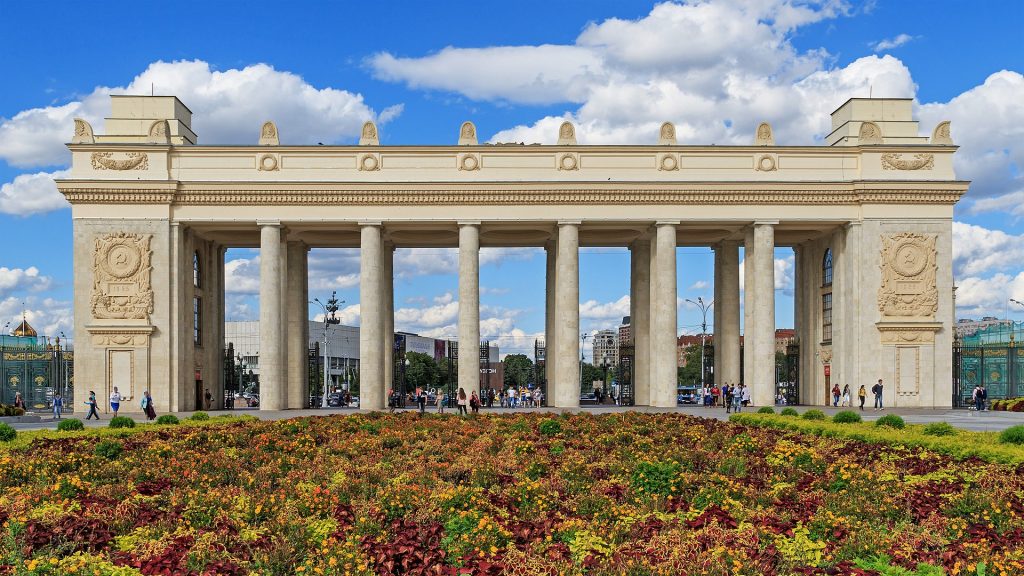
Due to the expulsion of Jews from Russia and their strict confinement within the “residential zone”, they were few Jews in Moscow prior to 1900, which explains the absence of a Jewish quarter in the capital. The 1902 census lists 9048 Jews in Moscow, or well below 1% of the city’s population.
The synagogues
With columns worthy of a Roman temple, the Grand Choral Synagogue was built in 1891 in neoclassical style following a design by the architect Simon Eibushitz. Procrastination by the government and various restrictions imposed by the czarist regime delayed its official opening until 1906. It had hardly been completed, in fact, when a ukase issued by Moscow’s new chief of police expelled Jewish tradespeople from the city and forced the community to either sell the synagogue or convert it into a “charity organization” before 1 January 1893.
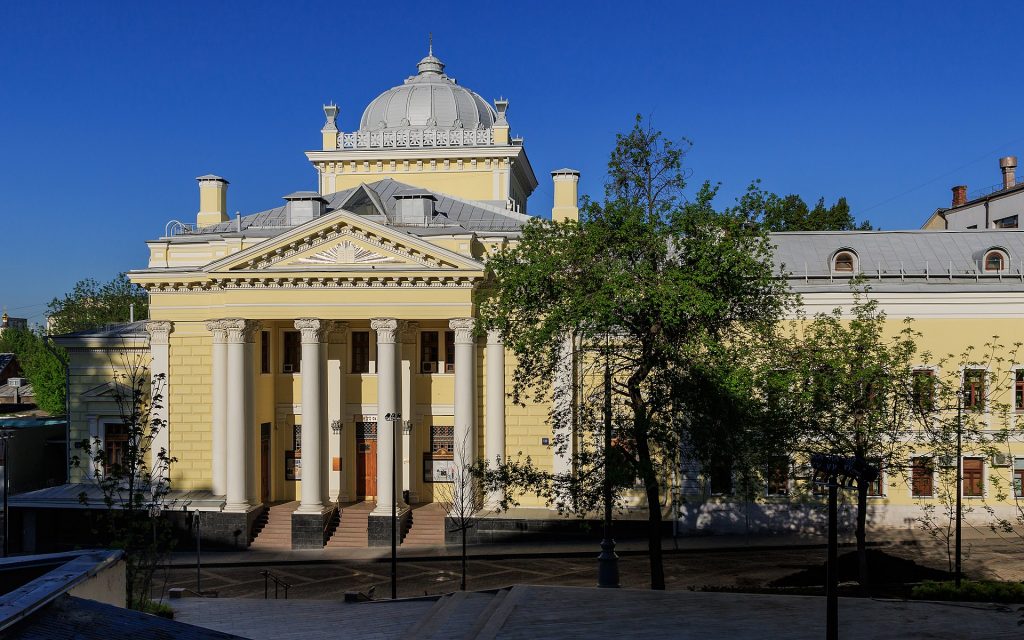
The government at first hoped to install a trade school in the building but changed its mind and allowed the Jewish community to open a Talmud Torah school here instead. Authorization was finally granted in June 1906 for the completion of interior work necessary for the building’s use as a synagogue, a task entrusted to an architect by the name of Klein. It has been continuously active ever since, on a quiet street behind Kitay Gorod.
What is now a Chabad Lubavitch Synagogue was founded in 1883. It was presided over by Rabbi Moshe ben Itshak-Ayzik, who was gunned down in 1938. Reopened fifty years later, today it serves the Orthodox Jewish community. An interesting Jewish bookstore is located inside.
The Chaverim synagogue and community centre was inaugurated in 2012 by the Lubavitch movement and with the support of the Jewish Federation of Russia . Located next to Moscow University, it welcomes many students. The centre offers regular services on Shabbat and holidays, an educational centre and a cafeteria. There is also the Moscow Community Centre , which is largely attended by English-speaking expatriate communities and Israelis, and the Liberal Moscow Community Centre , which is reformist and focuses its activities on families and children.
The hidden synagogue
During the Soviet era, the address of Moscow’s Grand Synagogue was kept secret. A 1988 guidebook thus presented the site in the following terms: “The building, with its ceremonial colonnade (at number 10) was built in the mid-1890s by Eibushitz (interior by Klein, 1906). In 1948, the synagogue welcomed the first Israeli ambassador, Golda Meir.
Muscovite Jewish life
In the years following the First World War and the October Revolution, Jews left the former “Pale of Settlement” and began pouring into the new capital. In 1917, 60,000 Jews lived here, or 3,5% of the population; by 1932, they had reached 86,000, or 5,6%, and by 1939 they numbered 250,000, or more than 6%. This included many intellectuals and innovative artists, writers like Ehrenburg, Grossmann, and Peretz Markish; filmmakers like Sergey Eisenstein; theater personalities such as Alexander Granovsky and Solomon Mikhoels; and painters like El Lissitzky and Marc Chagall.
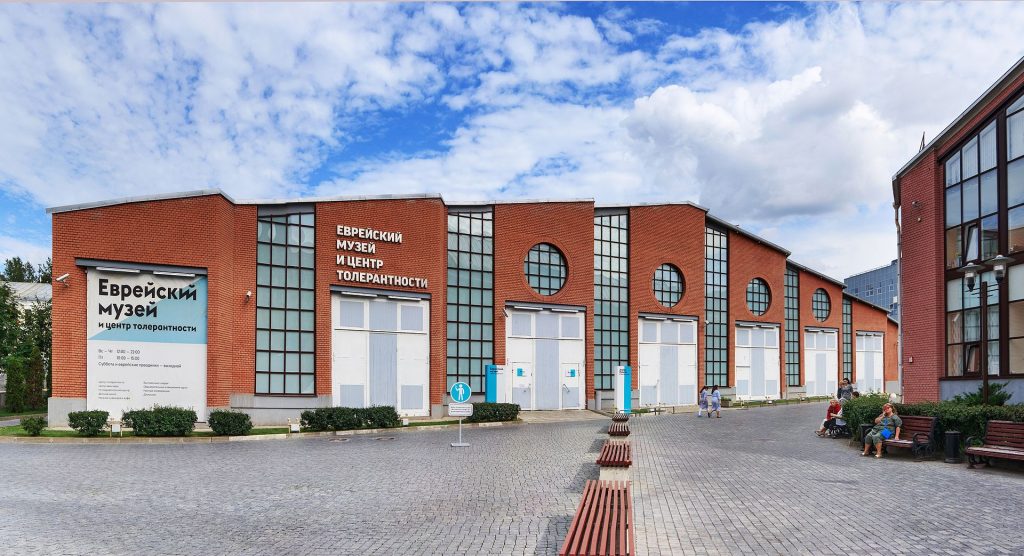
One of Moscow’s major Jewish intellectual haunts in the 1920s was the GOSET, the Jewish State Theater founded by Alexander Granovsky; Marc Chagall worked as a set designer there, soon followed by Faltz and Altman. Among actor Solomon Mikhoels’s greatest successes was the production of Mendele Moykher Sforim’s The Travels of Benjamin III in 1927. The theater was located in Malaya Bronnaya, near Tverskoy Boulevard, at the site of the present-day Na Maloy Bronnoy Theater. Such intellectual ferment was smothered in the late 1920s and completely extinguished in the 1930s with the closure of Yiddish schools in 1935 and the later prohibition of all Jewish cultural life. Jewish life would have to wander fifty years in the desert before its rebirth in Moscow.
So, after fifty years in the wilderness, Jewish life has been reborn in Moscow in recent years. The Museum of Judaism and Tolerance opened its doors in 2012. The permanent exhibition presents the history of Russian Jewry from Catherine II to the present day in an interactive way. The museum also offers educational programmes, temporary exhibitions and conferences.
Of interest in Klooga is the Shoah Victims’ memorial. A concentration camp occupied the site and another was in Vaivara. Between August and September 1943, the 9,000 people still present in the Vilnius ghetto were sent to the concentration camps in Estonia. The three main camps were those of Valveira, Klooga and Lagedi. Each of these camps kept nearly 3,000 people. About 20 other smaller camps imprisoned the rest of the deportees.
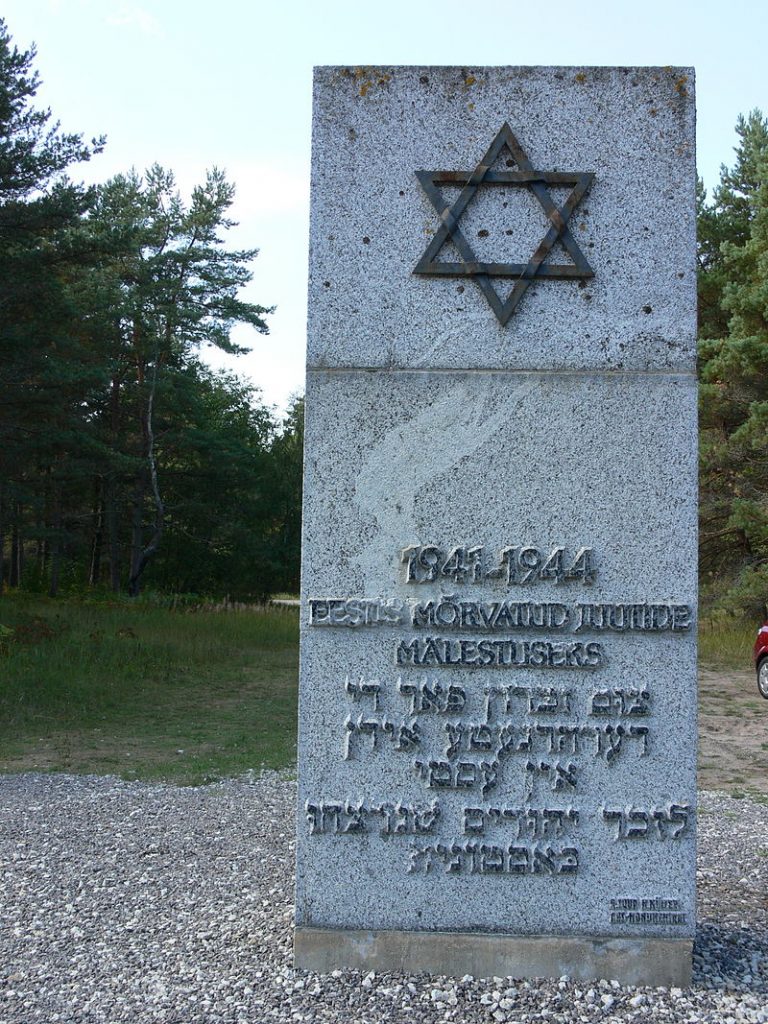
In July 1944, faced with the approach of Soviet troops, the concentration camps were gradually evacuated and the prisoners transferred to the Stutthof camp. 426 Jews were murdered at Lagedi camp on September 18 and 2,500 the next day at Klooga camp. Only 85 prisoners managed to hide and survived. This camp was liberated a week later by the Red Army.
In 1994, a monument in memory of the victims was erected on the site of the Klooga camp.

The modern synagogue is a low building, resembling a large majority of synagogues before the Shoah. The Jewish presence in the city of Tallinn seems to date from at least the 14th century, according to documents found.
From 1561 to 1710, when the city was captured by the Swedish army, the settlement of Jews was prohibited in the area. After the Swedish rule, Tallinn was captured by Russia. Nevertheless, the resettlement in the city was not made much easier for Jews by the governing authorities.
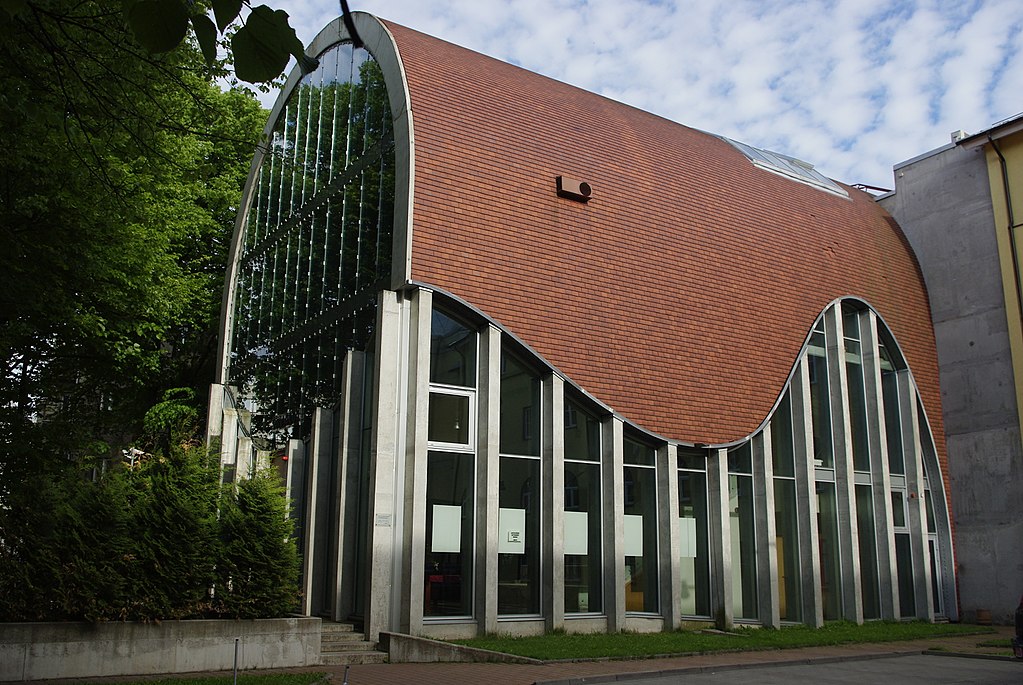
Those who founded a community were mainly drawn from the Russian military ranks stationed in the city. A synagogue was founded in Tallinn in 1883 and located in the city center, a place of welcome that prompted the arrival of other Jews in the city and the creation of a cultural center, a mikvah and butcher shops. Thus, in 1897, the Jewish population was almost 1,200 people.
In 1922, there were nearly 2000 Jews and a very present cultural life, especially school. Annexation by the USSR in 1940 put an end to local community organization. Brutal measures were applied by the Soviets.
Following the German occupation, the Holocaust claimed a large number of victims in the city and the synagogue was destroyed by bombardment. Very few survived, an estimated 10,000 people were murdered.
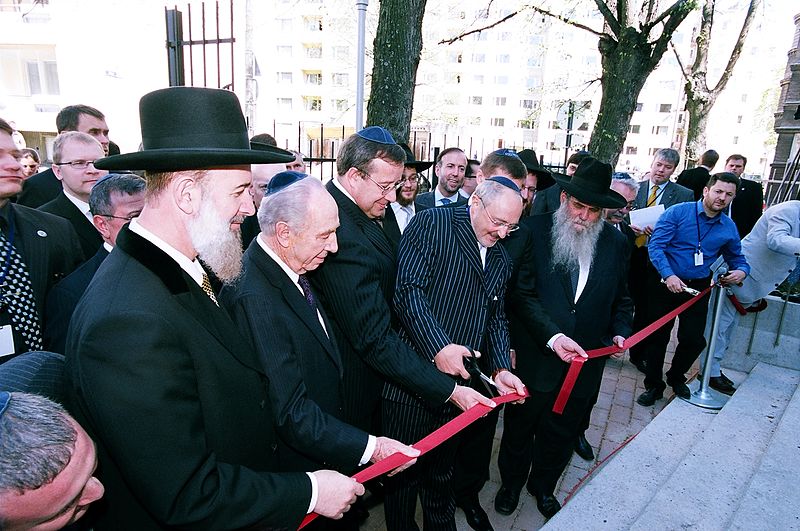
The Jewish presence was fairly stable between the end of the war and the 1970s, hovering around 3,700 people. Following Perestroika and the country’s independence, many Jews emigrated, mainly to Israel.
Following Perestroika and Estonian independence, a Jewish Cultural Society was founded in the city in 1988. The following year a Jewish school was opened. There was no synagogue, but places on loan to temporarily host prayers and celebrations.
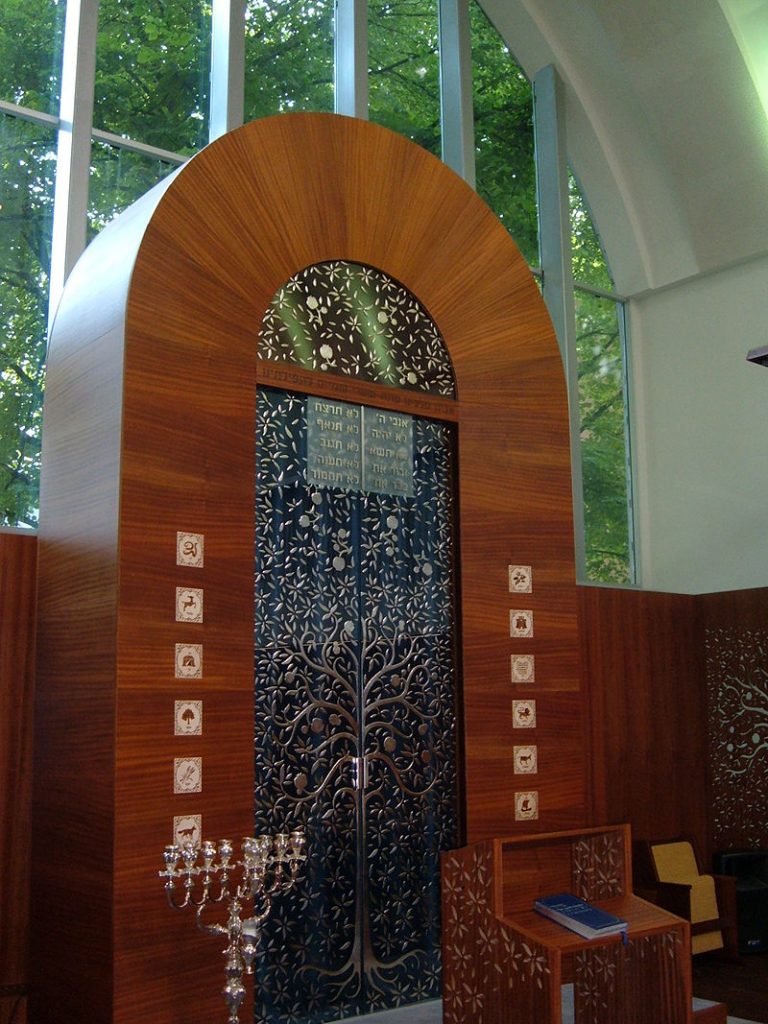
A new synagogue was established in Tallinn at the turn of the 21st century. In 2012, the Jewish presence was estimated at 1,700, a far cry from the 5,500 in 1959. The opening was a milestone as it was the first synagogue to be built after the war and took place in the presence of the Prime Minister. The building also hosts a kosher restaurant, a mikvah and a museum .
An ancient Jewish cemetery has been present in Tallinn since 1856 on Magaziin Street. A new cemetery was opened in 1909 on Rahumae Street. For its centenary, it was renovated and houses a monument in tribute to the victims of the Shoah.
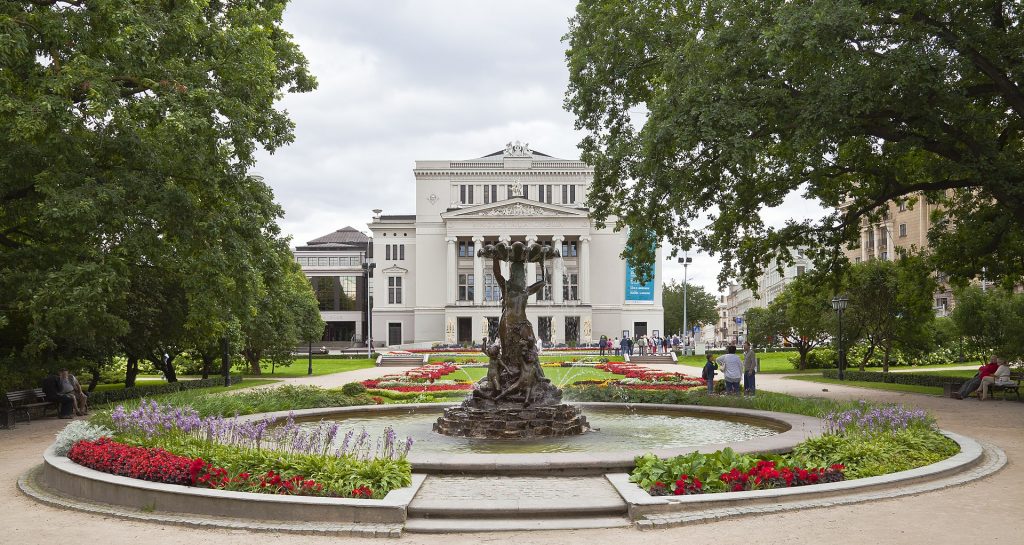
Around 9,000 Jews live in Riga. Riga is also home to the only Jewish hospital in the former Soviet Union. The Latvian Society for Jewish Culture is the principal organization of the Jewish community.
Today, the Latvian capital remains an important financial and cultural center. The Jewish presence in Riga dates back at least to the 13th century. Expelled in the 14th century, they resettled in 1561 when Poland took control of the territory. Previously obliged to bury their dead in Poland, Latvian Jews obtained permission to build a cemetery in 1725. Despite the improvement in their situation, by the mid-18th century there were only around two hundred Jews in Riga. Most were craftsmen, intellectuals, and doctors.

In the 19th century, the Jewish population grew from 513 in 1824 to over 20,000 in 1897. In 1935, the Jewish community reached its peak with 43,672 members, representing 11% of Riga’s population. The vast majority of those unable to flee the Nazi invasion were massacred during the Holocaust.
Following the German defeat, the community was reconstituted, notably with Jews from other parts of the Soviet Union. In 1989, before the fall of the Soviet empire and Latvia’s regained independence, there were 23,000 Jews. Many of them migrated to Israel, England and the USA.
Latvia’s independence led to a renewal of Jewish life, as illustrated by the opening of Jewish schools and yeshivoth in the early 1990s.

Few of Riga’s religious edifices remain. The Kar Schul Synagogue , which opened in 1871 and was located at 25 Gogol Street, burned down in 1941. Several hundred people trapped inside perished in the blaze. Some ruins of the synagogue can still be seen, as well as a gray stone monument engraved with a Star of David.
Constructed in 1905, the synagogue on Peitavas Street was able to be restored because it was used by the Nazis as a warehouse and so escaped destruction. It is currently used for worship.
The Jewish Museum is located in the historic building that once housed the Jewish theater. Today’s community center is also located here. The museum features exhibits devoted to the history of Latvian Jews and a video that retraces this history of the Shoah in Latvia. There is also an exhibit related to famous Jews of Riga.

Among them are the Israeli philosopher Yeshayahu Leibowitz, an original and controversial thinker whose strict Jewish Orthodoxy nonetheless makes room for modernity and a left-leaning pacifism; the political philosopher Isaiah Berlin (1909-97), who became a British citizen and a professor at Oxford; and the great rabbi Avraham Kook (1865-1935), the mentor of the religious Zionist movement and the first Chief Rabbi of Palestine under the British mandate.
There is a plaque on the building where Isaiah Berlin lived on Alberta Street (it is located next to the only building on the street with a yellow facade). The former home of Isaiah Berlin, like all of those on the street, was designed by the famous Russian architect Eisenstein, father of the celebrated film director.
The former Jewish cemetery, with its thousands of gravestones, was transformed into a park. The new Jewish cemetery was created in 1920. Registers of the deceased dating from 1951 to the present are available for examination.
The Center for Judaic Studies at the University of Latvia was set up in 1998 and is directed by Professor Ruvin Ferber. It includes a library.
Visitors doing genealogical research can go to the State Historic Archives , which possesses documents regarding most of the cities and villages with a Jewish presence before the Shoah.
One should also note that the Shefayim Kibutz in Israel is the site of the Association of Jews of Estonian and Latvian Origins, which has a library and important archives relating to life in shtetlach before the Shoah.

Monuments to the Riga Jews massacred during the Holocaust have been erected in the Rumbala and Bikernieki forests. Between November 30 and December 8, 1941, 25,000 Jews were murdered by the Nazis in the Rumbala forest. After a long struggle with the Soviet authorities after the war, the local Jewish community was granted the right to install a memorial stone there in 1964. The current memorial, with a menorah at its center, was built in 2002.
Between 1941 and 1944, 35,000 people were murdered in the Bikernieki Forest, mainly Jews and political opponents of the Nazi regime. Some 20,000 Jews are buried there. A metal structure symbolizing the horrors of the Holocaust was erected in 2001, with thousands of granite stones surrounding a black cube.
Panevezys is Lithuanian for Ponevezh, famous for its yeshiva that its prewar leader, Rav Yosef Kahaneman, reestablished following the war in Bnei Brak, the Orthodox quarter of Tel Aviv.
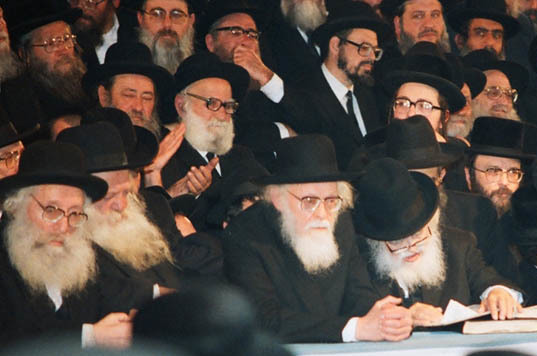
The Ponevezh yeshiva in Israel is today the principal center for the Mitnagdim sect and has given birth to the Israeli political party Degel Hatorah.
Rav Eliezer Schach, Degel Hatorah’s leader, was, until his death in November of 2001, one of the last survivors of the religious world from before the Shoah, nothing of which now remains.
The current community is composed of only a hundred or so people.
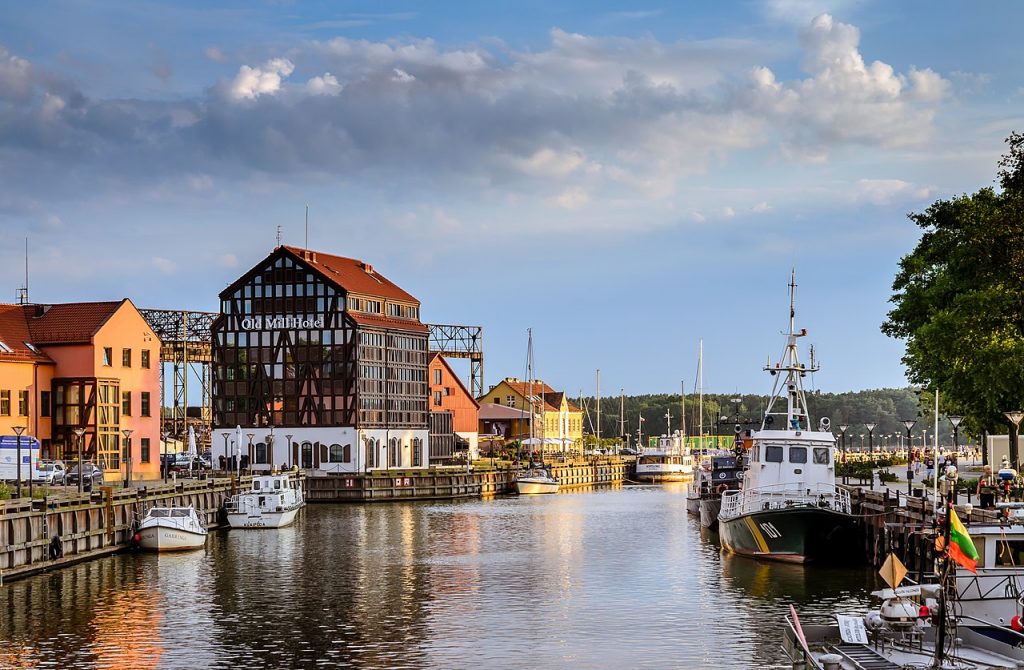
Klaipeda is the former German city of Memel, a place where Judaism came under the influence of the modern nineteenth-century Orthodoxy originating in Germany. The city is still home to some 300 Jews.
Despite limited rights of residence, the Jewish presence in Memel, which was under Prussian control at the time, dates back to the middle of the 16th century. They gradually gained access to trade fairs in the following century.
It was not until the early 19th century that they were able to form a community here. By the middle of that century, it consisted of 400 people. This figure rose to 2,000 in 1910, then to 9,000 in 1939. Israel Lipkin (Salanter), the founder of Moussar, lived there and set up a yeshiva in the 1860s and 1880s.
The town changed its name after the First World War, becoming Klaipeda following the Treaty of Versailles in 1919. Most of Klaipeda’s Jews managed to escape to the north of the country before the Nazis invaded in 1939, but were among the many Lithuanian victims of the Holocaust.
The town’s Jewish population stood at 1,000 in 1967, gradually declining to 700 by 1990. The following year, a monument to the victims of the Shoah was erected in the municipal cemetery.
The Jewish cemetery was established in 1759.
Sources: Yivo
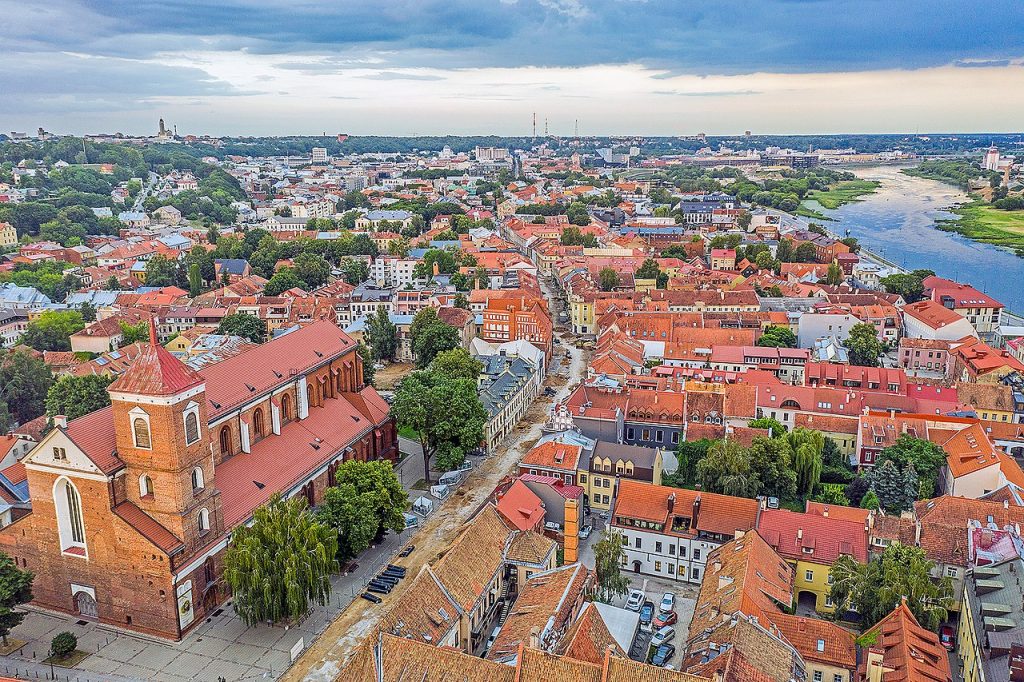
Nothing of the Jewish presence in Kaunas remains but the synagogue, whereas before the war there was a yeshiva, a kosher slaughterhouse, and a prison. The birthplace of Emmanuel Levinas, Kaunas was before the Shoah a major center of European Judaism, with a population of 40,000 Jews. The large yeshiva of Slobodka was located in a suburban district today called Vilijampole.
The Jewish presence in the city of Kaunas dates back to at least the 16th century. They worked there but were expelled from the city, notably by decisions in 1682, 1753 and 1761, until their presence stabilised at the end of the 18th century. When they were officially readmitted in 1782.
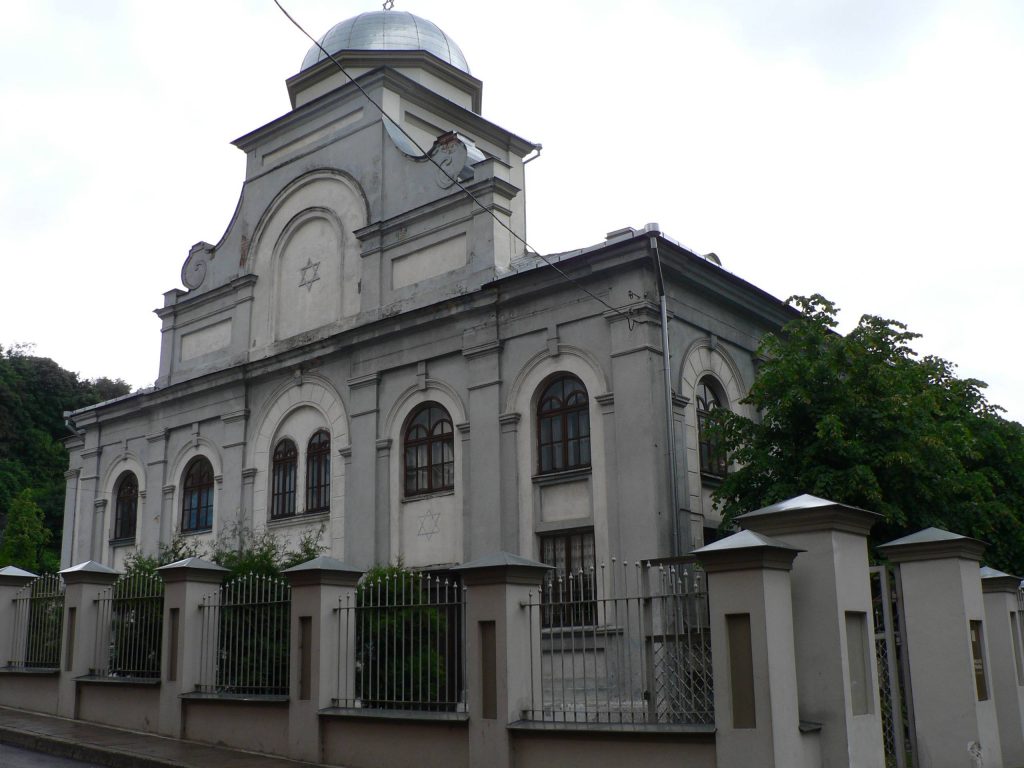
Kaunas became part of Russia after the partition of Poland in 1795. The Jewish population increased over the century. It increased from 2,000 in Kaunas and Slobodka in 1847 to more than 25,000 at the end of the century. This was accompanied by a great Jewish cultural development. Numerous yeshivoth were established, including Or Hayim, Knesset Beth Yitshak and Knesset Israel.
The synagogue features a blue, two-story classical facade and is located at 11 Ozheshkienes Street. The Jewish orphanage and the Jewish school were closed in 1951.

In 1908, 32628 Jews were registered in Kaunas, which constituted almost 40% of the total population. When Lithuania became independent during the inter-war period, the Jewish population continued to grow. Thus, there were no less than five newspapers on Jewish culture.
During the Holocaust, large numbers of Jews were victims of both violent disenfranchisement and local pogroms. In 1941, tens of thousands of Jews were locked up in the country’s ghettos. These ghettos ‘took in’ tens of thousands of other Jews transferred by the Nazis from other parts of Europe.
The ghettos were transformed into death camps. Many Jews took part in the Resistance, joining the maquis in the nearby forests. Shortly before the entry of the Russian troops, the Nazis accelerated the massacres. The vast majority of Lithuanian Jews were massacred during the Holocaust.
Faced with this situation, one man represented courage at the highest level, Chiune Sugihara. The Japanese diplomat saved 6000 European Jews by granting them visas.
Chiune Sugihara
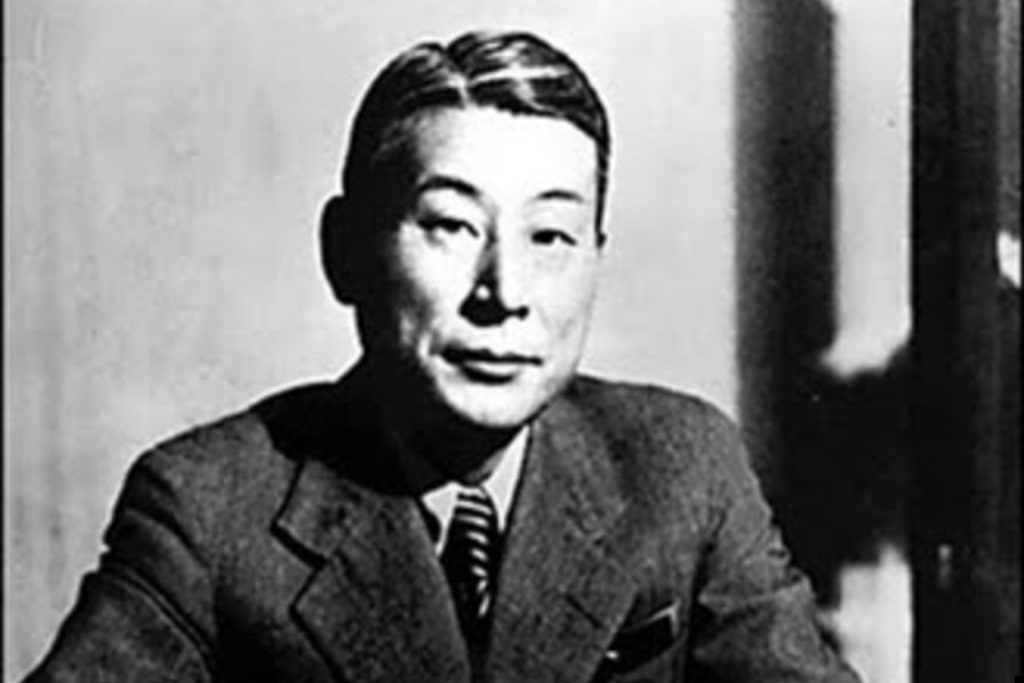
Based in Kaunas, Chiune Sugihara (1900-1986) was the first consul of Japan in Lithuania for a few months between 1939 and 1940. Between 31 July and 1 September 1940, Sugihara and one of his colleagues from the Netherlands saved about 6000 Jews by issuing visas, against the orders from their superiors, to let them out of the country. Sugihara stamped visas until the very moment his train was leaving Kaunas for Berlin, even throwing his stamp from his window who continued in issuing visas.
This heroic action ended the consul’s career and his life was obviously threatened. A lot of the Jews saved by Sugihara established themselves in Israel and since then honored his action, and at his death, the consul’s memory. You can visit Sugihara’s house, now transformed into a museum which retraces the destiny of this diplomat.
After the Shoah, many of the survivors made aliyah. Thus, in 1959, the town had less than 5,000 Jews. A synagogue and a Yiddish theatre group were the main Jewish cultural attractions in the 1960s.
Following the end of the USSR and the independence of Lithuania at the turn of the 1990s, about 500 Jews lived in the city.
In 2018, Japanese Prime Minister Shinzo Abe visited the museum dedicated to Chiune Sugihara which is located in the building that housed the consulate during the war. He said during the visit that “the whole world appreciated the courageous humanitarian act of Mr Sugihara, who worked with conviction and passion. He is a pride for the Japanese people.
In 2021, the city of Jerusalem inaugurated a square in honour of Sugihara in the Kiryath Yovel neighbourhood. His son, Nobuki Sugihara, participated in the ceremony. He himself had studied at the University of Jerusalem in the late 1960s and lived in the neighbourhood at the time. He said at the ceremony that he was moved to see the many descendants of people saved by his father. The Mayor of Jerusalem, Moshe Lion, also attended the event.
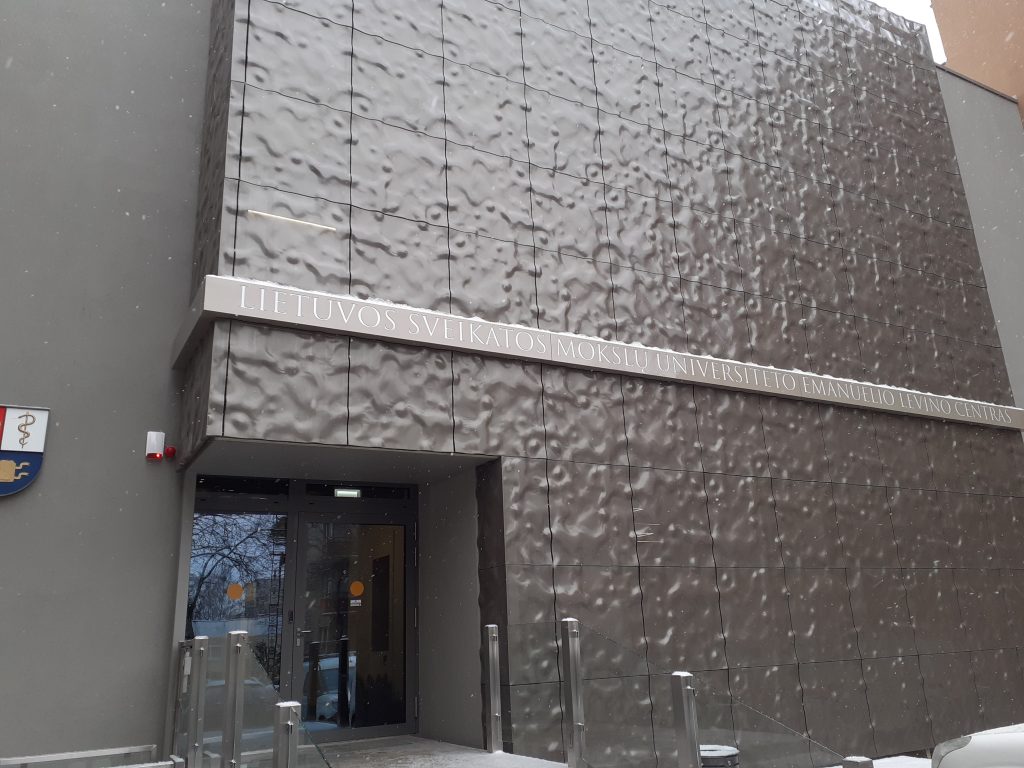
At the end of 2021, the Emmanuel Levinas Center was inaugurated in Kaunas. Salomon Malka, journalist and author of various books dedicated to the philosopher born in this city, participated in this event marking a willingness of the local authorities to highlight the Jewish cultural heritage.
Report by Salomon Malka : Kaunas 2022, the promise of dawn
Visas for life is the story of Sugihara, a Japanese vice-consul in Kaunas at the beginning of the Second World War. Before the pandemic, there were a majority of Japanese tourists, a good number of Israelis and students from the city’s schools, says the young guide who shows us around. The pandemic has reduced the number of tourists, and the museum is in a difficult financial situation.

The history of Sugihara is little known. We knew who Oskar Schindler was, thanks to Steven Spielberg’s film. But fewer people had heard of Sugihara, the elegant and courageous diplomat who saved the lives of thousands of Jews and was Japan’s first consul in Lithuania. His fame was short but intense, spanning a few months between 1939 and 1940.

There were two of them at the beginning, and it all started with Jewish refugees from Poland contacting Zwartendijk, the new Dutch consul, who immediately agreed to issue transit visas for the Caribbean island of Curaçao. The Dutchman then approached his Japanese colleague who started doing the same thing from his office, and when that same office was closed by his government authorities, he moved to the Metropolis Hotel and continued to issue passes until the last day of his departure from Lithuania, against the advice of his superiors. Anecdotally, he even threw his stamp out of the window of a train that was to take him out of the country. Together with Zwartendijk, they managed to issue at least 10,000 visas.

The house we visit, transformed into a museum in the district of Zaliakalnis, tells the story of this unusual diplomat, who will be distinguished as “Righteous of the Nations” by the Yad Vashem Institute.
Some of the Jews saved by Sugihara ended up in the United States, and many of them in Israel, among them the former Minister of Culture Zarah Warhafteg, whose portraits can be found on the walls.
For a long time, the Japanese diplomat kept this story secret. It was not until the 1960s that the first testimonies began to appear.
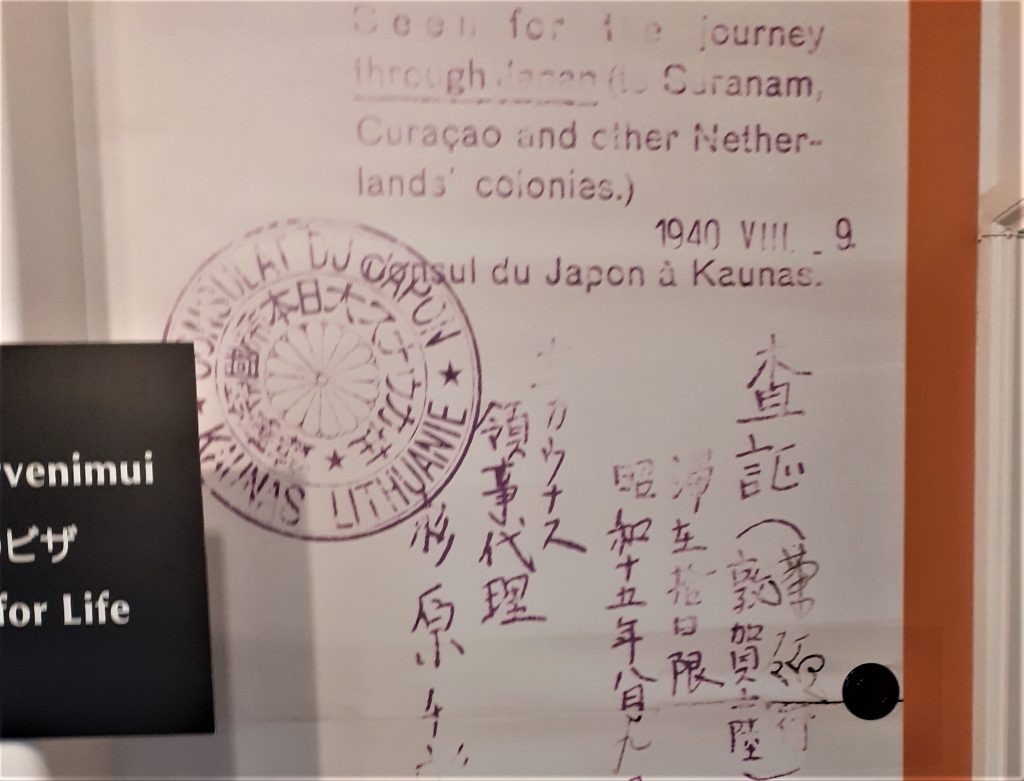
The Ohel Jacob Synagogue is one of the few religious buildings to have been preserved in Kaunas, and one of the last to remain in use. Its dome was damaged during the war and it was only in 2001 that it was restored. We visit this synagogue, which is now the religious and cultural centre of the Jewish community, with the leader Mausha Beirakat and his son. Built in 1871 thanks to the personal financing of a rich merchant from the city, Lewin Minkovski, it is classically built on two floors.
On the second floor, the walls display an impressive collection of paintings reproducing portraits of rabbis who have followed one another over the years, based on photographs. From the Gaon of Vilna to the great figures of the prestigious yeshiva of Slobodka – it used to be located in a suburban district now called Vilijampole -, these portraits are the work of a friend of our host, a Belgian from Antwerp, non-Jewish, who undertook to paint all the local glories lying along the walls and which tell the fabulous, intellectual and spiritual history of the city of Kovno. At the entrance to the synagogue, a mural tribute is paid to the soldiers who fell before independence in 1989, another is erected as a monument to the soldiers who fell in the First World War.
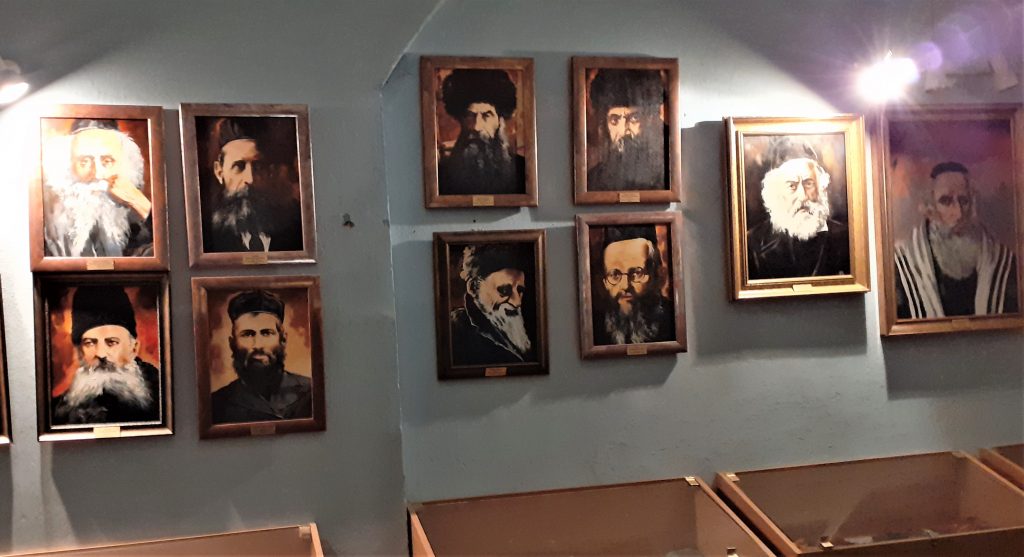
Dressed in a large black skullcap, not a little proud of his paintings, Mausha Beirakat offers us tea in his office while his son takes up the piano to play Chopin and Debussy.
We think about the fact that the synagogue was used as a warehouse by the Nazis during the war, and that it is perhaps for this reason that it has been preserved while a good part of the synagogues have been destroyed. It must be said that before the war, Kovno had 40,000 Jews and 25 active synagogues, of which only this last testimony remains.
The former President of the Republic, Wytautas Landsbergis, paid a fine tribute to the inauguration of the Emmanuel Levinas Centre in the heart of Kaunas, under the auspices of the Faculty of Medicine. The speaker did not shy away from the dark hours, and in particular the assassination, on their doorstep, of members of the philosopher’s family, his father, his mother, his two brothers Boris and Aminadab.
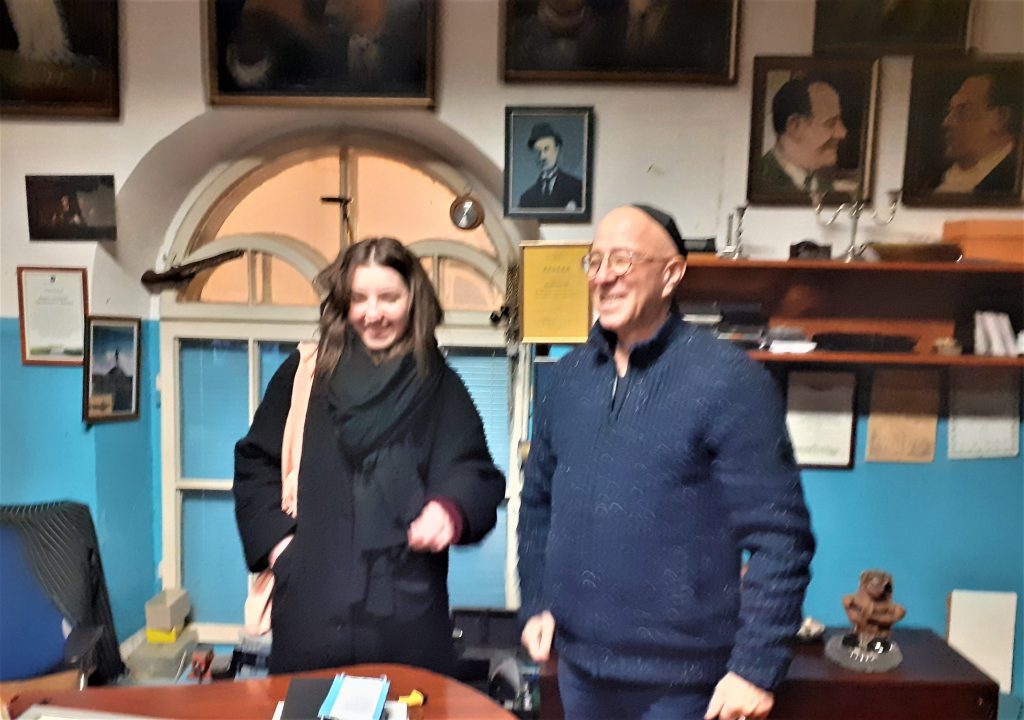
The grandson, David Hansel, recalls that Landsbergis’ mother saved Levinas’ cousin, who had been his classmate at the university, which earned her the distinction of the Yad Vashem Institute in Jerusalem. “One can say that the Litwaks are the honour of Lithuania,” the former President said. To which the Chief Rabbi of France, Haïm Korsia, who was present with a video message, replied: “I want to tell you how proud French Judaism is, after the 350th anniversary of the Gaon of Vilna, which was also celebrated by Lithuania.
Among the great figures honoured by the Lithuanians, another illustrious writer, not from Kaunas but from Vilnius, is Romain Gary. All his works have been translated into Lithuanian. There is a street named after him in Vilnius. A monument has been erected on the corner of the street where he lived as a child, depicting a child looking up at the sky, taken from an autobiographical scene in which he recalls his mother – a wonderful mother figure who continued to send him letters at the front even though she was no longer with us. He would say of her, only half-jokingly, “My mother is the first General de Gaulle I ever met! The book is called Promise at Dawn.
With these two names, Levinas and Gary, Lithuania is ready for 2022, the year in which the city of Kaunas is named European Capital of Culture.
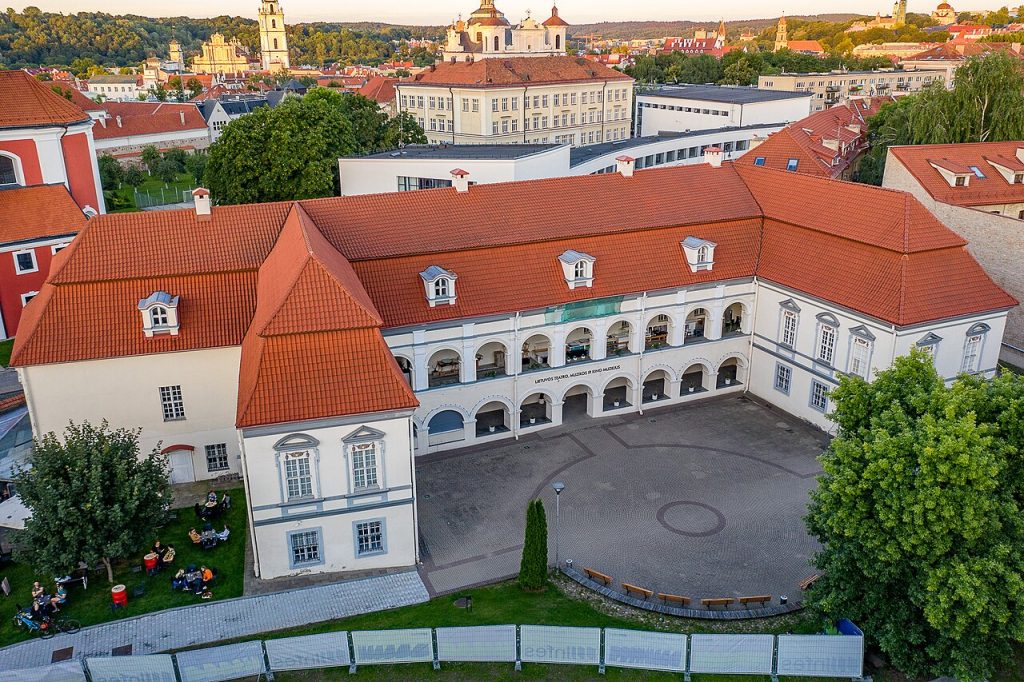
The capital of Vilnius, once known as the “Jerusalem of the east” has few Jewish monuments today. However, in the last few years, the Museum of the Gaon of Vilnius has made significant efforts to promote the city’s Jewish culture and heritage.
The Shulhof, the large 3000-seat synagogue built in 1630, was partly destroyed by the Nazis in 1941. The remains of the synagogue were razed after the war by the Soviets, who constructed a building complex on its former location. The current synagogue , located at 39 Pylimo Street, is a modern building of no particular interest. The Jewish community of Lithuania today numbers around 5000 members and publishes a newsletter entitled Jerusalem of Lithuania, with articles in English. The community’s institutional buildings are concentrated on Pylimo Street: the administrative offices at number 4 also house the Israeli Center for Art and Culture.
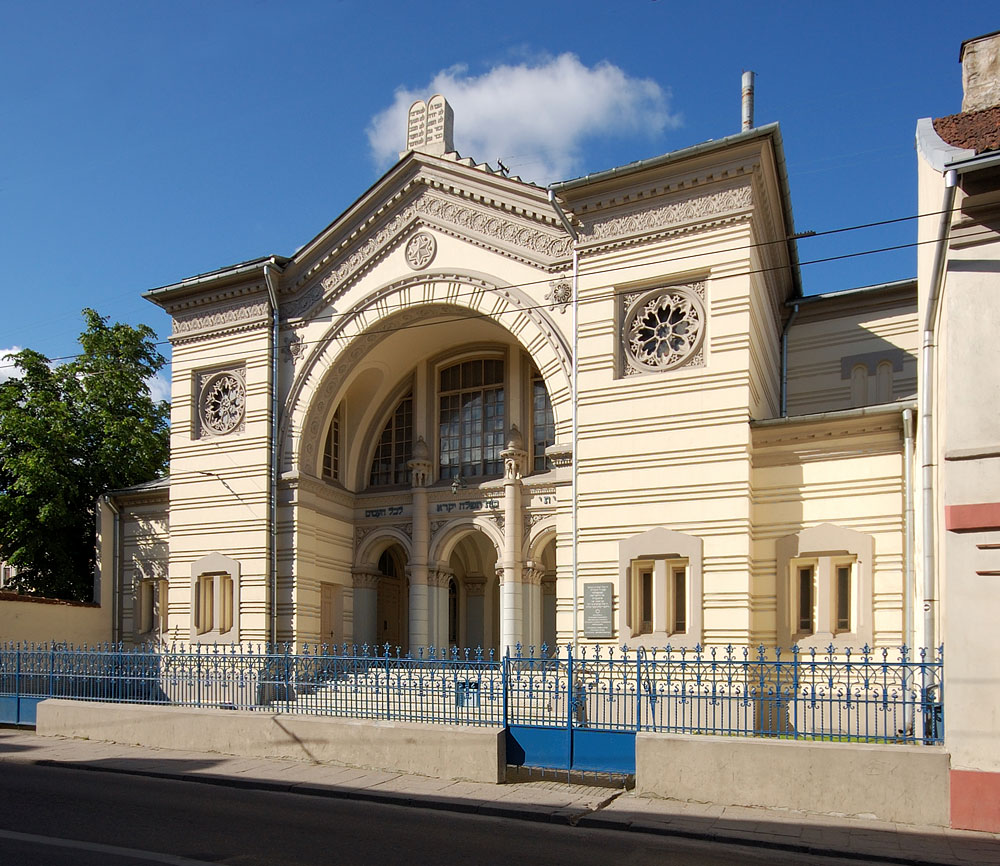
Apart from the renovated remains of the former ghetto -you can find an engraved marble map of it at the main entrance of the ghetto- the major monument of interest is the Gaon of Vilna’s tomb. In the recent past, the gaon’s tomb was located in the Jewish cemetery of Shnipishok (a district in the city, also called Snipiskis), to the north of the Neris (Viliya) River. It is now to the northwest of the former ghetto in the Dembovka cemetery, known by the name Saltonishkiu and close to Virshulishkes and Sheshkines. The exact site of the Gaon’s tomb is uncertain, since, under the Communist regime, the gaon’s corpse was exhumed and reburied with others, including that of Count Potocki, a Polish nobleman who converted to Judaism. The remains of another cemetery on Zaretchna Street still exist.

The Chabad center , managed for more than fifteen years by the American rabbi Sholom Ber Krinsky is a very lively and dynamic cultural and religious gathering.
The University of Vilnius now houses an interesting research center on stateless cultures that includes a department of Jewish and Yiddish studies.
The new Center for Jewish Culture offers activities, an information center, an exhibition space, a coffee place and a virtual museum of the Jewish Vilnius on the website.
While continuing your visit of the Jewish Vilnius, you’ll meet, at the corner of J. Basanaviciaus and Mindaugo streets, the statue of a little boy looking up. This child is Romain Gary, born Roman Kacew, who lived a few steps from here (Basanaviciaus 18). The statue evokes an anecdote from The Promise of Dawn when the young hero attempts to eat his leather shoe to impress a fellow little girl.

Housed in what was once a Jewish theater, you can visit the Museum of the Gaon of Vilnius. which hosts other museums under its jurisdiction. In a green wooden house, the Shoah Museum of Vilnius offers information on the history and culture of the Lithuanian Jewish community, the Litvaks in Yiddish. The majority of this community was assassinated during the Second World War. The museum is not afraid to talk about Lithuanian collaboration in those dark times and leaves no aspect of the topic untouched. One unusual section is the Malina, a ghetto hideout video and audio installation in which real diary entries can be experienced.
Also part of the Gaon Museum, the Paneriai Memorial commemorated the 70,000 victims, more than half of them were Jewish, assassinated on this site by the Gestapo, the SS, and the Vilnius Special Squad between July 1941 and 1944. A small museum displays copies of archival photographs – the images are extremely hard to watch.
Inside the Gaon Museum, you can visit the Samuel Bak Museum, which was inaugurated in November 2017. This Jewish artist, born in Vilnius in 1933, was with his mother the only survivor of his family of the Vilnius ghetto. After wandering from transit camps to displaced refugees camps, they finally emigrated to Israel in 1948. He studied at the Bezalel Academy of Art, before moving to Paris, Rome, and then he finally settled in the USA. He came back to Vilnius for the first time in 2001.
To conclude on the great extension of the Gaon Museum, we should also mention that the Jacques Lipchitz Museum is currently closed for renovations, but will resume its activity in a near future. Two museums are also under construction: The Museum of the Litvaks Culture and Identity, and the Museum-Memorial of the Shoah in Lithuania and the Vilnius Ghetto.
In 2024, archaeological excavations uncovered part of the floor of the former Great Synagogue, which had been looted by the Nazis and razed to the ground by the Soviets. Previous excavations had uncovered the bimah.
That year saw the death of Fania Brantsovsky, aged 102, one of the last members of the Vilnius Ghetto Resistance. Brantsovsky, born Feige Jocheles in 1922, escaped from the ghetto in 1942, joining the FPO Partisan Maquis in the forests, under the command of Abba Kovner. She took part in numerous military operations against the Nazis. She met Mikhail Brantsovsky in this group of Partisans, whom she married after the war.
Remaining in Vilnius after the war, she helped to document the Nazi crimes committed during the Holocaust in the territories now under Soviet control. Still very active when Lithuania became independent, Fania Brantsovsky took part in sharing the local Jewish culture and the lost Yiddish language. With the help of Rachel Margolis, also a former member of the Partisans, and other survivors, she worked in the 1990s to create a Holocaust museum in Vilnius. When Yiddish professor Dovid Katz founded the Yiddish Institute at Vilnius University in 2001, he recruited Fania Brantsovsky as librarian. The institute, which organised summer programmes for Yiddish students from all over the world, closed its doors in 2018. She continued to teach Yiddish and guide visitors until she was 99.
Interview with Bernard Pucker, owner and director of Pucker Gallery, who has worked with Samuel Bak for over 50 years. A major reference in the artistic representation of Jewish history, the painter contributed to the creation of the Samuel Bak Museum in Vilna, the city where he was born.
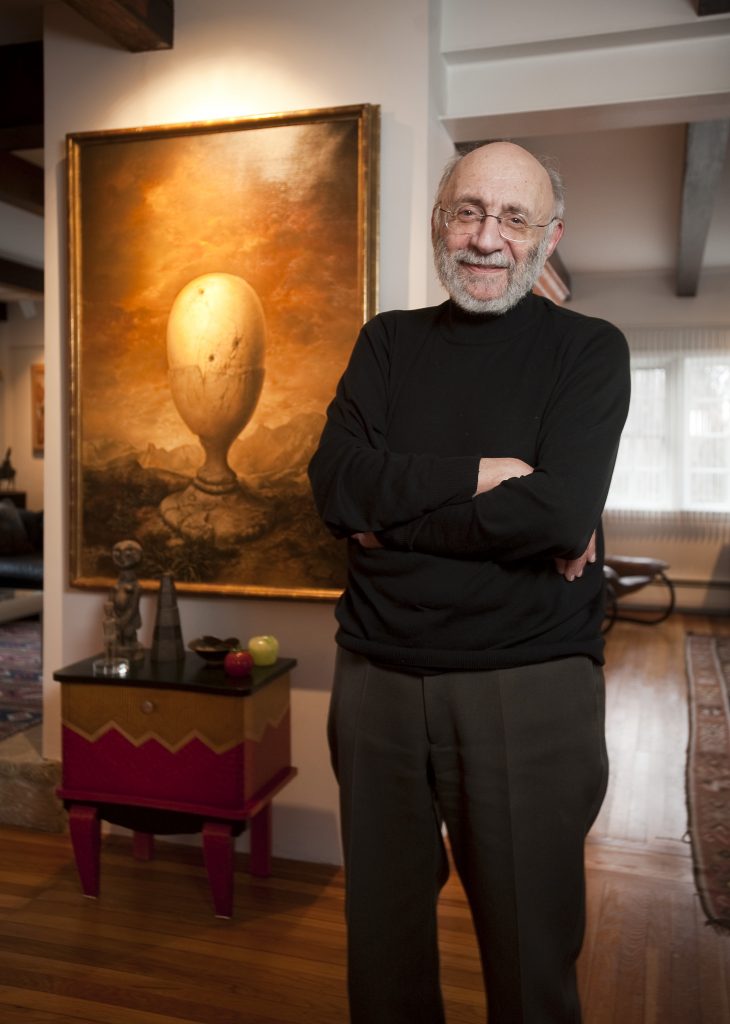
Jguideeurope: Which works painted by Samuel Bak are shown permanently at your gallery?
Bernard Pucker: There are approximately 35 of Sam’s paintings on permanent display at the Gallery. Our gallery is structured in such a way that most of the artists have their own little area where their work is on permanent exhibition. The gallery is 5,000 square feet which represents a great amount of space. In addition to that, we have sliding panels where some of Sam’s major paintings are exhibited, such as “The Family” and “The Ghetto of Jewish History”.
When and where did you meet Samuel?
My wife Sue and I lived in Jerusalem in 1959-1960. During that year, I was studying to be a rabbi and Sue was studying Hebrew. Sue was given $300 by a family member designated for buying Israeli art. This introduced us to Dov Safrai and the Safrai Gallery in Jerusalem. When we returned to the US, we began selling art for Safrai Gallery from our apartment. When we opened the gallery in October 1967, Sam Bak’s work was the first we received to exhibit on behalf of the Safrai Gallery. A year later, I met Sam in Israel. As a result of that meeting, we have been working together for more than 50 years!

Did art represent a way to reconcile himself with life after everything that happened to his family during the Shoah?
Not entirely because he had been drawing since he was 3 years old. It was his form of personal expression, even as a child. Art was with him in the ghetto of Vilna, during his hiding and travels, while at the Landsberg DP camp in 1946 and during his eventual arrival in Israel. In Bak’s case, art was a calling. He literally had little or no choice in pursuing his life as a practicing artist. He continues to work and is preparing 100 paintings for our next exhibition on the theme of still life. There is an online catalogue raisonne where you can see over 8,000 works created by Sam from 1946 until 2020.
I read in some articles that he recently experienced very emotional talks with students. Can you tell us a bit more about his will to transmit?
Sam is one of the most extraordinary storytellers and teachers that I know. Every time you ask him a question, you generally receive a full-blown painting in words! A recent experience was at the University of Nebraska in Omaha, where we did an exhibition called “Witness”. There, he specifically met with students about writing an autobiography and about accessing the past through their creative efforts in the present.
As a result, the University of Nebraska decided to build a Samuel Bak Museum for which he will donate 512 works to be exhibited on a rotating basis. It is a miracle beyond belief, especially in these days of pandemic, financial difficulties and the general unrest in our nation… It represents a significant investment by this university and their commitment to its students’ futures. In addition, it will serve to explore and expand the dialogue around issues of moral choice and philosophy and how we, as human beings, respond to that.
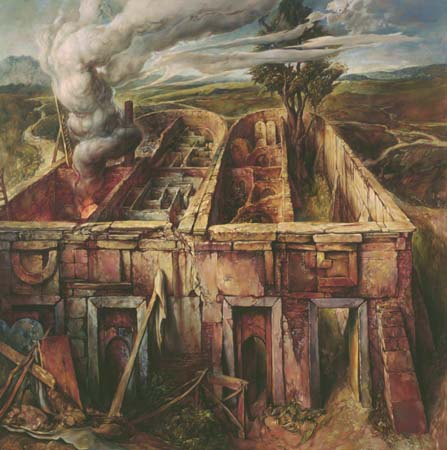
How did he experience his return to Vilnius in 2001?
In 1997, I invited Sam to join me on a trip called “Roots” with Sir Martin Gilbert, the historian, and a few friends. He said he could not go back, that it was too painful. A couple of years later, Rimantas Stankevicius, a man from Vilnius, came to New England to research righteous Christians, Juozas Stakauskas, Marija Mikulska and Vladas Žemaitis, all of whom had been instrumental in saving Sam and his mother. Rimantas then invited Sam to come back to Vilnius. He created a map with the old street names so Sam could find his way around. Sam has very vivid memories.
That lead to the 2001 exhibition there. I went with him on that trip. It was very emotional. He came with his wife and three daughters. We walked through the places where he had lived, where he had hid. Then we went to Ponary and the single headstone that memorializes the remaining few Jews that were killed in July 1944. His father was one. Sam stood in front of that stone and poured onto the ground a mixture of Sahara sand and the ashes of his stillborn grandson so that his father and grandson could be reunited in Ponary. It was an amazing experience. The book Return to Vilna presents paintings Sam did after this visit to Vilna.
Rimantas continues to be a guardian angel for Sam. He not only encouraged Sam to come back to Vilna, but helped create a Samuel Bak museum there. Sam gave them 126 paintings and we have directed numerous donors to give additional works to the museum. The staff there, while being mostly non-Jewish, is very motivated to share Jewish cultural heritage. They use his art to reflect on the past experiences of Jews in Vilna and to build a much better future for all.

Pucker Gallery, 240 Newbury Street, Boston Massachusetts 02116
Tel : + 1 617 267 9473
https://www.puckergallery.com/